
Trek Vs Giant Bikes: Which Is Better?
Trek and Giant are arguably two of the largest and most reputable bike brands globally. So, it’s always debatable which is the superior brand between Trek vs Giant bikes, seeing that each brand claims supremacy over the other.
Giant offers a wide selection of top-end bikes at friendlier prices than Trek, but Trek is better suited to professional racers due to its innovative suspension and designs.
But overall, there is so much to separate the two bike brands in terms of production volume, bike cost, frame technology and strength, suspension technology, components quality, warranty, design, brand reputation, and bike preference.
So, I’ll help you compare Giant Bicycles and Trek on those grounds. I’ll also compare the bike categories: road bike, MTB, gravel bike, hybrid, and e-bike.
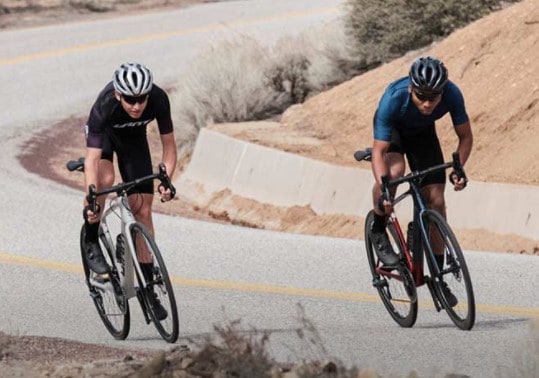
Trek Vs Giant Bikes Table Summary
Here are the peculiar differences between Trek and Giant bicycles.
What Is the Difference Between Trek and Giant?
Let’s look at the differences between the two top bike brands:
1. Production Volume and Bike Cost
Giant has its factory in Taiwan. The location enjoys a supportive supply chain that allows the manufacturer to source the materials cheaply and produce the bikes in less time.
As a result, the manufacturer can produce the bikes in large volumes. And since they get the raw materials cheaply, they make their bikes more affordable.
Mark you; Giant also makes bicycle frames for other leading bike brands, including Trek, Schwinn, Bianchi, and Specialized.
As for Trek, the fact that the manufacturer sources the frame and components from Giant and other third parties means they don’t make as many bikes as Giant.
Furthermore, Trek invests in research and design to distinguish itself from Giant and others. So it prices its bikes slightly higher.
Verdict – Giant has a larger production volume and sells cheaper than Trek.

2. Frame Technology
Both Giant and Trek are always at the forefront of bicycle innovation. They pride their innovative, lighter, stiffer, stronger, and durable frames.
Giant is known for CADEX carbon fiber frames, which they unveiled in 1987. It’s also the first brand to employ computer-aided design (CAD) in its carbon fiber road bikes.
Overall, Giant’s carbon fiber bikes are lighter, stronger, stiffer, and durable.
And when it comes to aluminum, Giant is also known for Aluxx aluminum alloy frames. The frames are also lightweight and durable.
On the other hand, Trek is known for OCLV (Optimum Compaction Low Void) and alpha aluminum technology.
Both frame technologies promise lightweight, robust, stiffer, and comfortable frames. The difference is that OCLV frames are more high-end than alpha aluminum frames.
Verdict – Both bike brands have patented technologies that make their frame stronger, durable, and lightweight. So, it’s an even score here, in my view.
3. Frame Strength
Trek prioritizes in better strength-to-weight ratio, enabling its lightweight bikes to hold up to 300 pounds. While some Giant bikes can hold that much, a majority hold less.
Verdict – Due to having a higher strength-to-weight ratio, Trek has stronger frames than Giant.
4. Components
Giant not only gets its frames cheaply but also its components. They take the time to research the best quality components for cheap, buy them in bulk, and obtain huge discounts.
That, however, doesn’t mean that Trek uses inferior components. No! The difference is that Giant offers the same components as Trek but only at a slightly lower price.
Note that these two manufacturers get most of their components from SRAM, Shimano, KMC, and other reputable third parties, which means they have the same quality.
Verdict – These two bikes often get their components from the same suppliers. So, they have the same quality. The only difference is that Giant gets them cheaply, making the bikes more affordable than Trek.
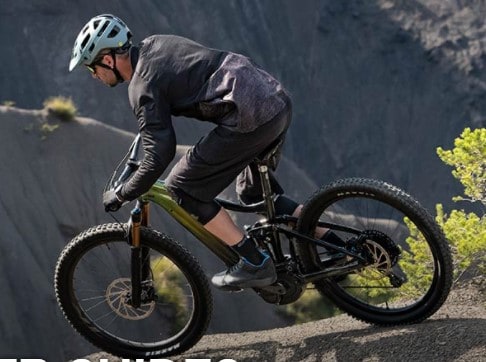
5. Suspension Technology
These two bike brands share a couple of suspension technologies and have a few patented options that only apply to them.
For example, both employ ABP (Active Braking Point) and ReAktiv suspension, which promise unmatched comfort.
Other than the two, Trek sets itself apart by utilizing Full-Floater and IsoSpeed Suspension. Full-Floater suspension makes you feel like you are floating on air. IsoSpeed, on the other hand, gives Trek road bikes a stiffer feel, which is essential for racing.
Giant conversely is known for the Maestro System in addition to ReAktiv and ABP. The Maestro Suspension generally offers Giant mountain bikes unmatched climbing power.
Verdict – Both bike brands employ ReAktiv and Active Braking Point suspensions and have their top-performing patented suspensions.
6. Giant Vs Trek Bike Design
Despite their build quality and high-end design, Giant bikes are among the simplest you can find. These bikes are not flashy like Trek bikes.
Trek is known for going the extra mile to distinguish its designs from the rest. So, the bikes are often flashy.
Verdict – Trek bikes are more innovative and flashier than Giant bikes. Giant bicycles are all about quality and performance and not aesthetics.
7. Usage Preference
Though Giant makes bikes for everyone, the choices are not the best for racers and heavyweight riders. Essentially, their suspensions have lower links that stretch a lot under too much weight and when you ride at high speed.
In contrast, Trek bikes have less flexible lower link suspensions, which won’t stretch under too much weight or ride fast. As a result, they are best for racers, especially pro racers and heavyweight riders.
Verdict – Trek bikes suit heavyweight bikers and pro racers more. Giant bicycles are suitable for everyone else apart from the two groups.
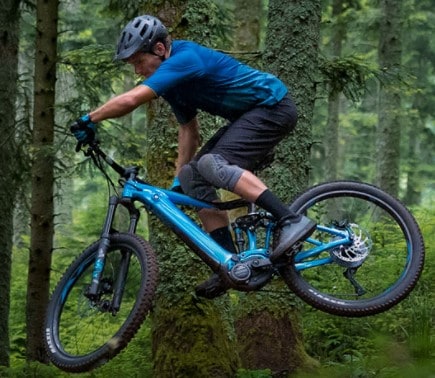
8. Brand Reputation
Giant and Trek are two of the oldest bike brands, and they enjoy a reputation that most cannot match. Globally, their reputation supersedes their popularity.
But overall, Trek is more reputable in the elite cycling world as it has won more Tour de France titles.
Verdict – These two bike brands are pretty reputable, but Trek edges Giant slightly, having won more Tour De France races.
9. Trek Vs Giant Warranty
Trek and Giant are famous for offering good warranties to back their pricey price tags.
Giant generally offers the following:
- Limited lifetime warranty on all its frames apart from downhill options
- 3-year lifetime warranty on downhill options
- 1-year warranty for decals and frame paints
Note that when it comes to non-Giant branded components like the groupsets, they are all subject to their respective manufacturers’ warranties.
As for Trek, you can expect the following coverages:
- Limited lifetime warranty on most bike frames
- 5-year warranty for its full-suspension bicycles’ swing arms
- 3-year warranty for its aluminum swing arms
- 1-year warranty for the decals and frame paint
Like Giant, all non-Trek branded components come with their respective manufacturer’s warranties.
Verdict – There is no clear winner here as both brands offer lifetime frame warranties for most of their bikes and several other coverages.
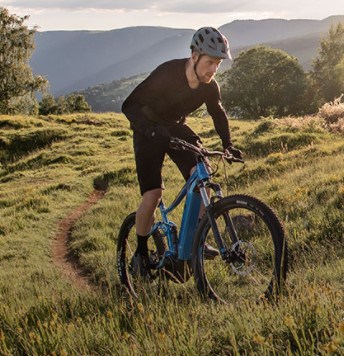
Comparing Individual Trek and Giant Bikes
Trek vs giant mountain bikes.
Giant and Trek mountain bikes have so much in common. For starters, they both feature lightweight, strong, and stiff frames with lifetime warranties. They also employ the most advanced suspensions.
The difference is that Trek’s Full-floater and ReAktiv suspension makes them better racers, while Giant’s Maestro System makes Giant mountain bikes better climbers.
Also, note that Trek suits heavyweight riders more because its suspensions are less flexible, and therefore the mountain bikes are not very shaky at high speed.
Trek Vs Giant Road Bikes
Giant and Trek road bikes also share a lot like their MTB counterparts. The two brands employ the most advanced and lightweight frames and feature top-tier components.
Price-wise, Giant road bikes are more affordable than Trek, but Trek has the upper hand because of IsoSpeed suspension. IsoSpeed makes Trek road bikes stiffer and, therefore, faster racers.
Trek Vs Giant Hybrid Bikes
Trek and Giant hybrid bikes are almost alike. They all come at budget-friendly prices and enjoy limited lifetime warranties. The difference is that Trek hybrid bikes are more versatile than Giant hybrids.
You can easily accessorize a Trek hybrid bike with fenders, seats, water cages, racks, and other add-ons.
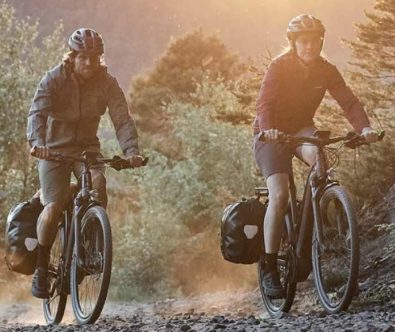
Trek Vs Giant Gravel Bikes
Trek and Giant gravel bikes have so much in common. They are robustly built to take on rowdy usage and are comfortable to ride.
The difference is that Trek gravel bikes have a better strength-to-weight ratio, thus have a larger carry capacity. Giant gravel bikes, however, are more affordable, therefore, best for users on a budget.
Trek Vs Giant E Bikes
Both Giant and Trek e-bikes are all about comfort, fast riding, and ease of commuting. They also come with lifetime frame warranties and have impressive motors and batteries.
Giant’s EnergyPak carriers make Giant e-bikes better for long-distance rides and commutes as they promise a more extended battery range. In contrast, Trek’s RIBs (Removable Integrated Battery System) make Trek e-bikes sleeker and better racers.
People Also Ask
1. is trek or giant better.
There is no better or worse bike brand between Trek and Giant, as choosing between them depends on what you want. If you want a racing bike or a stronger bike for an overweight person, get a Trek. But if you want the bike for any other reason, go for Giant.
2. Are Trek Bikes Made by Giant?
Giant makes some bike frames for Trek, Bianchi, Specialized, and other brands. Note, however, that Trek has an independent factory that handles most of the bike frames and general assembly of the bikes.
3. Why Are Giant Bikes So Expensive?
Giant bikes are expensive because they are high-end. The manufacturer assembles the most high-end components and lightweight frames and employs advanced suspensions and designs.
- Ibis Ripmo Vs Ripley
- Scott Bikes Vs Trek Bikes
- Specialized Vs Trek Vs Giant
Closing Thought on Trek Vs Giant Bikes!
Generally, choosing between Trek and Giant solely depends on the cyclist and budget. If you are a racer or heavyweight cyclist, Trek suits you more. But if you are none of the two, go for Giant as it offers a wide selection of bikes at varying price points.

Trek vs. Giant Bikes Comparison: Which Brand Is Better?
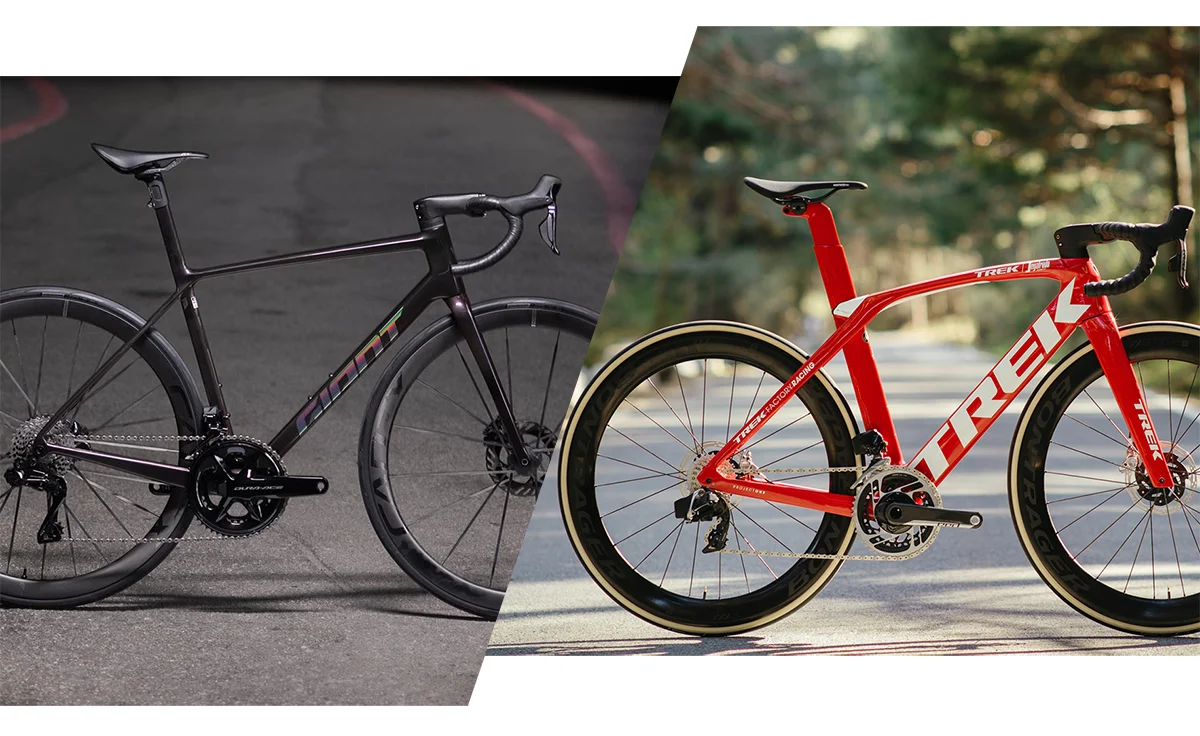
Trek and Giant are two titans of the cycling world, dominating the industry’s sales numbers and winning the hearts of fans all around the world.
Both brands have long and rich histories, a diverse bike ranges, and innovative technologies under their respective names that have changed the course of the sport.
Knowing that, it can be challenging to choose between the two, even for experienced riders. So, which one is right for you?
In this comprehensive guide, we’ll analyze both brands and take a closer look at the most important aspects to consider, such as history, bike range, build quality, value for money, technologies, brand reputation, and much more.
Trek vs. Giant Brand and History Overview
Trek vs. giant bikes range, trek’s and giant’s key technologies and innovations, trek vs. giant price comparison and value for money, brand reputation and customer satisfaction, giant vs. trek frame warranty, trek vs. giant grand tour wins, final thoughts: is trek or giant better, trek bikes brief history.
- Founded: 1975
- Founded by: Dick Burke and Bevil Hogg
- Headquarters: Waterloo, Wisconsin, USA
- US Market share: 22.5% (2023)
- Instagram following: 2 Million Followers
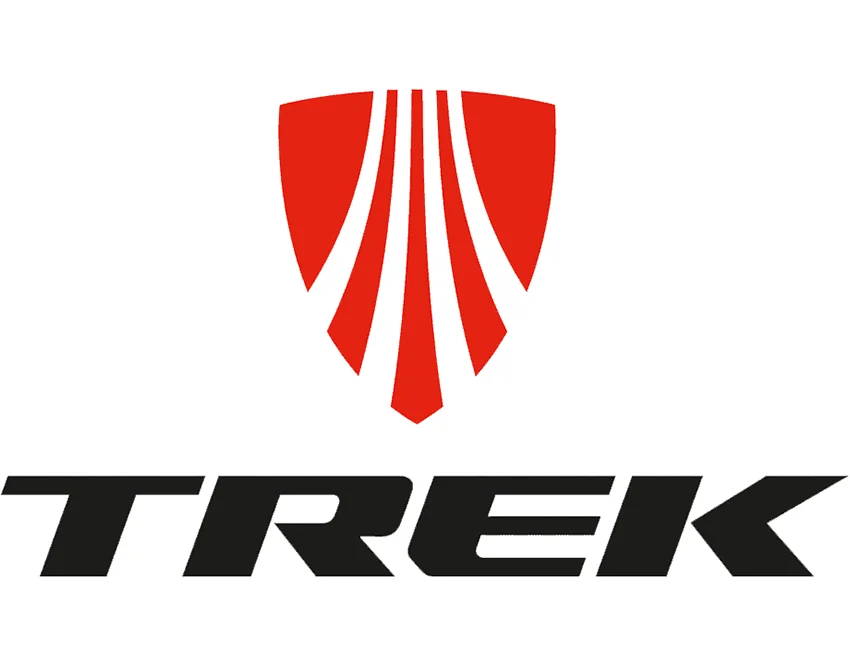
In 1975, Dick Burke and Bevil Hogg created what is now one of the world’s most iconic brands— Trek Bikes . Within four years starting with its hand-brazed steel frame, the company had close to $2M in sales.
In the 80s, continued its expansion, moving to a larger manufacturing facility and expanding its offering to include complete bikes. In 1981, they released the Pro 750 and 950 steel road bikes; two years later, their first mountain bike, and in 1984, Trek entered into the components space with Trek Components Group.
Trek continued to grow and innovate, pioneering new materials and technologies, such as aluminum, carbon fiber, and suspension systems, to create lighter, faster, and more comfortable bikes. Trek has also sponsored teams and athletes for decades, and has been associated with some of the most successful and influential cyclists in history, such as Greg LeMond, Lance Armstrong, Fabian Cancellara, and Jens Voigt.
From its humble beginnings with hand-brazed steel frames, Trek Bikes rapidly grew into a cycling industry leader, renowned for technological innovation, professional sponsorship, and global reach.
Trek continues to sponsor several professional and amateur racing teams, including the World Tour Lidl-Trek road racing team (2024) and Trek Factory Racing mountain biking team. Additionally, they fund charitable and environmental initiatives.
Trek is still headquartered in Waterloo, where it operates one of its five Wisconsin factories. Its subsidiaries include Electra, a cruiser-specific brand; Bontrager, the components and accessory brand; and Trek Travel, a cycling tour operator. Trek currently has distributors in over 60 countries and sells close to a million bikes a year.
See All Trek's Bikes
Giant Bikes Brief History
- Founded: 1972
- Founded by: King Liu
- Headquarters: Dajia, Taichung, Taiwan
- Market share: 10.5% (2023)
- Instagram following: 716K Followers
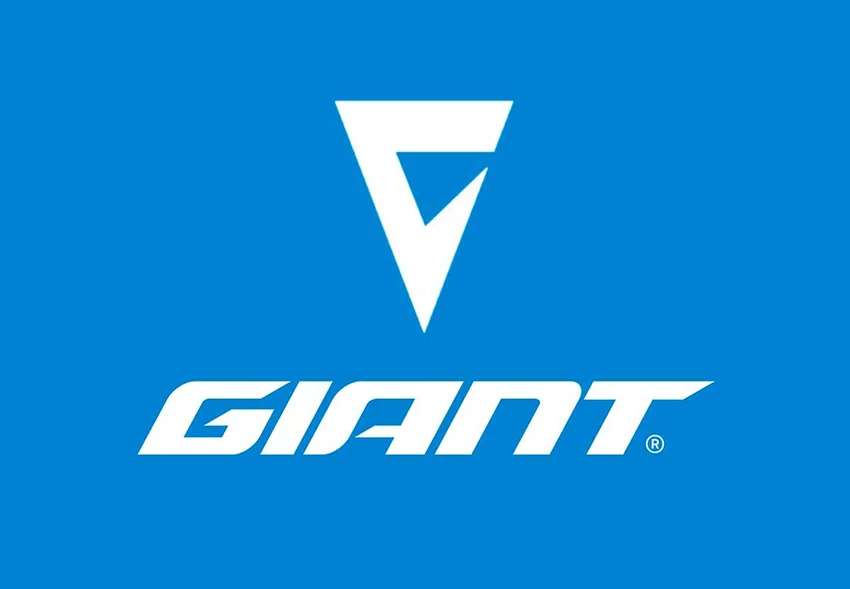
Giant Bikes is the world’s largest designer and manufacturer of bicycles under both its own brand and manufacturer for other bike companies. For almost 10 years, Giant was solely a manufacturer contracted by other brands to make their bikes at its factories in Taiwan. In 1981, Giant launched its own brand of bikes.
Like Trek, Giant’s research and development has helped drive the industry forward over the years. Innovations in the computer-aided design (CAD) of carbon fiber bikes brought this material to the masses in the form of the CADEX road bike. Additionally, in 1995, they created the compact road frame, which is still used widely today.
Giant Bikes transitioned from building bikes for other brands to becoming the world’s largest bike company, known for making carbon bikes affordable and supporting pro racing.
Over the years, Giant has sponsored various professional teams and had its industry-leading bikes, such as the TCR, used to win many races.
Giant’s behemoth operation comprises over 5,000 employees worldwide and two subsidiary brands.
The first one is Liv, a company that specializes in female-specific bikes and products and sponsors a female professional road cycling team. The other one is Momentum, a lifestyle bike brand that produces more approachable bikes than the typical performance-focused bikes under the Giant branding.
See All Giant's Bikes
Both Trek and Giant Bikes are known for manufacturing a huge range of different types of bikes.
They offer models in almost all popular bike categories, including mountain, road, gravel, urban, and electric bikes.
Below, we’ll do a detailed breakdown of each of these categories and compare Trek vs. Giant in terms of bike range, value for the money, technologies, and more.
Mountain Bikes
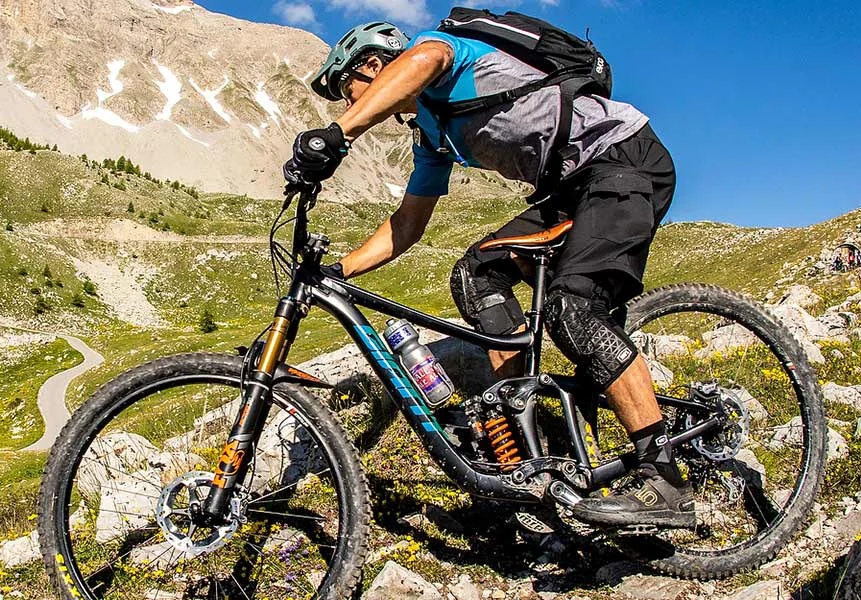
When it comes to mountain bikes, both brands make top-of-the-line models that are ridden by some of the best MTB athletes in the world. However, they make a range of models suitable for beginners, enthusiasts, and amateur racers as well.
In terms of pricing, both Trek’s and Giant’s models start at around $500 and reach $15,000 for the most expensive models. Therefore, anyone can find a price range that suits their budget.
One area in which Trek dominates Giant is the selection. At the moment of writing this review (April 2024), Trek has 140 models on offer, whereas Giant only offers 50.
Some of Trek’s most popular models include the Supercaliber, Fuel EX, Slash, Marlin, Rail, Top Fuel and Fuel, Procaliber, and so on. On the other hand, Giant’s top-selling models include the Trance, Reign, Glory, Anthem, XTC, Stance, Fathom, Talon, and ATX.
When it comes to the value for the money you get for your money, it’s tough to come to a definitive conclusion. However, entry-level Trek’s bikes look and feel more sophisticated than Giant bikes, for example the Marlin models. On the other hand, Giant has some great mid-priced deals, such as the Stance full-suspension bike for $1,400.
Related reviews:
- Review of Trek Marlin 4
- Review Of Trek Marlin 5
- Review Of Trek Marlin 6
- Review Of Trek Marlin 7
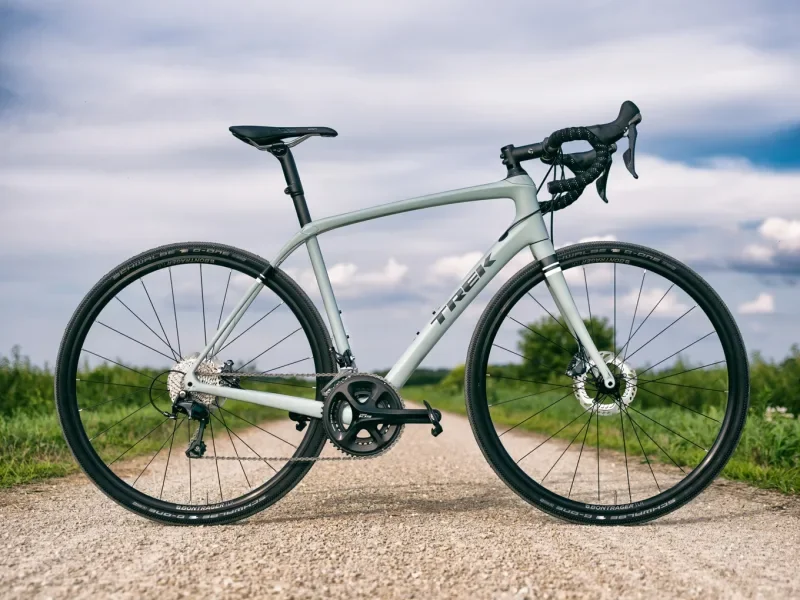
If you’re a sworn roadie, you won’t have an easy time choosing between Trek and Giant. Both models have sophisticated and lightweight road bikes in different price categories.
Trek again takes the win when it comes to quantity with almost 80 models on offer, compared to Giant’s 45 models. But who takes the lead in quality?
It’s tough to answer this question, as both Trek’s and Giant’s bikes are a common sight in Grand Tour races such as the Tour de France, Giro d’ Italia, and La Vuelta. Trek’s flagship road bikes include the Domane, Madone, Emonda; Giant boasts models like Propel, TCR, and Defy.
If you’re looking for an endurance road bike, we recommend going with Giant’s Defy, known for offering more value than Trek’s Domane. However, if you’re a racer and you have money to spare, Trek’s Madone and Emonda are hard to beat.
However, if you’re shopping for an aluminum road bike on a tight budget, Giant offers its Contend model for as little as $800, whereas Trek’s Domane AL starts at around $1,150.
All in all, Trek’s road bike legacy and pedigree are hard to beat, but Giant’s pricing and value for the money make choosing between the two a lot harder.
- Trek Domane AL 2 Review
- Trek Domane AL 3 Review
- Trek Domane SL 4 Review
- Trek Domane SL 5 Review
- Trek Domane SL 6 Review
Gravel Bikes
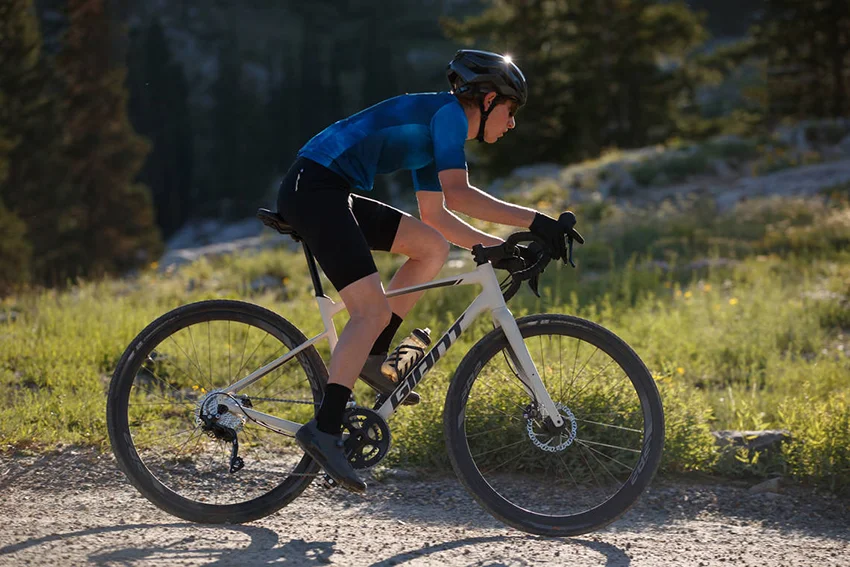
Gravel riding is a cycling discipline that has been gaining popularity incredibly quickly. Unfortunately, both Trek’s and Giant’s lineups are rather thin.
Both brands offer one gravel model only, with carbon and aluminum frames and multiple build levels—Trek has the Checkpoint, while Giant has the Revolt.
Giant’s Revolt is significantly lower priced, offering builds between $1,350 and $7,500. Trek’s Checkpoint, on the other hand, ranges in price from $1,700 to $12,250.
So, it’s pretty clear that if you’re a beginner or you’re shopping on a tight budget, Giant is the way to go. But if you want sophistication, higher-end components, and better looks (which is subjective), we recommend choosing the Trek Checkpoint.
Another big difference between the two is the fact that Giant’s top builds come with front suspension, while Checkpoint has no suspension, except for the IsoSpeed frame technology.
The final choice between the two brands, in our opinion, boils down to your riding style and intended use. If you’re buying a gravel bike to do some bikepacking and exploring, Checkpoint takes the lead. However, if you’re looking to do serious racing and you need suspension, we believe Giant’s Revolt is a better choice.
City and Active Bikes
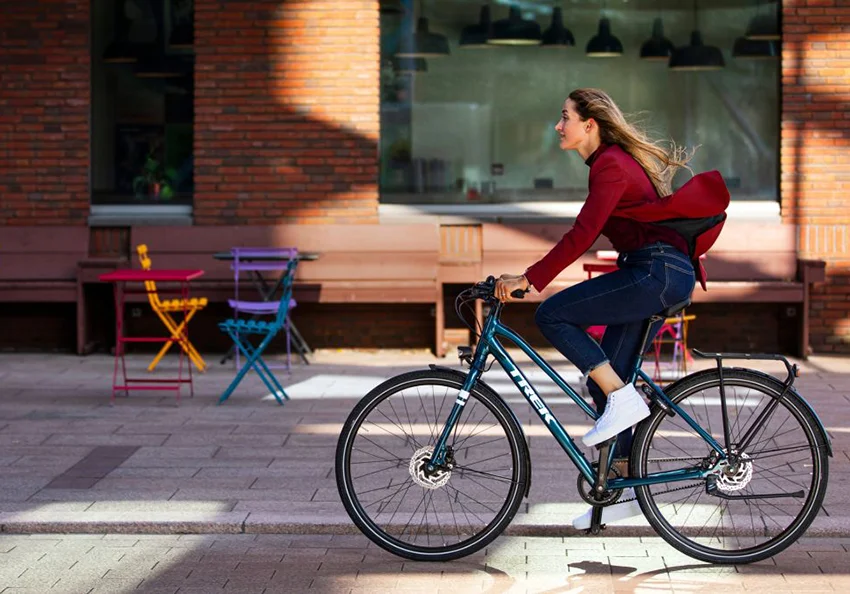
One thing that Giant and Trek have in common is that they have sister brands that focus solely on city and active bikes. Therefore, Trek and Giant don’t have too many bikes in these categories under their names.
Instead, Trek has Electra urban bikes, whereas Giant has Momentum bikes. Electra specializes in cruiser, city, and electric urban bikes, whereas Momentum has a large selection of analog and electric models for commuting, leisure, and utility.
Still, Trek offers a few popular urban models, such as the FX, Verve, and Dual Sport; whereas Giant has only two—the Escape and Cypress.
All Giant’s escape models are low-tier and cost under $1,000. On the other hand, Trek’s range is richer and includes models in several price categories.
But, taking everything into consideration, we’d give Giant’s Momentum a slight advantage over Trek’s Electra because of better design, a wider selection of models (including cargo bikes), and lots of electric builds.
However, if you want to pay less and get good quality and a focus on comfort, you should consider Electra. With its Flat Foot design, it’s the ultimate choice for leisure riding.
Electric Bikes
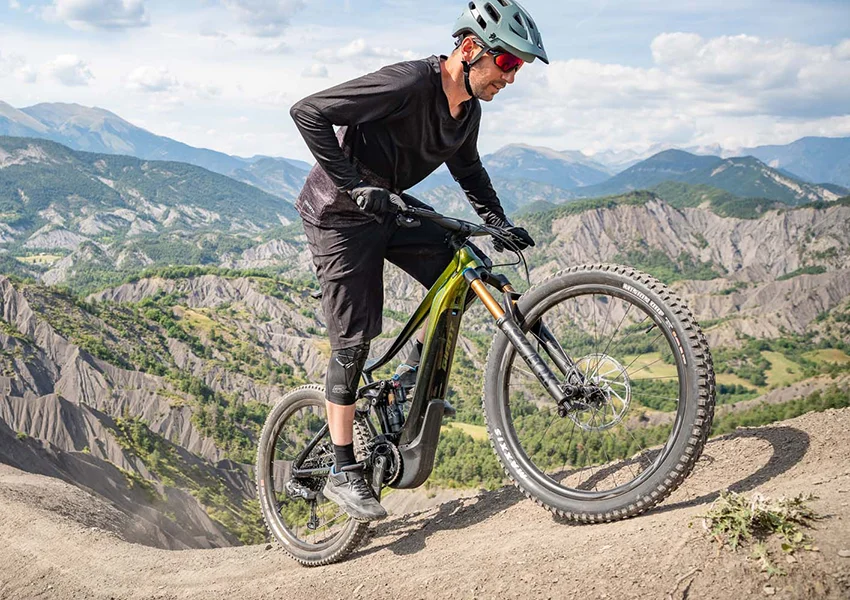
More and more people are hopping on electric bikes recently, so big brands need to meet the demand. Both Trek and Giant are doing a good job in this regard, though Trek has allotted more resources to their electric lineup.
In general, both brands offer most of their flagship models in both analog and electric versions.
For example, Trek’s Domane, Dual-Sport, Fuel EX, FX, Verve and Rail have electric counterparts equipped with high-quality Bosch motors. On the other hand, Giant offers its Talon, Trance, Stance, and Reign models with its proprietary SyncDrive motors. Unfortunately, Giant doesn’t have any electric road bikes, such as Trek’s Domane+.
Of course, in addition to these ebikes, both brands offer additional electric models through their sister brands Electra and Momentum.
We’d say that Trek has a lead in this category mainly because it has a wider range of ebikes on offer and uses premium Bosch electronics. That’s not to say Giant’s SyncDrive is bad, because it’s not, but Bosch is the leading name in the industry.
Both Trek and Giant have been at the forefront of technological innovation in cycling for decades. Both brands have pioneered several systems and improvements that have changed the course of the sport.
Let’s take a closer look at some of the most important ones.
Trek’s Key Technologies and Innovations
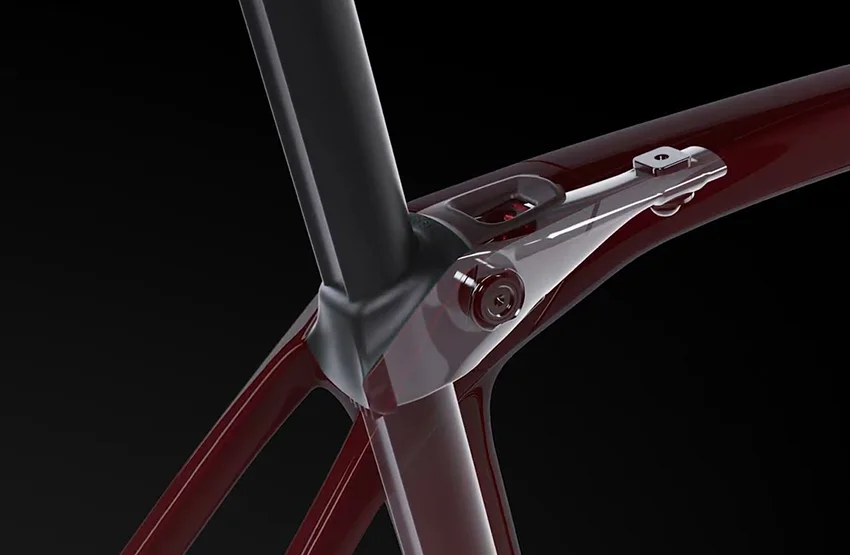
- OCLV Carbon: Optimum Compaction Low Void (OCLV) Carbon refers to Trek’s special carbon fiber layup used for manufacturing lightweight and stiff carbon framesets found on Trek’s best bikes . This layup system allows Trek to control which types of carbon fiber and resin are used, as well as their orientation, leading to increased strength and decreased weight.
- IsoSpeed: IsoSpeed is a decoupling technology seen on numerous Trek’s racing and endurance road bikes. This technology separates the seat tube from the top tube, allowing them to flex independently and absorb road chatter and vibrations. This translates to a smoother ride, improving comfort and reducing fatigue.
- Active Braking Pivot (ABP): This is Trek’s proprietary suspension technology seen on their full-suspension mountain bikes. This system allows the suspension to remain active even during braking, preventing it from stiffening and improving grip and control.
- WaveCel Helmet Technology: This technology refers to a collapsible cellular material found on Bontrager helmets that collapses under impact and absorbs energy during hard impacts. It’s found to be more effective than standard foam helmets at reducing the risk of concussions.
- Blendr System: Blendr is an innovative universal mounting system that allows for interchangeable attachment of cycling computers, lights, and other accessories directly to stems found on Trek’s bikes.
Giant’s Key Technologies and Innovations
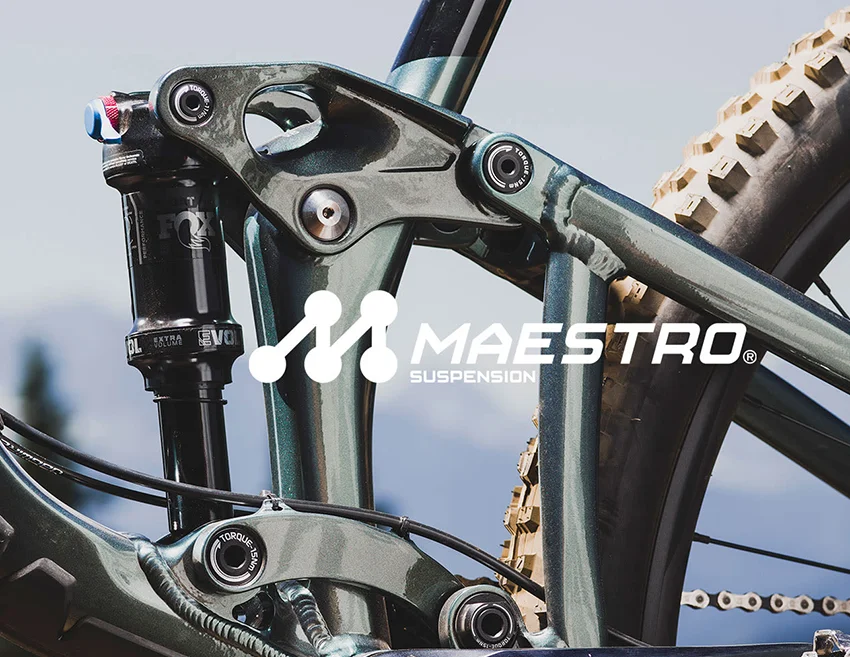
- Compact Road Geometry: Most modern road bikes feature a sloping top tube, known as compact road geometry, which was pioneered by Giant. This design has numerous advantages over traditional horizontal top tube designs, such as increased frame stiffness, improved rider fit, reduced weight, and better responsiveness.
- ALUXX Aluminum: Giant is the world’s leading manufacturer of bike frames and their ALUXX aluminum is known for having the best strength-to-weight ratio. These frames are known to be incredibly light and responsive.
- Maestro Suspension: Maestro is Giant’s suspension design found on the brand’s full-suspension mountain bikes. This design uses four pivots and two floating linkages, which improves pedaling efficiency and minimizes pedal-induced bobbing.
- OverDrive Steerer Tube: The OverDrive steerer tube standard introduces a larger diameter steerer tube that improves front-end stiffness, control, and steering precision.
- SyncDrive Motors: SyncDrive mid-drive motors have been developed by Giant and Yamaha and are specifically designed and tuned for Giant’s electric bikes. They provide smooth, quiet, and natural-feeling assistance.
Value for the money is one of the main things prospective buyers are interested in when considering Trek Bikes vs. Giant Bikes.
While the two brands are pretty similar in terms of the total price range, some differences begin to appear when you take a deep dive into individual categories.
Let’s dissect the bang for the buck you get if you’re a budget-conscious rider, enthusiast, or a pro.
Budget-Conscious Riders
When it comes to budget-conscious riders, both brands have a decent selection of models in the $500-$800 range. You’ll find similar specs in this price range, so you won’t go wrong whichever of the two names you choose.
The main way to get more value for the money in this category is to be on the lookout for promotions and discounts, which would allow you to save a few hundred dollars at best.
Enthusiasts
Cycling enthusiasts are mainly interested in mid-range bikes that cost between $1,000 and $2,500, which is where real differences between Giant and Trek start to appear.
Namely, both brands have a huge selection of bikes in this price range, but Trek tends to lean a bit pricier for comparable specs.
Giant will typically offer slightly better specs for the same price compared to Trek in this category, though Trek might offer a better and lighter frame.
Pros and Hobbyists with Deep Pockets
In the high-end category of bikes that cost more than $2,500, both brands offer a decent lineup of high-tech models that cost upwards of $10,000.
Price-wise, you’ll see variations based on the model and subcategory, though Giant seems to offer slightly better specs for the money. However, Trek might excel in a specific type of frame design or suspension, but Giant takes the lead by offering a better drivetrain at a specific price point.
Overall Value for Money
Our overall impression is that Giant has a slight advantage in terms of value, particularly for enthusiast-level riders. Giant often manages to squeeze in slightly nicer components at similar price points compared to Trek.
However, this isn’t a rule set in stone, and the difference isn’t always gigantic. In addition to the value for the money, it’s also important to consider your personal preferences, such as aesthetic tastes and riding style.
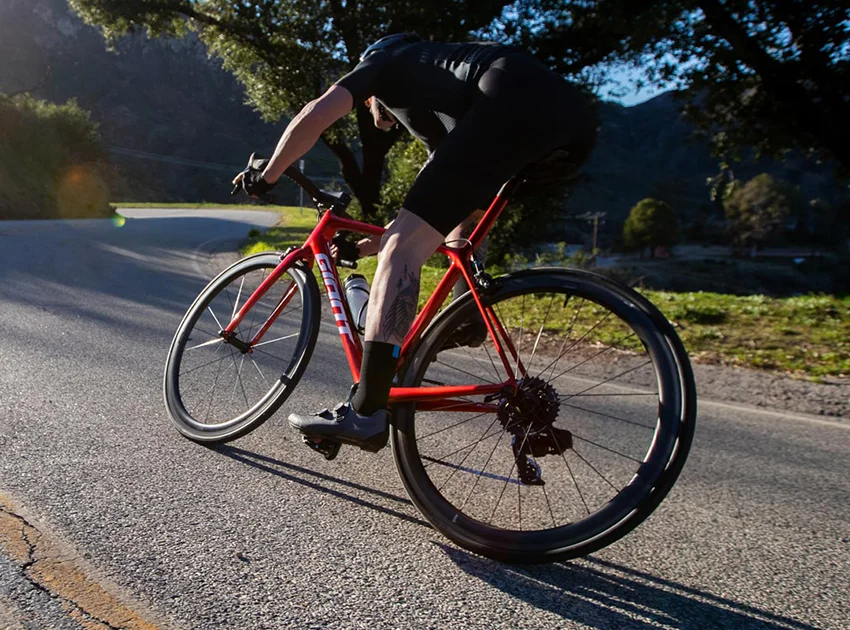
Both Trek and Giant are top-tier brands with stellar reputations in the industry. They’re regarded and respectable and responsible companies with great customer support and excellent customer satisfaction.
Both brands have thousands of authorized dealers around the world, including in the United States, which makes it easy to service your bike or replace parts under warranty.
There are some slight differences, though. Trek has a small lead in brand perception due to its association with professional road cycling and its USA origins. On the other hand, Giant holds a slight edge when it comes to the value proposition, offering slightly better components at a comparable price point.
Therefore, customer satisfaction levels are pretty high for both brands. Riders value Trek’s and Giant’s bikes’ reliability, performance, design, and innovative features.
Being two of the world’s biggest cycling brands, it doesn’t come as a surprise that Giant and Trek have excellent warranty policies that they respect without question if all conditions are met.
However, Trek offers slightly better terms than Giant. Namely, Trek offers a lifetime warranty on frame and rigid fork, main frame, and full-suspension swing arms. On the other hand, Giant offers a lifetime warranty on frames only, with the exception of downhill frames which have a 3-year warranty. In addition, rigid forks have a 10-year warranty.
Both Trek and Giant offer excellent bike warranties, but Trek’s coverage is slightly longer for frames, forks, and paint.
The warranty on components and other parts is comparable—both brands offer two years of warranty on these items. However, Trek again has a slight edge by offer a 2-year warranty on paint and decals, compared to Giant’s one-year warranty.
Therefore, even though the differences are small, Trek has a slight lead over Giant by offering a longer and more encompassing warranty.
When it comes to grand tour wins, Trek dominates Giant with seven Tour de France wins (later disqualified), one Giro d’Italia and one Vuelta a España wins. Giant, on the other hand, has no overall classification wins on Grand Tour road races.
Take a look at the table below for more information.
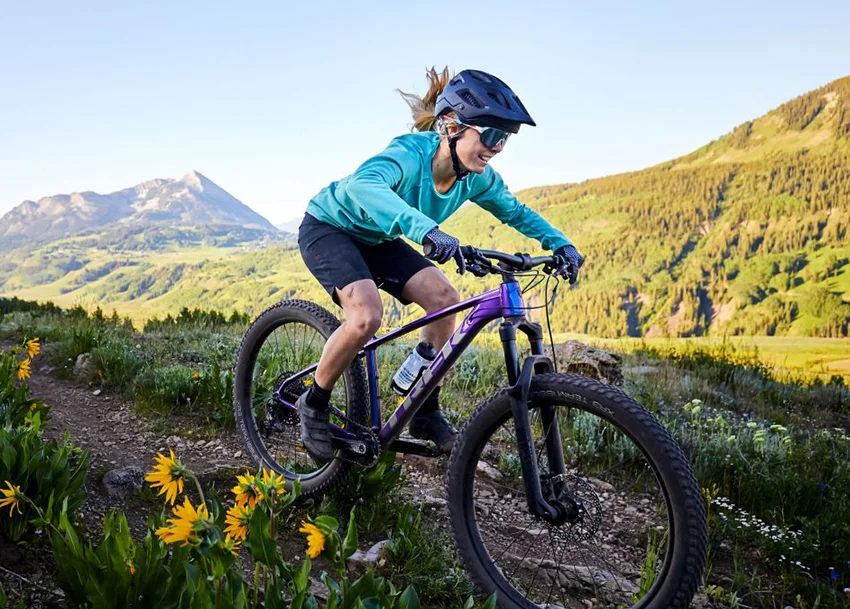
Trek and Giant are both huge brands in the cycling industry, offering top-notch bikes across various disciplines.
Trek might have a slight edge in overall brand reputation and a richer history, especially when it comes to road racing. However, Giant is highly competitive, consistently delivering outstanding value for money.
The best brand for you ultimately depends on your individual needs. When choosing, we recommend to consider your budget, riding style, and the type of bike you’re looking for. If possible, test ride bikes from both brands to get a feel for what suits you best.
Ultimately, whether you choose a Trek or a Giant, you’re in for a phenomenal ride!
Related Topics:
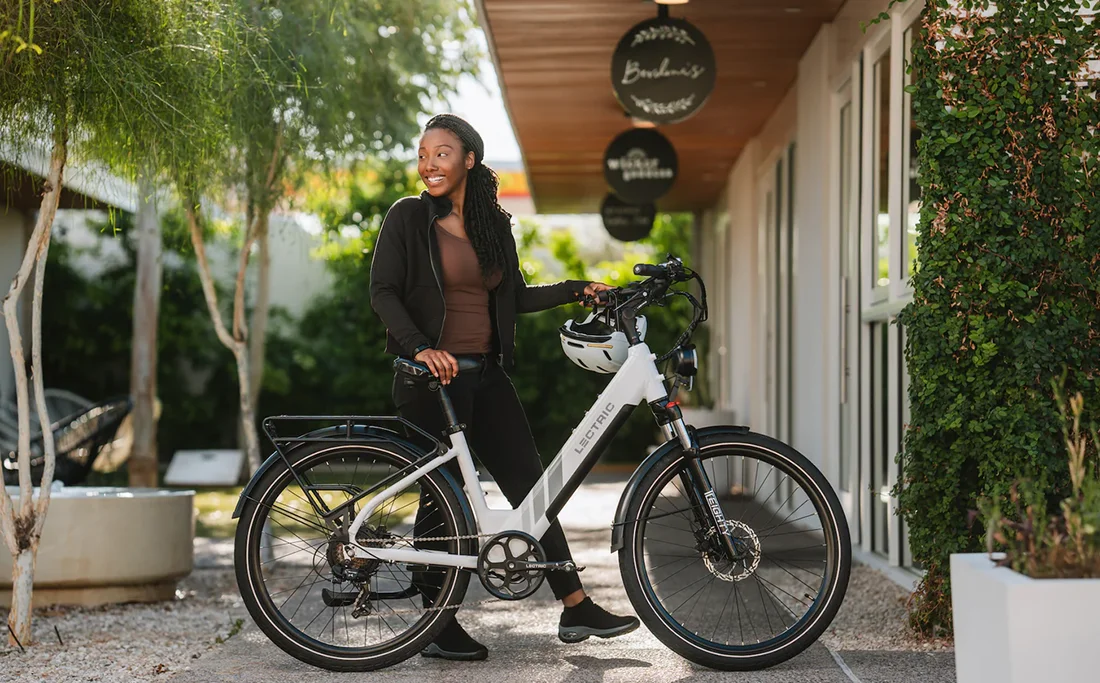
Lectric Does It Again – XPress Ebike Rocks the Budget Market
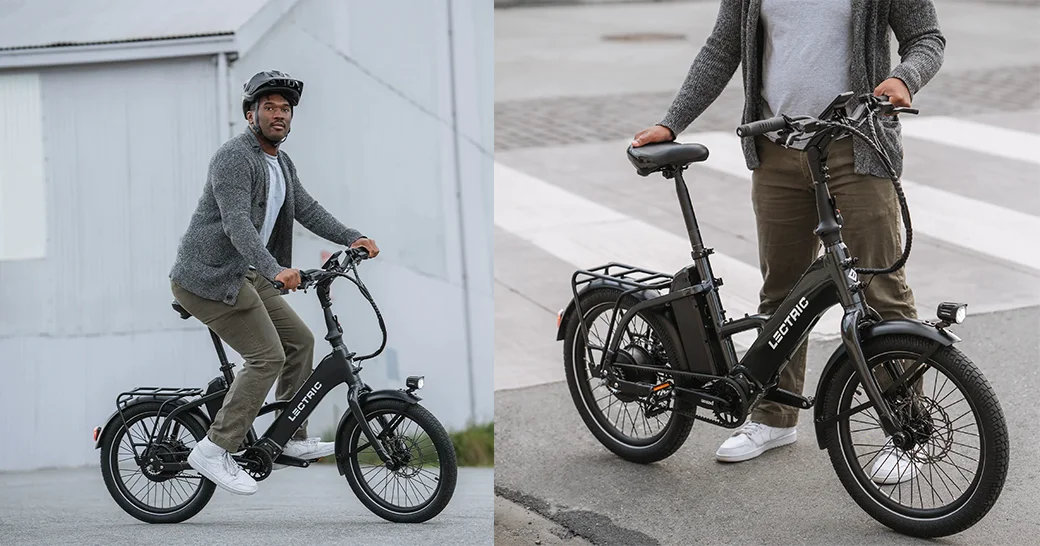
Lectric ONE Comes with a Smart Pinion Gearbox and Gates Belt for Under $2,000 | Detailed Review
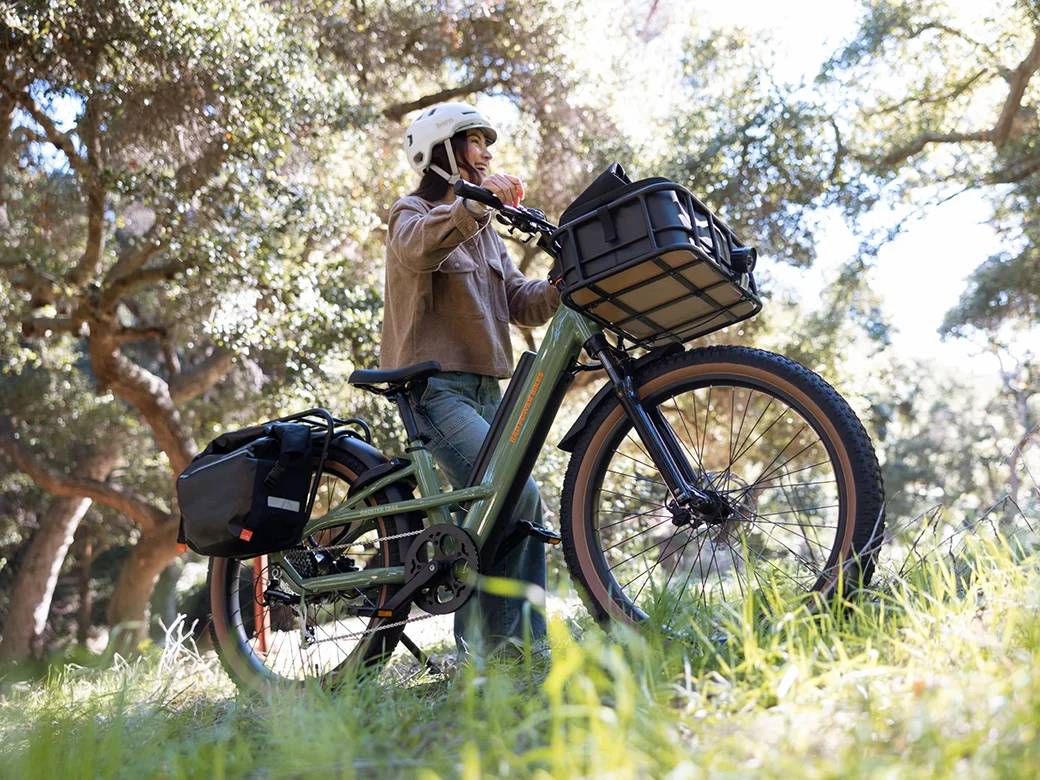
Rad Power Bikes Radster: Torque Sensors, Fire-resistant Batteries & Smart Features
Leave a reply cancel reply.
Your email address will not be published. Required fields are marked *

Trek vs Giant Mountain Bike: Full Brand Comparison!
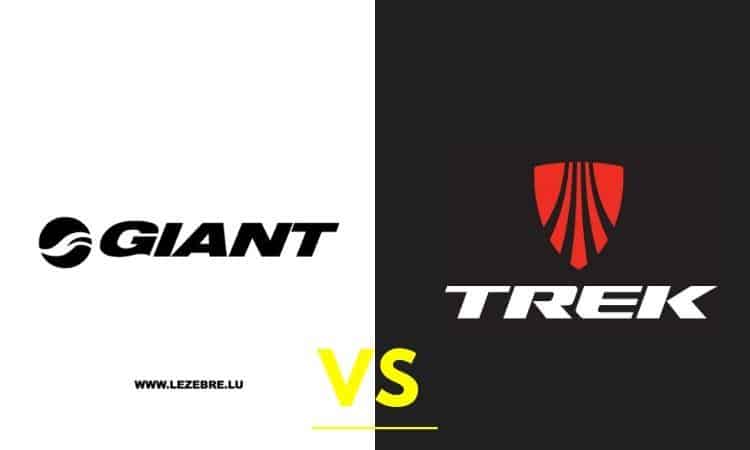
- Latest Posts
- Best Cyber Monday Mountain Biking Deals - September 13, 2022
- Marin Hawk Hill Review: Is It The Right Ride For You? - September 13, 2022
- Best Prime Day Mountain Biking Deals - September 13, 2022
Trek and Giant are two of the biggest mountain bike brands currently in existence, both companies produce a wide range of mountain bike options that will allow you to take full control over the way that you ride.
Depending on your preferred biking style and how much money you’re willing to pay, both of these mountain bike brands offer options that are catered to very specific target audiences.
Bottom Line Up Front: I’ve done a lot of research here, but here’s my high level take…
- Giant is exclusively oriented towards mountain bikes, but has a relatively limited selection and has lost market share to brands like Trek.
- Trek has grown rapidly in recent years, catering to all styles of biking, but has won cred in the high-end mountain bike game recently. They tend to have price points for everyone and an awesome online direct-to-consumer ordering model. Check out their selection here .

First, they have a massive selection from beginner to advanced mountain bikers. Second, they have the BEST online shopping experience of any MTB brand. They just GET IT. Fast shipping, the lowest prices, and epic customer service!
Regardless of what you’re looking for in a mountain bike, these two brands will most likely have the right option for you. However, one thing to remember about both of these brands is that they use very different styles and approaches to accomplish the off-road biking performance that you would expect out of these prestigious brands.
One thing that both of these brands have in common is the general price range that both of them offer. When choosing between each of these brands, you’ll notice that each one of them offers both professional and beginner mountain bike options.
When choosing the perfect mountain bike, it all depends on your preferred riding style and the type of terrain that you’ll be encountering on a regular basis. As you would expect in premium mountain bike brands, both Giant and Trek put a primary focus on providing a mountain bike for riders of all levels and abilities.
When you’re looking for a reliable mountain bike that is capable of taking on the specific types of terrains and environments you’ll be running into, both of these brands offer premium options for you to choose from.
Based on your desired riding performance and bike design, you will want to look for very particular design specifications to ensure that you can gain maximum performance efficiency out of the mountain bike you choose.
Another attribute that both of these companies have in common is the fact that they have their own proprietary technologies which are commonly integrated into the design of their mountain bike options.
All of the different technologies that are used in the production of mountain bikes from both companies provide added support and performance functionality for riders of all levels.
If you’re a mountain biking enthusiast or simply a weekend warrior looking for a more equipped vessel, you may be trying to decide between both of these brands.
For those of you that are stumped on which brand to go with, you’ve come to the right place, in this review, we’re going to give you all of the details on the different mountain bike options available from these individual brands so that you can make the right decision about which one is best suited for your you!
To begin, we’re going to dive straight into the core feature breakdown between these two titans of biking.
Table of Contents
Main Difference Between Trek vs Giant Mountain Bikes
The Main Differences Between Trek vs Giant are:
- Trek prices are according to the types of integrated features they come with, whereas Giant bikes are a lot more affordable.
- Trek uses Giant frames to manufacture some of their mountain bike models, whereas Giant is the primary producer of mountain bike frames.
- Trek bikes are considered to be more capable of ploughing through features on the trail, whereas Giant bikes are considered to be more for those who want an enjoyable ride.
- Trek has proved their worth in terms of producing reliable racing bikes, whereas Giant is more focused on providing its customers with a wide range of different options to choose from
Core Feature Breakdown: Trek vs. Giant
When taking an in-depth look at Trek and Giant mountain bikes, there are several different technologies at work in each of their biking models which work to provide you with specific performance capabilities.
Since both companies use different manufacturing techniques and building processes, all of their bikes represent the particular audience that the companies have built over the decades.
Take a look below to see all of the core features and design integrations that you can expect to gain access to when purchasing a bike from either brand.
Trek Core Features
Alpha aluminum.
Alpha Aluminum is a unique technology used by Trek which utilizes high-level metallurgy which stretches the aluminium material to its maximum absorption point. This process, in turn, creates a material that is very lightweight yet also highly durable and long-lasting for superior ride support. This particular material composition has been in development for years and was refined to perfection by Trek.
OCLV Carbon
OCLV is a unique carbon material that has been around since 1992, however, it is proprietary for Trek. Using their own unique manufacturing process, the company is able to produce this special carbon fibre which is utilized in a variety of different manners on the bikes themselves. The use of OCLV Carbon on these bikes delivers a lightweight frame and enhanced riding capabilities all around.
Active Braking Pivot
Active Braking Point is Trek’s own unique rear suspension system that provides added power while braking to ensure that you maintain control over your ride at all times. This technology is patented by Trek and it enacts the rear suspension on the bike when braking which helps you keep the wheels grounded while riding and braking.
Giant Core Features
Carrier energypak.
Carrier Energypak technology is designed to help riders carry all of their essential equipment and tools with efficiency and comfort. Carrier Energypak provides you with 400Wh of extra riding power so that you can continue taking on tough terrain and intense features without having to take many breaks. The technology is very similar to the features that you’ll find on many rentable e-bikes located in cities all across the United States.
Compact Road
Compact Road technology is a design integration feature that implements the use of a downward-sloping top tube which runs from the head tube to the seat tube providing you with the rider with a lightweight and stiff ride you can rely on. This technology also makes it easier for people of varying sizes to ride with ease and a unique fit.
Advanced Composite Technology
Advanced Composite Technology refers to the use of high-grade raw carbon which is integrated into the bike’s frame. This material has a very high stiffness to weight ratio which gives the bike more stability and overall control. With this feature, the front fork of the bikes is secured by a triangle shape design and it is moulded as one continuous piece during the manufacturing process.
Now that we’ve gone over some of the core features that you can expect out each of these mountain bike brands, it’s time to take a look at what some of our top alternative recommendations are.

Giant is the world’s leading brand of high-quality bicycles and cycling gear. Part of the Giant Group, which was founded in 1972, the brand combines craftsmanship, technology and innovative design.
Alternative Recommendations
This section is going to include our top recommendations for those individuals who are interested in seeing what other bike brands have to offer. We’re going to cover bikes ranging in design, capabilities, and features. Make sure you read each recommendation so that you can see which one is best for your intended riding needs.
#1 Vilano Diverse 3.0 Performance Hybrid Bike

6061 Double Butted Aluminum Aero Frame w/ Integrated Headset & Internal Cable. Integrated Brake Lever/Shifters mean controllable braking and shifting in a convenient single unit designed for the road.
The Vilano Diverse 3.0 Performance Hybrid Bike comes outfitted with disc brakes so that you can stop anytime you need to without interruption. This bike also comes equipped with an upright handlebar which adds an extra layer of comfort while riding for prolonged periods of time. This particular mountain bike is made using hydroformed alloy performance materials which provides a durable and long-lasting frame. Vilano Diverse 3.0 Performance Hybrid Bike
#2 Schwinn Discover Hybrid Bike

21-speed SRAM grip shifter and rear derailleur mean that pedaling up a hill is easier; Alloy twist shifter compatible 4 finger brake levers.
Although the Schwinn Discover Hybrid Bike isn’t a mountain bike, it is surprisingly capable both on and off-road. This hybrid bike comes equipped with 21-speed SRAM grip shifters which allow you to easily change gears when you encounter a small feature or tougher than usual terrain. This bike also comes packing Shimano rear derailleurs and a swept-back upright handlebar which provides you with extra stability and support while riding. This model also comes with an SR Suntour suspension fork that allows you to take hard dips without worrying about injury or damage to the bike.
#3 Diamondback Bicycles Hook 27.5 Hardtail Mountain Bike

The classic returns this year with 27.5” wheels, 24 speeds, a plush four-inch Suntour suspension fork, and powerful disc brakes. Big knobby tires grip every root and rock, keeping you confident and in control as you explore the trail. Whether you're a diehard hardtail aficionado or looking for a solid starter mountain bike, the Overdrive doesn't disappoint.
The Diamondback Hook 27.5 Hardtail Mountain Bike is an awesome and affordable mountain bike. It comes outfitted with an SR Suntour XCM 120mm travel suspension fork which helps alleviate some of the direct impacts that you experience when taking on tough features. The frame on this bike uses a hand-built aluminum hardtail material that provides added support and stability all around to the frame of this capable mountain bike. The wheels on this bike are durable DB SL-7 double wall 27.5” walls which give you peace of mind knowing that your ride will be solid.
About the Brand: Trek vs Giant
Both Trek and Giant are very well established histories within the mountain bike industry. When you begin looking through the various mountain bike options available from both companies, you will quickly see the amount of dedication and hard work that they put into every bike that comes from their production. To help you better understand the unique technologies at play when using bikes from either of these companies, we’re going to provide you with a detailed view of the backstory behind each brand.
History of Giant
Giant mountain bikes were started in 1972 by a collective of Tour de France racers and other passionate individuals who share a love for mountain bike production and cycling all in one. The primary focus of the brand is to provide riders all across the world with high-quality mountain bikes that they can use to traverse nearly any terrain or environment without having to worry about their bike breaking down. The brand uses high-strength aluminium to craft their bike frames and they were also the first company to produce carbon fibre mountain bikes that were commercially available.
When you think about the brand Giant and its impact on the mountain biking industry, you have to think about the way that the brand redefined what modern off-road bikes look like. Their bikes are known for their compact road technology and the Maestro suspension system that provides added support for riders taking on all sorts of environments.
Today, Giant continues to be an innovator in the mountain biking industry with its unique design ideas and dedication to producing reliable mountain bikes that riders everywhere trust and enjoy.
History of Trek
Trek mountain bikes began its development in 1975 by a man named John Burke. Burke developed a passion for producing mountain bikes from his father. In 1975, John’s dad Richard Burke and a friend of his by the name of Bevil Hogg created the Trek bicycle brand. The same year, the company would start producing touring bikes that were made from steel frames, the company would go on to produce 900 custom variants of this bike over the next several years until the company was incorporated.
In the later 1970s, the brand outgrew its original manufacturing facility, which led Trek to purchase a new 26,000 sq ft. headquarters that was located on the outskirts of Waterloo. With the new warehouse space, the company was able to add bike manufacturing to its list of products up until 1981 which is when the company started making steel cycling bicycles.
In 1985, the company broke ground in the mountain bike industry by using technology derived from the aerospace industry in its bikes in the form of a bike frame made out of bonded aluminium. While the company experienced some issues when developing their new bike production technique, eventually they figured out all of the logistics behind their equipment manufacturing process and became the Trek we know and love today.
Now that we’ve gone over some of the key historical facts behind both of these companies, it’s time to take a look at what the main differences between both of them are so that you can make an educated decision about which one is best suited for you.
Our Reviews & Comparisons of Trek Bikes
- Trek Marlin 5 Review
- Trek Marlin 6 Review
A: Yes, both companies offer a standard warranty when you purchase a bike from their official website or a verified retail vendor.
A: The cost of these bikes will vary depending on the particular model that you decide to purchase.
A: Yes, both companies offer a return policy on their products so that you can get your money back in the event that you’re not satisfied with your purchase.
A: Giant produces mountain bikes for various third-party brands and companies. Some Trek mountain bikes do include parts made by Giant and some models are made by Trek entirely.
A: Yes, Trek is considered to be a premium mountain bike option that is trusted by many expert mountain bike riders.
A: Both Trek and Giant produce high-quality products, each company produces products which may provide more benefits to specific types of riders. We personally prefer Giant due to their long history of building mountain bikes and their commitment to mountain bike culture.
A: It all depends on how much money you want to spend and what your preferred riding style is, there is no definitive answer as everyone has different needs and is at a different skill level when it comes to mountain biking. For beginners, the Schwinn Protocol is a great bike for the price. For intermediate riders who are tackling bigger features, the Ancheer Electric Bike is great for the price. While professional riders will enjoy the DiamondBack Hardtail and you can’t beat the price!
Our Opinion
When it comes to deciding between both Giant and Trek mountain bikes, both of these brands produce high-quality biking options that last long and deliver high-performance products. The final decision about which one is right for you will ultimately depend on your specific riding style and what core features you need access to most.
As long as you take all of those variables into consideration before making your final purchase decision, you will have no problem finding the right mountain bike for your needs.
Bottom Line: I’ve done a lot of research here, but here’s my high level take…
- Giant is exclusively oriented towards mountain bikes, but has a realtively limited selection and has lost market share to brands like Trek.
Throughout this review, we’re covered all of the essential features, design integrations, and other key components that you need to consider before purchasing a mountain bike. As long as you use all of the tips and information that we’ve given you, you will be able to decide on which mountain bike fits your desired riding needs exactly. Happy riding!
Leave a Comment Cancel Reply
Your email address will not be published. Required fields are marked *
This site uses Akismet to reduce spam. Learn how your comment data is processed .

MTB Insider Copyright 2022 | A Venture 4th Media company | Privacy Policy | Affiliate Disclosure | FTC Disclosure | About Us

GT vs Trek vs Giant – 3 Top Bike Brands Explained
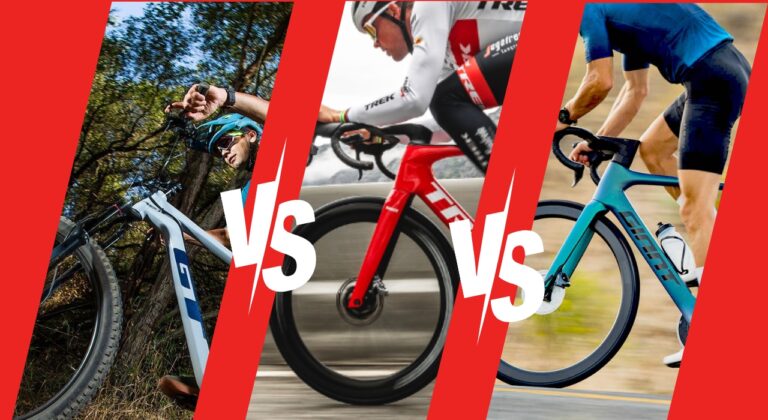
In the world of mountain biking , we all know of the three brands that shine above the rest: GT, Trek, and Giant. Each presents a diverse array of mountain bikes tailored for various terrains and riding preferences. This can make it quite a challenge to pinpoint the perfect fit.
To guide your choice, I’ve compiled a comparison of Trek, Giant and GT mountain bikes . This spans from beginner-friendly hardtails to the most advanced full-suspension bikes.
GT vs Trek vs Giant
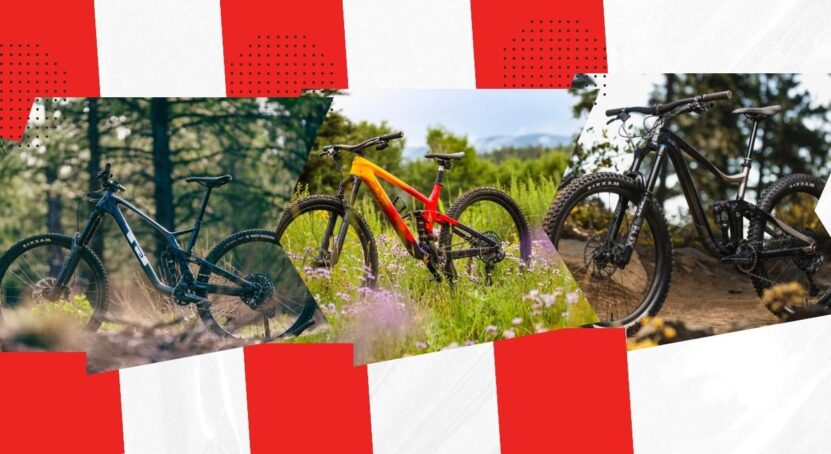
Here’s how I’m breaking down my decision between GT, Trek, and Giant:
Firstly, I’m reflecting on the type of terrain I’ll frequent. If smooth pavements are my go-to, then a road bike from any of these brands should serve me well. But, if I’m leaning towards adventurous off-road trails, a mountain bike seems more apt.
Price is the next factor on my radar. While GT and Trek usually come with a heftier price tag, Giant offers a more budget-friendly range. That said, I’m convinced that all three brands don’t compromise on quality. It boils down to how much I’m comfortable shelling out.
Lastly, I’m weighing in on after-sales support. While all three brands promise commendable warranties, my research indicates that Trek and Giant generally outshine GT in customer service. It’s crucial for me to have reliable support should any issues arise with my bike.
I’ve always admired GT for crafting some of the top mountain bikes out there. With their diverse lineup, I’m confident I can pinpoint a model that resonates with how I ride.
One thing I truly appreciate about GT bikes is their renowned durability. It gives me peace of mind knowing that my investment will stand the test of time.
Trek has caught my attention with their bikes’ lightweight nature and agility. It feels like they’re designed for riders like me who want to maximize every pedal stroke .
With Trek’s extensive model range, I’m optimistic about finding a bike that aligns with my preferences.
Giant Bikes
Giant never fails to impress with their impeccable blend of performance and aesthetics. Riding a Giant bike , I’ve felt the comfort and reliability they’re celebrated for.
Given Giant’s vast selection, I’m sure there’s a model out there that’s tailor-made for my riding nuances.
Performance
When I’m on the hunt for a bike, performance tops my list of priorities. IGT, Trek, and Giant each brings its distinct touch of engineering and design to the table.
I’ve observed that GT stands out with its feather-light frames and a penchant for aggressive riding. Trek, on the other hand, offers versatile bikes adept at tackling varied terrains. Giant’s reputation hinges on crafting bikes that are both robust and dependable.
In the racing circuit, GT and Trek seem to be the crowd favorites. GT leans towards a more assertive riding approach, whereas Trek strikes a balanced chord. For my everyday rides, I’m inclined towards Giant, given its hallmark of durability and trustworthiness.
Components And Material
Going deeper, I’ve noticed stark contrasts in the components and materials used by these brands. GT tends to equip its entry-level models with more budget-friendly parts, which likely accounts for their more attractive price points.
To illustrate, the Allez E5 Sport is fitted with Shimano Claris 2400 series components, in contrast to the Trek Emonda ALR 4 which boasts the Shimano 105 5800 series. Giant, interestingly, blends its proprietary components with Shimano, the mix varying with the model in question.
On the material front, the Allez E5 Sport showcases an aluminum frame complemented by carbon forks. The Emonda ALR 4, meanwhile, pairs its aluminum frame with composite forks. The Defy Advanced 1 stands out with its Giant-specific composite frame and an aluminum fork.
It’s worth noting that while entry-level components might not match the longevity or performance of their high-end counterparts, they’re often more than sufficient for leisurely rides and city commutes .
Is a GT Bike Worth it?
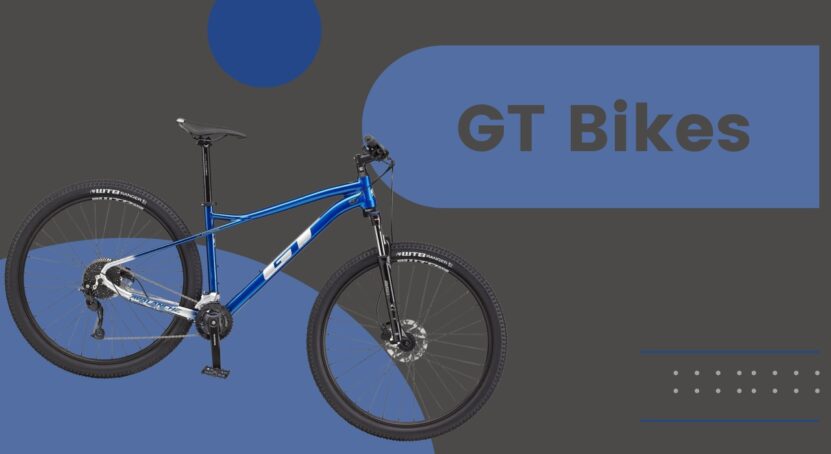
In my experience, a GT Bike truly justifies its price tag. The meticulous craftsmanship and attention to detail are evident in every model. Designed with durability in mind, a GT Bike is built to endure.
For those contemplating a competitive edge in racing or other biking events, GT Bike is a top contender. Its design prioritizes speed and agility, ensuring you’re always at the forefront. In essence, investing in a GT Bike promises not only a fantastic ride but also enduring value.
Is Trek A Good Bike Brand?
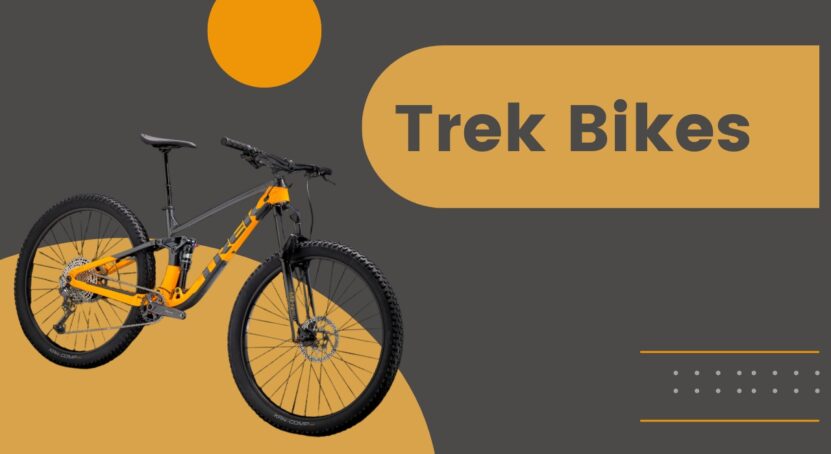
Having been in the biking industry for over four decades, Trek has cemented its reputation for producing top-tier bikes . Catering to diverse riding preferences and budgetary constraints, Trek’s expansive range is commendable.
What sets Trek apart, in my opinion, is their exemplary customer service. It’s reassuring to know that should any issues arise, Trek’s support is unwavering.
While Trek’s pricing might lean towards the higher end, I believe in the adage “you get what you pay for.” With Trek, you’re investing in a bike that’s built to last. For anyone seeking a trustworthy bike brand , Trek is undeniably a top pick.
Are Giant Bikes Good?
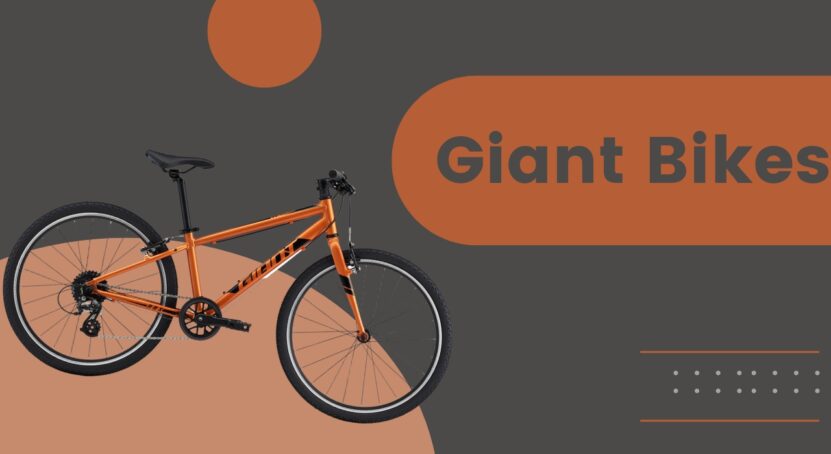
Giant, a stalwart in the biking world, caters to both novices and seasoned professionals. Their bikes, ridden by casual enthusiasts and pro cyclists, stand testament to their quality.
Every Giant bike I’ve come across exudes quality, both in materials and construction. This ensures longevity, provided they’re well-maintained.
For riders seeking a steadfast companion for their regular jaunts, Giant is a solid choice. Admittedly, some of their high-end models might stretch your budget, but I view it as a worthy investment for passionate cyclists.
What Other Competitors are Out there?
If you’re exploring alternatives, it’s essential to be aware of the other significant players in the biking industry. Let’s see how they stack up:
Specialized
Specialized is undeniably a titan in the cycling domain. Catering to a vast array of riders, their offerings span from beginner to professional-grade bikes.
Price-wise, Specialized often runs parallel to Trek. They’re lauded for their high-quality bikes, but when it comes to customization, Trek might have a slight edge.
Though not as expansive as Trek or Specialized, Cannondale has carved a niche for itself in the biking community.
Their diverse bike range caters to various riders, often at competitive prices. A standout feature of Cannondale is their renowned customer service, often cited as one of the best in the industry.
Another noteworthy competitor is Scott. Known for their innovative designs and cutting-edge technology, Scott offers a comprehensive range of bikes suitable for various terrains and riding styles.
Their pricing is in line with the industry standards, and they’re recognized for their commitment to quality and performance.
How do Trek, Giant, and GT bikes differ in terms of their design philosophies?
Each of these brands has its unique design approach. Trek often emphasizes comfort and versatility, incorporating technologies like the IsoSpeed decoupler in some models. Giant, being one of the world’s largest bike manufacturers, focuses on innovation and often introduces new technologies across its range. GT, with its roots in BMX, often leans towards aggressive and durable designs, especially evident in their mountain bikes.
Between Trek, Giant, and GT, which brand offers the most competitive pricing for entry-level models?
While prices can vary based on specific models and regions, generally, Giant is known to offer competitive pricing, especially for entry-level models. GT also provides some budget-friendly options, especially in their mountain bike range. Trek’s bikes are often in the mid to high range, but they also have some competitively priced models.
How do the warranty and customer service experiences compare between Trek, Giant, and GT?
All three brands offer robust warranties, but the specifics can vary. Trek and Giant are often praised for their customer service and extensive dealer networks, ensuring riders have easy access to service and support. GT, while having a strong reputation for durable bikes, might not have as extensive a dealer network as the other two.
With the rise of other brands like Specialized and Cannondale, how do Trek, Giant, and GT maintain their competitive edge?
Trek, Giant, and GT have rich histories and have built strong brand loyalties over the years. They continue to innovate, release new models catering to current trends, and engage with their communities through events and sponsorships. Their established reputations and consistent quality help them maintain a competitive edge in the market.
Choosing between top bike brands can be a daunting task given their respective strengths and offerings. Top-tier bike brands like Trek, Giant, and GT can be challenging, and other notable names like Specialized and Cannondale each brings their own unique strengths, technologies, and design philosophies to the table.
While each brand has its unique features and technologies, the best choice often comes down to individual preferences, riding style, and budget. When choosing a bike, it’s essential to consider individual riding needs, budget, and personal preferences. Test rides and consultations with local bike shops can further aid in making the right decision.
Ultimately, the best bike is one that aligns with a rider’s specific requirements and provides a comfortable and enjoyable riding experience.
Related Posts:
- Trek Slash vs Giant Reign (7 Key Differences Explained)
- Trek Fx vs Giant Escape (6 Comprehensive Differences)
- Trek Marlin vs Giant Talon Which One Is For You
- Giant Contend 1 (5 Key Features Explained)
- Giant Stance Vs Trance
- Giant Trance vs Reign (7 Helpful Differences)
When you buy through links on our site, we may earn an affiliate commission. Learn more.
Trek vs Giant Mountain Bike – Which Mountain Bike is Better?
Mountain bikes can take us to a whole different world where excitement and exploration never ends. Everyone would like to have the best mountain bike to tackle tracks and trails. However, with so many brands around, such as Trek and Giant, it makes it hard to choose. To make your decision easier, we've compared Trek vs Giant to see which of these two popular brands has better mountain bikes.
The bike brand Trek holds a very prominent position in the market when it comes to mountain bikes. They add the latest technology and innovative features in their bikes to satisfy all the needs of their customers.
On the other hand, Giant is another " giant " name in the same industry, and their bikes suit all kinds of tracks, from steep slopes to technical trails and fast singletracks. You can truly explore the mountains and other places with Giant mountain bikes.
Trek vs Giant Mountain Bike comparison
Let us learn a little about Trek and Giant brands before we dive into the feature comparisons:
Trek Mountain bikes

One thing Trek gives a lot of importance to is adding the most advanced design features in their bikes. This way, their users get the best features from the bikes. After all, no one will want to buy or purchase an outdated product.
Moreover, they've been supporting the different needs of men and women bicycles for longer than most brands. As such, you can easily find hundreds of options for both men and women bikes from the Trek brand.
Pros Of Trek
- Trek caters to all cycling needs, from commuting to racing
- They offer many innovative features in their bikes
- Trek has more variants and sizes available for its products than Giant offers.
- The stiff frames of Trek bikes make them ideal for racing.
Cons OF Trek
- The price of Trek mountain bikes are on the higher side.
- The frames may be too stiff for mountain bikes.
- Trek does not have many options in the mountain bike selection.
Giant Mountain bikes
Giant is a well-known brand for any type of bike you could want. They are so widely known that most cyclists should've owned one of their bikes at some point in their lives. They are such a popular name because they deliver quality and never disappoint their customers.
The Giant Mountain bikes come in many sizes and categories. Their bikes offer excellent performance that will allow you to tackle any type of terrain with ease. Moreover, with the wider variety of bike categories available from Giant bikes, you will always be able to find a suitable bike.
Pros Of Giant
- Giant offers many options in the mountain bike category
- Their frames are of the best quality
- Giant mountain bikes are affordable and budget-friendly
- This brand puts more time into making the best mountain bikes
- The bikes by Giant are reliable and durable
Cons OF Giant
- Giant is not the most innovative brand in the bike industry
- This brand does not give a lot of importance to their designs and aesthetic appeal
- In their official website, Giant does not mention any mountain bike options specifically for women.
Bike Types/Categories

Trek is a very well-rounded bike brand that tries to offer a bike for any purpose, whether it is for racing, commuting or climbing mountains. They make sure that their bicycles cater to almost every type of rider's needs.
Giant Bicycles, on the other hand, puts a lot of their focus on their mountain bikes. They have plenty of options when it comes to this particular bike selection, but might not have that many categories as Trek. Trek's mountain bike range and models are very diverse, with all the main types of MTBs available in all the different sizes and for all genders. With Giant bikes, the selection is much smaller as they only offer Eduro's, Fat Bikes, Trail Bikes, and XC bikes with wheel sizes down to 26 inches.
So, in this case, Trek has the upper hand for diversity as they take care of every cyclist's needs.
Price range
As is the case with all brands, both the Trek vs Giant Mountain Bike options come in different price ranges. You are likely to get a mountain bike from either brand within your budget. The highest price for a mountain bike by Trek and Giant is very close, and even the lowest-priced products are similar when it comes to cost.
However, Giant offers more options at the lower price range than Trek. So, if you want a more affordable mountain bike that will not burn a hole in your pocket, we advise you to go for Giant mountain bikes.
The reason why the cost of Trek bikes is usually higher than those of Giant's is that Trek set their prices based on the features that their products offer. On the other hand, the location of the Giant's manufacturing unit is close to the raw material source. This location helps in keeping the prices as low as possible.
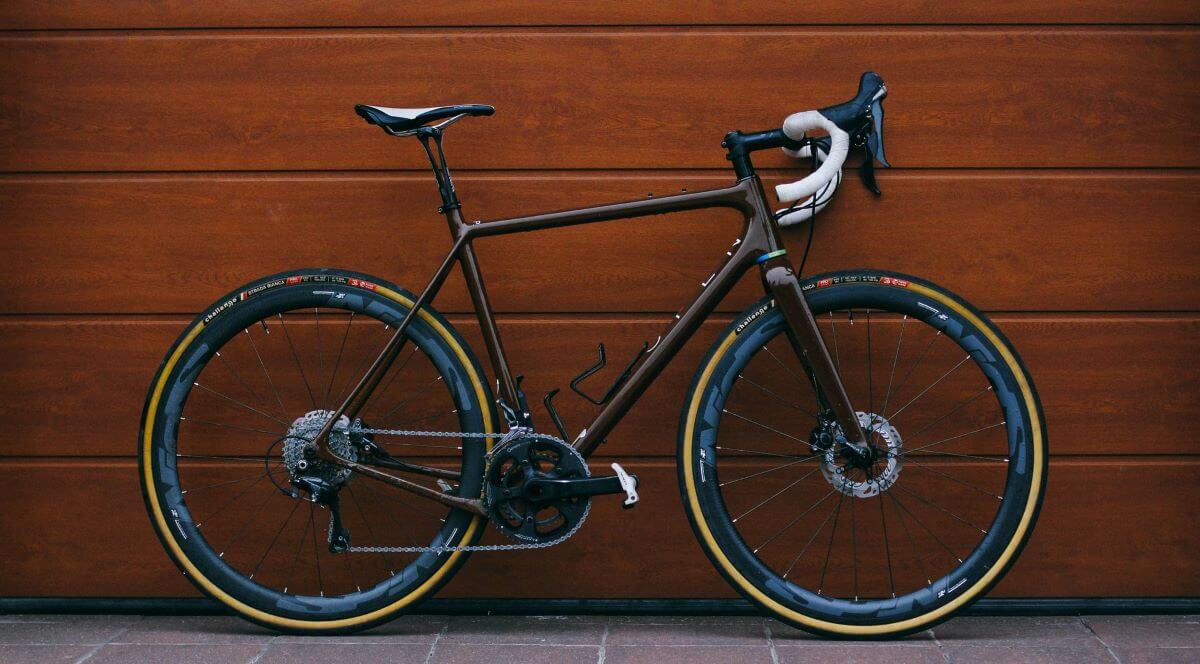
Trek gives a lot of importance to their design and features. They make sure that each of their products offers uniquely designed so you'll always see some great looking trek bikes for sale. And although design preference depends on the buyer, we can safely say that Trek generally designs their bikes better than Giant.
Since Giant aims at being more affordable, they do not focus on the looks or aesthetics of their products as much as Trek does. On the contrary, Trek offers value for its comparatively higher prices by adding designs and details that make a difference. With that said, we still must give credit to Giant as their bikes still look good and aren't far off from Treks'.
Similar to the design element, Trek gets another point when it comes to the features that its bikes provide. This brand puts its focus on development and research. As a result of their efforts, they can add exciting features to their products.
At the same time, this does not mean that Giant does not offer innovative features. It simply means that when we put Trek vs Giant Mountain Bike head to head, Trek will win with the impressive features that come along with their bikes.
Overall, you can get bikes from either brand with good components like Shimano Derailleurs and Disc brakes.
Quality of the components

When it comes to quality, Giant bicycles are second to none. This fact boils down to their prices again. One of the most distinctive things about Giant is that they get their parts and components at a much cheaper rate than other brands and companies. This reason is why they can provide better quality components even at a lower price.
You might be thinking about how this works. Let us explain the logic behind it. For the same priced bike from giant and trek, Giant's bike might have better quality parts. Since they get their components in bulk, they can put the same high-quality elements in cheaper bikes too.
In the meantime, Trek will have to settle for lower quality parts to reduce its cost and set a low price for the bike. As such, you'll end up having to buy a higher-priced bike from Trek to match the price of one from Giant.
Giant manufactures some of the best frames in the world, and even some Trek bikes use Giant's structures too. Their frames are top-quality and durable enough to last you a very long time. Moreover, they offer their frames in a wide variety of materials such as aluminum or Carbon/Composite.
Likewise, Trek also offers a good amount of frame types that will be able to satisfy your needs.
What are the main differences between Trek vs Giant Mountain Bike?
The difference between Trek vs Giant is that Giant bikes are much more affordable than Trek bikes since they are closer to the source. In contrast, Trek makes up for its high price by adding innovative features and beautiful designs. Also, Trek provides a wider variety of bike types and sizes than Giant as they offer wheel sizes down to 16" while Giant only goes to 26 inches.
Final verdict
If you are looking for a reliable and masterful mountain bike for your adventures, you should go for the Giant mountain bikes. They are much more affordable and offer high quality in all their products. At the same time, if you do not have a problem spending some extra bucks for innovative features and equally dependable mountain bikes, Trek will be an excellent option.
How do Trek and Giant compare when it comes to mountain biking?
Both Trek and Giant are well-respected bike brands in the mountain biking market. Trek is known for its advanced design features and wide range of options for men and women, while Giant is known for delivering high-quality, reliable bikes with excellent performance.
Are Trek and Giant considered the best bike brands for mountain biking?
Trek and Giant are definitely among the top bike brands for mountain biking. They are both known for producing high-quality bikes with features that are well-suited for off-road riding. However, there are other great bike manufacturers in the market, that also produce quality bikes for mountain biking.
Which brand makes the best road bikes - Trek or Giant?
Both Trek and Giant make high-quality road bikes that have been well-received by customers. Some riders may prefer the advanced design features of Trek road bikes, while others may prefer the affordability and reliability of Giant road bikes.
What are the main differences between the Trek vs Giant e+ bikes?
The main differences between Trek vs Giant e+ bikes are the technology used for the electric power assistance, and the design aspects. Trek is known for its innovative technology, while Giant is known for its affordable pricing and reliability.
How do the bike frames compare between Trek and Giant hybrid bikes?
Trek and Giant uses high-quality materials for their bike frames, and they are both known for producing durable, long-lasting bikes. However, Trek is known for its advanced design features, while Giant is known for its reliability and affordability.
Are hydraulic disc brakes standard on most of the Trek and Giant mountain bikes?
Many of the higher-end mountain bikes from both Trek and Giant do come equipped with hydraulic disc brakes. They offer better stopping power and performance than traditional rim brakes, and they are considered to be a premium feature on most mountain bikes.
What are the main differences between Trek vs Giant gravel bikes?
Both Trek and Giant offer gravel bikes that are designed for off-road riding on mixed terrain. The main differences between the two brands can be found in the design, price, and the technology used. Trek is known for its advanced design features and innovative technology, while Giant is known for its affordable pricing and reliability.
Are Trek and Giant considered to be one of the top bike manufacturers?
Yes, both Trek and Giant are considered to be among the top bike manufacturers in the industry. They both produce high-quality bikes that are well-suited for different types of riding, including mountain biking, road cycling, and gravel riding.
What are the main differences between full suspension bikes and hardtail bikes offered by Trek and Giant?
Full suspension bikes have a rear suspension system in addition to the suspension in the fork, which provides more control and comfort on rough terrain. Hardtail bikes, on the other hand, only have a suspension fork in the front. Trek and Giant both offer both full suspension and hardtail options, but the specific models and features can vary between the two brands.
How do Trek and Giant's entry-level mountain bikes compare in terms of features and performance?
They each offer entry-level mountain bikes, which are designed for riders who are just getting into the sport. While the specific features and components can vary between the two brands, both Trek and Giant offer bikes with a good balance of performance and value for the price.
How do the high-end mountain bikes from Trek and Giant compare in terms of features and performance?
Both offer high-end mountain bikes that are designed for advanced and competitive riders. These bikes often feature carbon frames, advanced suspension systems, and high-end components. The specific models and features can vary between the two brands, so it's best to check with local bike shops for more information on the specific models.
How do Trek and Giant's electric mountain bikes compare in terms of power and features?
Both Trek and Giant offer electric mountain bikes, which provide additional power assistance while pedaling. The specific models and features can vary between the two brands, such as the power and range of the electric motor, battery, and assistance modes. It's recommended to check with local bike shops or the manufacturers' website for more information.
Giant vs. Trek Bikes: Understand the Difference
Giant vs. Trek bike: which brand of a bicycle is the better fit for you? Both Giant and Trek are major players in the bicycle industry. The Giant cycle company is well known for its mountain and hybrid bikes , which get reviewers’ top marks for their comfort. They allow you to go the distance because their design is ergonomic and offers an easy ride. Trek bicycles are also incredibly well-known for their fat, fall-proof tires with speeds and gears that allow you to go over long distances and rough terrain with no problem. When it comes to Giant vs. Trek bikes, the Giant brand is a bit more urban, with splash-guards and fenders and a line of Giant commuter bikes, whereas Trek tends to make true rugged mountain and road bikes with no fenders with the ability to allow you to sail uphill and through rugged hiking trails.
What Is Good about a Trek Bike
The brand Trek is known to make some of the best mountain and road bikes in the world, bringing in technological developments from aerospace to also create some of the fastest bikes in the world. If speed, durability, and comfort are at the top of your list of what you want in a bike, then Trek is a great brand to consider buying.
- Its History
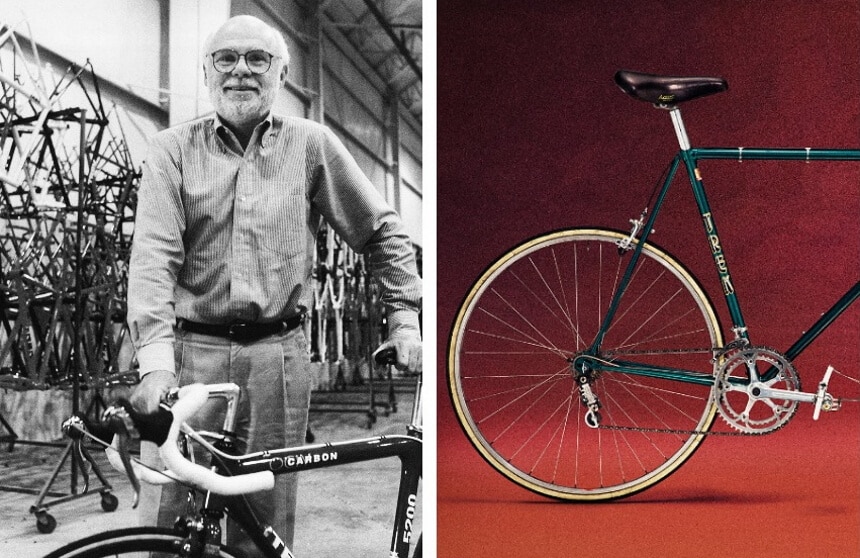
Trek Bicycle was the brainchild of Dick Burke, who wanted to manufacture a bike as good as the high-end European Schwinn bikes. He called his fledgling company Trek because it brought forth images of adventure. The company began as a custom bike manufacturer in 1975, and then the first factory opened in Waterloo, Milwaukee, in 1980. The company borrowed its ideas from rocket science, introducing both caron molded and aluminum frames to the industry in 1989. Lance Armstrong won his first Tour de France in 1999 aboard a Trek 5500. Since 2010 the company has also been focusing on creating bikes made out of eco-friendly materials, recycling old tires into seats, water bottles, and other bike parts.
Trek was founded by Dick Burke in order to address the lack of high-performance and racing bikes manufactured in the United States. He then began to design and build bikes that brought numerous innovations into the industry Trusted Source Trek Bicycle Corporation - Wikipedia Trek bicycles are marketed through 1,700 independently owned bicycle shops across North America, subsidiaries in Europe, Asia, South Africa, as well as distributors in 90 countries worldwide. en.wikipedia.org that are now mainstays, including lightweight alpha aluminum bikes and OCLV (molded carbon) bikes first introduced in the 90s. These innovations were meant to make the biking experience more lightweight and aerodynamic than ever. Trek is also known for its rear suspension, Active breaking pivot, and Full Floater shock system that eliminates the need for a rider to feel any bumps or ruts as they soar over rugged terrain.
What is Good about a Giant Bike
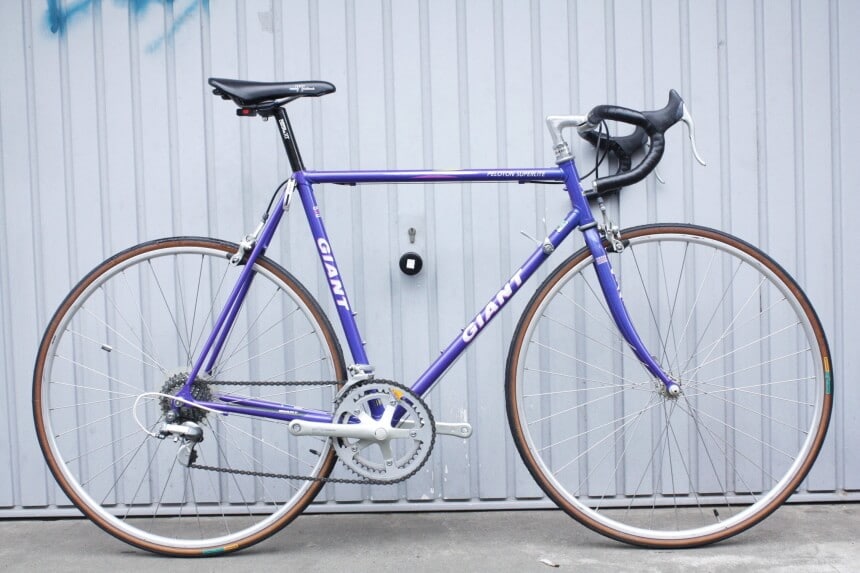
Giant is actually the world’s largest bike manufacturer with an extensive selection of best Giant mountain bikes but also road bikes, cyclocross, and hybrid bikes. It also has a very popular specialty line of bikes made just for women called Liv. One of their most iconic models is the Great Rincon Mountain Bike. Giant really is a giant in the bicycle world with facilities in Germany Netherland, and China.
Giant bikes began in 1972 and earned a reputation as an OEM supplying bike parts for the German company Schwinn. When Schwinn went with a less expensive manufacturer in 1987, the Giant launched its own bike brand. By 1994 it became Giant Europe, and by 2018 the company was selling to over 50 countries, including the European Union, the United States, Japan, and Taiwan. It got into the racing business in 1996 and invented a woman’s line of bikes called Liv. To date its biggest innovation is Cadex, a mass-produced carbon bicycle that is lighter and faster to ride than before and also enabled the production of a line of innovative folding bicycles.
Giant is based in Taiwan, so the entire chain of production is controlled by precision machinery based in manufacturing plants there, allowing the company to produce bikes from scratch and in half the time of most bike manufacturers. Giant is also known for two big technological advances that became industry standards. In 1987 Giant produced the first CADEX carbon-frame bike. A decade later, the Giant then introduced a road bike with “compact geometry, which meant the bike had a sloping top tube, which is another development now used across the industry. On this Road biker review forum, you can read an interesting discussion about traditional bike geometry vs. compact bike geometry Trusted Source traditional geometry vs. compact geometry | Road Bike, Cycling Forums Could somebody site out the advantages of each and to what type of ride do they excel? www.roadbikereview.com and much more, including Giant and Trek bikes reviews.
The Differences Between Trek and Giant Bikes
There are a lot of very basic design and mechanical differences between Trek and Giant bikes, but perhaps the biggest difference between them is the price. Giant bikes prices tend to be a lot smaller than Trek bikes’, as they can almost be called souped-up tourist bikes. Trek bikes are, in general, much more expensive because they are manufactured in the United States, whereas Giant Bikes are manufactured in Taiwan, where manufactured goods of all types in general just happen to be cheaper.
- Performance
Both bike brands are known for their superior performance. If you are a racer, you want to go with a Trek, but if you are a more urban creature than a Giant would do. Giants tend to have lighter frames that are easier to lift onto buses or into storage if necessary. However, if you are a heavy-duty racer or just a little heavier than most riders, you will probably want to buy a Trek. When it comes to both brands, the more expensive the bike, the better its performance will be, and both companies have a lot of hybrids and options that combine road and mountain bike components.
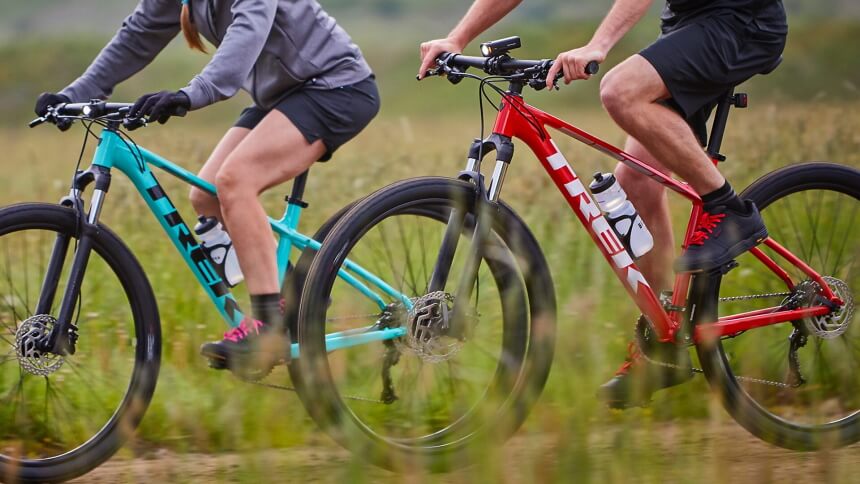
Giant’s beginnings in the bicycle manufacturing industry were as an OEM, an Original Equipment Manufacturer, their frames are lighter and very high quality. However, Trek bikes generally have stiffer, tougher frames than Giant frames as many people buy mountain Trek bikes to survive rugged and forested terrains or as high-performance bicycles.
As Trek began as an OEM, they are able to make cheaper as well as better parts. A Giant bike offers more components simply because the entire company operates cheaply enough to be able to diversify into various stylized parts, where the Trek is more modular and sticks to making components for a basic design.
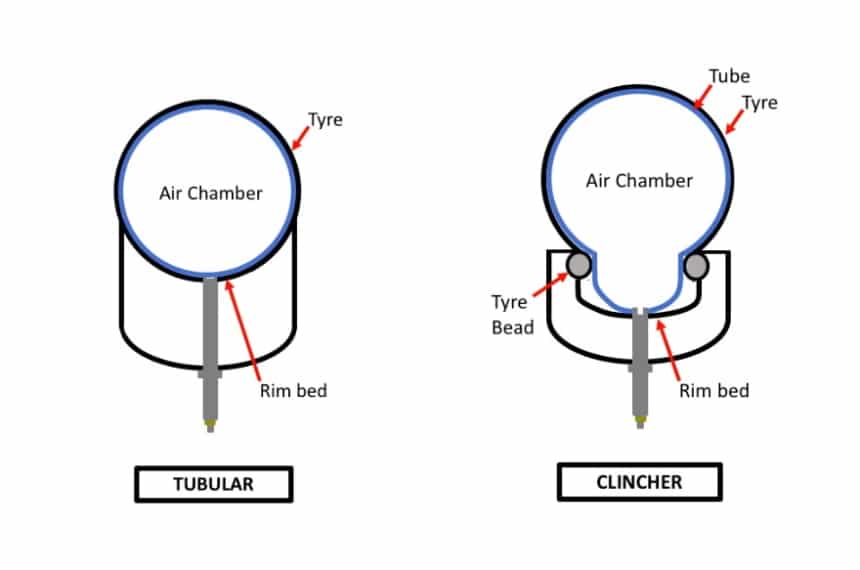
Both brands make bikes with both clincher and tubular tires. Clincher tires are more likely to be found on road bikes, like the Giant bikes, and the tubular style tends to be found in the more modern Trek bikes. That is because they weigh a bit less than the clincher style, which has a metal grip. However, one of the drawbacks of a tubular tire is that it is more expensive to replace. You can read more about the tubular vs. clincher tires in this article, which states that these tires are more preferable.
Both Trek and Giant have their own branded technology for suspension, and in general, one type Is not considered to be superior to another. Giant uses Maestro Systems in order to make climbing a hill more efficient, and both Trek and Giant use ReAktifv, a suspension system that helps make the climbing of hills more efficient.
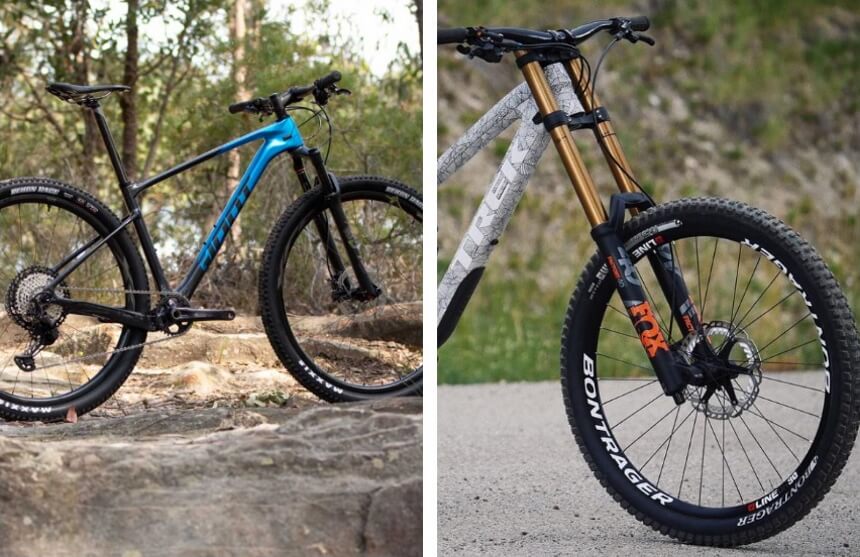
The Tourister bike references in the general design also make it seem like a bike for an older individual. Many of the Trek bikes are true mountain bikes with raised seats and ten or more speeds, with designs that seem more aerodynamic and modern. Trek is always coming out with the latest model that looks more and more streamlined every year, whereas Giant keeps merging the practical with performance in the form of hybrid mountain Tourister bikes with raised handlebars and with frames designed for males and females.
Both brands have a great reputation, and it is hard to find any issues with either Trek or Giant unless “buying American” is a huge consideration for you. In that case, you will want to choose trek, which has always been manufactured out of Waterloo, Wisconsin. If you don’t want to buy foreign, If it’s racing you are into, then Trek beats out Giant, but only slightly, with their brand winning the Tour de France 6 times. Both companies began in the 1970s, with Trek based in Waterloo, Wisconsin, and Giant based overseas in Taiwan.
For the most part, Giant bikes cost much less than Trek bikes. This is because Giant bikes are manufactured in Taiwan, where it is cheaper to make almost anything.
When it comes to warranties, both the Trek and Giant brands offer a lifetime warranty on most of their frames, but both brands also have some exceptions. Giant offers a lifetime warranty on all frames except their downhill models, which provide a three-year warranty. Trek offers a 5-year warranty for swing arms on full suspension bikes, a three-year warranty on aluminum swing arms and a two-year warranty on carbon swing arms and rear components.
Warranties for both brands are limited to the manufacturer’s defects in workmanship. Both offer a one-year warranty on paintwork and decals.
- Which One to Choose: Trek or Giant
You might still be wondering which is better: Trek or Giant? Part of your decision about which brand to use might be based on whether or not you want to buy a road bike or an endurance bike. A road bike tends to be a faster bicycle, like the mountain bike made by Trek. If you choose a road bike, you want a light bike with larger gear ratios. Like the ones that Trek makes, race bikes also tend to have narrower tires for reduced weight and superior aerodynamics. You don’t want a race bike if you are just riding around town to get groceries as they don’t have any mount bikes. An endurance bike, such as the many made by Giant ten, has seats that place the rider in a more relaxed position so you don’t have to lean over the bars and smaller gear ratios, making it easier to ride the bike uphill. This makes the Giant bike a better choice for the more casual rider. Read this article to understand better the difference between a road bike and an endurance bike.
Both Trek and Giant make road bikes and mountain bikes, with Trek being at the American pinnacle of design of both of these types of bicycles. But are Giant road bikes good? Best Trek’s road bikes for beginners are meant to travel for high speeds on flat surfaces and are meant for racers or exercising. Mountain bikes are slightly more functional and are also recreational, with knobby tires that can navigate steep ascents and descents and rough trails. If you are all about adventure, speed, and fun, the Trek bike is likely the best choice.
If you are looking for a similar mountain bike with a flat tire with high tensile gears that aren’t as expensive but travel just as fast as a trek, then take a few minutes to discover these bikes that are affordable knock-offs of Trek Mountain bikes . On the other hand, if you want an affordable bike similar to the lightweight Giant hybrids that have the rider sitting comfortably upright on a lower seat, check out the Schwinn hybrid 21-speed with a cargo rack.
- Where can I buy a Giant bike?
You can visit their site of search ‘Giant bikes near me’ or ‘Giant bicycle dealers near me’ and choose what you want to purchase from numerous offers.
- Where are Trek bikes made?
Most Trek bicycles are manufactured outside the United States, in countries including the Netherlands, Germany, Taiwan, and China.
- When did Trek stop making bikes in the USA?
According to a source inside the Trek engineering team, they stopped producing a small amount of bikes in their U.S. facilities in December 2017.
- Does Giant own Trek?
Giant doesn’t necessarily own Trek, but they manufacture the frames for Trek in Taiwan.
- Final thoughts
Now that you have a little more information about Trek vs Giant bikes, you will be able to do some comparative shopping and select the bike that is right for your lifestyle. As both companies make all types of bikes, you might face three options: Trek vs Giant road bikes, Giant vs Trek hybrid bikes, and Trek vs Giant mountain bikes. Both companies have produced a lot of crossover designs over the past few decades, so you might find it useful to decide what the bike might mostly be used for simple. Then lean towards shopping for a Trek if you want something more athletic and rugged or towards a giant bike if you want something that is truly a hybrid but with more user-friendly features such as a rear carrier. It is also a great idea to check out similar bikes made by other companies such as Schwinn, which might be cheaper. Hopefully, the research we have accumulated in this article helps you decide when it comes to Giant vs. Trek bikes so that you can choose the brand that makes the most sense for your comfort level, goals, and lifestyle.
Your email address will not be published. Required fields are marked *
Save my name, email, and website in this browser for the next time I comment.
Post Comment
- 1 can you ride a bike in the snow
- 2 bmx trick list
- 3 who invented cycle
- 4 bike parts diagram
- 5 bike wheel size chart
- electric bikes for hunting Most popular | Aug., 2023
- 2 bikes for 10 year old
- 3 bikes for tall men
- 4 tricycles for adults
- 5 dirt jump bikes

Giant Mountain Bike vs. Trek: What’s the Difference?
Giant and Trek are among today’s biggest and most popular mountain bike brands within the mountain bike industry.
Both Trek and Giant are heavily used by mountain bikers at all skill levels, and both are considered the best bikes to have. Similarly, both brands offer an impressive selection of mountain bikes, accessories, and options enabling riders to customize their experience and capabilities.
Arguably, the most important difference between these two leading mountain bike manufacturers is their focus. Giant mountain bikes are significantly more affordable and their focus is mainly on producing reliable mountain bikes, while Trek caters to more niche needs and delivers the best mountain bikes to a more exclusive buying demographic.
Surviving an Auto Collision on My Giant Mountain Bike
Recently, I was hit by a Honda Civic that was turning left as I was traversing the crosswalk on my Giant mountain bike. The guy wasn’t looking where he was going, he was just watching for cars coming from the oncoming merge lane.
I plopped onto the hood of his car, rolled onto the pavement, and instantly knew I was fine. The question was, what about my bike?
The front wheel was bent like a clock in a Salvador Dali painting. I carried it home, looked it over from rim to rim and found that only the wheel was damaged after being banged into the ground at high speed.
This, in my view, shows Giant mountain bikes are durable. But are they the best mountain bike brand? Well, that depends.
Giant and Trek – a Breakdown
Trek: This company has enjoyed massive growth in recent years. Trek makes mountain bikes that cater to a wide range of needs, styles, sports, and price points.
Trek is well known as a source for high-end, quality mountain bikes. They have mountain bikes priced all over the spectrum—some great, some bad, and some absolutely incredible.
Giant: Giant Bicycles was started in 1972 by a group of Tour de France racers. This company is far more focused on mountain bikes alone. Its selection is more limited, especially since Trek won over much of its market shares.
However, Giant Bicycles has more affordable mountain bikes. Also, they manufacture bikes for other brands, including Trek; in fact, many Trek bikes use a Giant bike frame.
That means you might be able to start with a basic product from Giant and upgrade it over time to reach Trek-level quality.
Whichever brand of mountain bike you go with, chances are you’ll be able to find products to match your needs. In the worst-case scenario, you might end up with an imperfect rig that can be improved upon as you gain experience.
Unless your budget is very tight, the difference in price points between Trek and Giant won’t be a huge issue.
Giant Mountain Bikes Versus Trek Mountain Bikes: Which is Best for You?
When it comes to buying the perfect mountain bike for you, the best choice is going to be something that suits your body type, your riding style, the terrain and weather you tend to ride in, your budget, and your personal preference. No matter what brand you buy, the best way to find the right mountain bike is to shop in person, and try out any bike you are considering for purchase.
If you absolutely have to buy online, it’s best to look for reviews. Better still, look the model up on YouTube and see if there are any videos showing the bike in question being subjected to hard use.
Forums are also a good resource, and you should be able to get info on just about any bike or bike product if you find the right mountain biking forum.
Trek vs. Giant – a Comparison
Both of these brands have high-end, premium options to choose from. Both brands deliver capable products able to handle tough terrain and challenging conditions.
One important attribute both brands share is the use of proprietary technology rendering integrated designs that make them highly customizable.
This means you might have trouble fitting Trek parts to Giant frames. But then again, many Trek mountain bikes include Giant-designed frames. So, experiences will vary.
All of the tech used in the production of products from both brands is meant to add performance and support for riders at all levels of capability. So what does all this mean?
It means that if you’re new to the sport, or if your needs aren’t particularly demanding or specific, either brand will serve you well. It also means that if you have particular needs, you’re going to have to do your own research.
But have no fear, this review is not going to leave you confused. We’re going to break down the differences between these two brands in detail.
Biggest Differences Between Giant Mountain Bikes and Trek Bikes
If there’s a difference that will bring your decision making process to a close, it’s most likely to be one of these:
- Trek’s prices are set in accordance with the types of feature integration they offer.
- Giant bikes, by contrast, are less expensive.
- Giant is a primary producer of bike frames and makes its own bikes while Trek uses Giant-engineered frames on many of its bikes.
- Giant bikes are considered to be more oriented toward comfort and better geared toward hobby-level riders, but they still build performance-capable machines.
- Trek bikes are widely considered to be more capable and more performance oriented, but with less focus on comfort.
- Trek is known for its reliable, racing-level bikes.
- Giant is more interested in making products with a wide range of options.
What Makes Trek Great?
Out of the two bike brands, Trek is all about performance. If you’re an experienced, competitive, or demanding rider, a Trek mountain bike is more likely to offer the capabilities you need out of the two mountain bike options.
If you are a high-level rider, anything less than Trek simply won’t do.
What Makes Giant Great?
The Giant brand is all about serving a wider audience. Their bikes are less expensive, but they are still top quality.
They don’t need a lot of advanced engineering, since they excel in producing quality entry- to mid-level bikes. These bikes can traverse rough terrain and handle sharp corners thanks to the aluminum Giant uses in the frames.
Again, if you’re a new or casual rider, you’ll find everything you’re looking for under the Giant banner. Advanced riders may find a Giant option that suits their needs, but would likely be better served by Trek.
You can get bikes from both brands in the same price range; however, in general, you’ll need a few extra bucks for a Trek as they are more expensive . Giant offers more variety in the lower price range, largely because they purchase in bulk to get the parts cheaper.
The cheaper the bike, the less capability it will have. And just because a bicycle has disc brakes, it doesn’t mean that it’s suitable for mountain biking and doing drops and jumps.
Trek vs. Giant – Final Feature Breakdown
To the untrained eye, when comparing bikes, products under both brands are going to be very similar and hard to tell apart. But both Giant and Trek employ different technological systems, such as suspension technology, in the manufacturing process that work to deliver specific performance perimeters.
Trek and Giant also have a hybrid option that combines the features of a road bike with certain characteristics of a mountain bike.
Trek: Core Features
- Alpha Aluminum: Trek uses advanced aluminum which can be stretched to its maximum absorption point. This enables the company to make aluminum components that are even lighter than a standard aluminum frame.
- OCLV Carbon: First brought to market in 1992, OCLV Carbon fiber is used to create a startlingly lightweight carbon frame while retaining a strength rating comparable to high-carbon, hardened spring steel.
- Active Braking Pivot: Trek’s proprietary braking pivot is a rear suspension technology system that adds power during braking, enabling the rider to remain steady. This is done through isolation of the pedal and drive motion from the suspension.
Giant: Core Features
- Carrier Energypak: Giant’s Carrier Energypak gives riders a compact and convenient system for hauling tools and equipment during a ride. It delivers an added 400wh of electric power, adding to your hauling ability even when carrying lots of gear.
- Compact Road: This innovative stability solution uses a downward sloping top tube beneath the seat, making riding easier for people of size who might otherwise find riding uncomfortable.
- Advanced Composite Tech: Giant’s answer to Trek’s OCLV Carbon, Giant uses ACT integrated high-end raw carbon in the frame of the bike, making it more stable and providing an excellent strength to weight ratio. The front fork is secured by an innovative triangle design, molded into a single, continuous piece.
Trek offers a lifetime warranty on most bikes’ frames and different warranties on the different swing arms. Full-suspension bike swing arms get a five-year warranty, carbon swing arms and carbon frames get a two-year warranty, and aluminum swing arms and frames get a three-year warranty.
Giant offers a lifetime warranty on all their frames, except for their downhill models. Non-Giant branded parts are protected by the original manufacturer.
As you can see, when it comes to design, Trek is about performance, speed, and competition. Conversely, Giant is more about catering to buyers who are less focused on riding and more interested in using the bike for commuting and recreational purposes.
So the choice you make depends on your personal preference. But whichever brand you choose to get your bike from, it’s important that you gain maximum performance efficiency from it.
These are two very different companies that make great bikes! At the end of the day, a Giant mountain bike is a lot more like a personal vehicle, whereas a Trek bike is a performance machine for cycling enthusiasts, athletes, and thrill seekers.
While Giant does come out cheaper in the standard bike market, their high-end offerings can turn an ordinary road bike into a regular pack mule. On the other hand, if charging down the trail in a blaze of glory is more your style, Trek has got you covered.
Either way, always look for better quality components when purchasing a bike.

Giant Mountain Bike vs Trek Which is Better
You probably already suffer from a headache looking for all the differences between mountain bike brands. If you need to decide between a Giant mountain bike or a Trek you obviously wonder which is better. I had the same question so I decided to find out.
Giant vs Trek mountain bikes which is better? In general, if you look at Giant and Trek MTB’s in the same price range, Giant is better. Giant has slightly better components than Trek because they are the largest manufacturer and can buy components cheaper.
But let’s be honest here, it completely depends on the bike and the price level. You can’t compare a $1500 giant mountain bike to an $800 Trek bike. Both brands offer great mountain bikes, let’s see what makes these two brands different.
Performance
Suspension technology, so which one should you go for, the differences between giant mountain bikes and trek.
Both are major mountain bike brands and leaders in the industry, for the right price you get an awesome bike. Some Trek frames are in fact from Giant! Both make great bikes and crappy bikes depending on the price range, anything over $800 is often far superior to a $600-$700 bike.
If you’re a very fast rider or rather heavy don’t get a Giant. Giant’s MTB suspension have long and flexible lower link which is less comfortable at high speeds and heavy riders might consider it a bit too flexible. Your weight might compress the suspension too much wasting energy and performance.
Only just a couple of years ago Trek had better geometry and suspension design but nowadays there’s hardly any noticeable difference. The most important part is the frame, both offer great frames but with a few small differences . Most of the components come from Shimano or SRAM.

Giant offers the best bang for your buck, they recently even cut prices where Trek did the opposite. From a value proposition, Trek is less attractive , with the recent difference in prices, this is where Giant stands out. Unless you’re able to get a discount on a Trek, budget-wise Giant is the better choice.
Giant is the largest manufacturer in the world and makes bikes for every brand, their frames are top quality and even Trek sometimes has Giant frames (check the photos from the Giant bike factory in Taiwan). Other people report that they find Giant’s frames not stiff enough, but it depends on what you like best and it’s less relevant when it comes to mountain biking. If you’re not the racing type or break bikes occasionally, get a Giant.
Others find Giant’s frame angles less progressive compared to Trek . When it comes to hydraforming (a process using fluid and high pressure to shape the tube), Trek is doing trickier stuff to gain strength and stiffness. Most of the time Trek does a better job optimizing frames when it comes to the strength-to-weight . In doubt and if you feel they are equal, check which of them offers the best warranty.
Both perform excellent depending on the bike and your personal preference or body type. Heavyweights and racers will often be better off with a Trek because of the differences in suspension. Trek is often considered like a plow bike and Giant is more playful , this also depends on how you set up your bike. The more you pay the better the performance and this goes for every reputable brand.
A $500 mountain bike performs a lot worse compared to a higher-end $1500 bike. You get what you pay for and sometimes saving a little bit more is really worth it if you’re looking at a lower range bike. I’d stay away from the cheaper models if you can unless you only plan to use it on roads and pavements.
Here’s a big difference, you often get better quality components when you buy a Giant MTB considering you’re comparing bikes at the same price range. Like mentioned before, Giant can get their parts cheaper because they own many of the factories and buy in bulk. The components often don’t have anything to do with the brands, they buy them from other manufacturers but the price makes a difference.
Both make great designs and this is really a personal preference. It’s all in the eye of the beholder but often people like Trek designs better . This also might have to do with the brand’s status. Giant is less shiny/flashy, like the Toyota of mountain bikes. They’re reliable, more affordable but not the sexiest.
Giant’s focus is on the quality of the parts and Trek is more into research and development trying to innovate and make better bikes. Suspension layout, for example, is a bit different on Trek bikes.
Trek has a better reputation as they won more contests. Trek won the Tour De France 6 times placing them in the elite class. Though the Tour doesn’t have much to do with buying a mountain bike, their reputation makes them more appealing to many riders.
Both companies have been manufacturing mountain bikes for a long time. Giant was founded in 1972, Trek somewhere around 1976. Both have a great reputation and a lot of experience in designing, manufacturing and developing new technologies.
Warranty often is limited to defects in material and workmanship. Crashing or damaging your bike in some way often isn’t covered , make sure to read the policies carefully.
Giant offers a lifetime warranty of frames except for downhill models (3 years). 10 years warranty for rigid forms and a one-year warranty for paint finish and decals. Other original parts (the non-Giant branded parts) are covered by the original manufacturer.
Trek offers a lifetime warranty for frames (with a few exceptions). You get 5 years warranty on swing arms on full suspension MTB’s, 3 years on session, slash, scratch, and Ticket aluminum swing arms and frames. 2 years warranty of session and slash carbon frames and carbon swing arms, all rear suspension linkage components and 1-year warranty of paint and decals
Both brands have their own versions of suspension technology, neither is really better than the other . Giant uses the Maestro System and uses their exclusive ABP, Re:Aktiv and Monolink systems. The suspension tech is about isolating the pedal and drive motion from the suspension. This means that when climbing, not much energy goes into the suspension compression, making your climb more efficient.
That depends entirely on your budget and your personal preference. As you can see it’s hard to pick a winner here. Both brands offer excellent bikes, but if you’re on a tight budget you should know by now which one you to pick. When it comes to design and aesthetics, Trek is often favored. I must admit that I like their designs a lot better, and I’m a sucker for shiny things.
Speaking about shiny things, what about Specialized VS Cannondale or Giant VS Specialized ? Or maybe you’re more interested in how Trek compares to specialized ?
Anyway, I owned both brands and agree that Giants tend to ride a bit more playful and Trek feels like a more stable ride. This depends on the bike so take my opinion with a grain of salt.
Ride them both, this is the only way to find out what you like more and which fits your riding style best . This way you can judge for yourself instead of relying on what others say. The most important thing is to get the best bike frame and parts within your budget.
Though Giant seems to offer affordable parts and bikes, prices also depend on where you live. Haggle a bit if you go for last year’s model, it will save you a lot of money and the markup for stores is pretty high.

I always had a thing for cycling sports and love almost anything that involves bikes and boards. I work part-time as a designer in the tech industry and work on my blogs whenever I can.

Are Giant Bikes Good – Better Than Trek?

So, you are in the market for a new bicycle and are wondering if a Giant brand bike is the right choice. You may also be considering whether a Giant bike is better than a Trek brand bicycle.
Are Giant bikes good, and are they better than Trek bikes? Yes, as the world’s largest manufacturer of bicycles, Giant bikes are good. Whether they are better than Trek, depends on your budget, riding style and personal preference.
Giant Bicycles, as the biggest bike brand in the world, is also known as one of the best budget bike brands. It consistently gets high ratings in its mountain and hybrid bike categories. Giant is also known for giving a comfortable ride.
Trek Bicycles state that they are “the world’s best bikes” on their website . So, if they are the best bikes in the world, how does Giant compare to them? Both manufacturers are major brands and leaders in the industry, so the answer might not be so clear.
Table of Contents
What Makes Giant Bicycles Good?
What makes Giant Bicycles good, if not great, rests in their location and their history as an original equipment manufacturer (OEM). Before they manufactured their own bikes, they were making them for other bicycle brands, which helped them rise as industry leaders.
BTW, did you know REI & REI Co-op are having a Bike Sale and Clearance? Click HERE to check it out
Giant Bicycles History
Founded in 1972 in Taiwan, Giant manufactured and supplied bikes to brands like the U.S.-based Schwinn Bicycle Company. It quickly grew to manufacture bikes for other brands, such as Trek.
When Schwinn broke off to go with a cheaper manufacturer in China in 1987, Giant started creating its own brand of bikes.
It’s All About Location
Being based in Taiwan benefits Giant in several ways. The island contains a very close-knit supply chain that is rich in precision-machinery development expertise and mature in manufacturing technology.
With a small distance between suppliers and OEM companies, lead times in materials, design, and manufacturing can all be shortened. What makes them different from their competitors is that from ideation to raw materials to finished product, Giant is able to control the whole process in-house.
Giant is able to produce bikes in half the time that it would take in the United States and can bring them to market with much lower costs. But lower costs don’t mean lower quality. Giant prides itself on being rooted in both technology and quality. They are less concerned with marketing and more concerned with offering the best product at the lowest possible price.
Advanced Technology
Giant has always been at the forefront of significant technological advances. They have helped popularize at least two advances that are standard industry-wide.
In 1987, with the high-volume production of their CADEX carbon-frame bike, Giant was the first major bicycle company to mass-produce a carbon road bike.
In 1997, Giant introduced a road bike with “compact geometry,” which meant it had a sloping top tube and smaller rear triangle. This type of frame is now used throughout the industry.
You might like to Read: Presta Valve Vs Schrader
How Giant Bicycles Compare to Trek Bikes
Comparing Giant Bicycles and Trek Bikes is a little like comparing Ford and Chevrolet vehicles. They are both respected brands with great reputations. But you will still have thousands of people voting for one brand over the other, and visa versa. There are some slight differences between the bikes that could help you decide whether you prefer a Giant bike over a Trek bike.
Overall, Giant is less expensive than Trek. Because of where they are manufactured, Giant is able to keep the costs of its bike lower. Trek bikes do offer budget-friendly rides, but their bikes, on average, are more expensive to purchase.
Because Giant started as an OEM, their frames are top quality. Some of Trek’s bike frames even come from Giant. However, it has been reported that Giant frames aren’t stiff enough, but, again, it comes down to personal preference.
Trek has developed a way to gain strength and stiffness to their frames and optimizes their frames for strength-to-weight ratio.
Performance
Both brands perform well. But depending on which style you are interested in, one may be slightly better than the other. If you are heavier or are a racer, you might prefer a Trek because of its suspension differences.
Performance is also affected by price. The higher-priced styles of both brands will offer better performance, but this is true for any bike brand.
Giant wins this comparison. You are more likely to get better, and sometimes more, components when purchasing a Giant Bicycle. Since Giant gets their parts cheaper, they can provide better quality parts.
This comes down to personal preference. Both brands manufacture great designs, but more people tend to prefer Trek bikes. Giant is less shiny or flashy with their designs, while Trek tends to be the opposite.
Giants focus is more on the quality of their parts while Trek is more into research and development, trying to innovate and make their bikes better looking and feeling.
Both companies have excellent reputations and have been manufacturing bikes since the 1970s. Trek might slightly edge out Giant, though, as their bikes won the Tour de France 6 times, and their company is and always has been in the United States (Waterloo, Wisconsin). Some people prefer American-made products over those made overseas in Taiwan.
Warranties for both brands are limited to defects in material and workmanship. Giant offers a lifetime warranty on all frames, except their downhill models, which is three years. They also offer a one-year warranty for paint finish and decals. Any non-Giant branded parts are covered by the original manufacturer.
Trek offers a lifetime warranty for most of their frames, a 5-year warranty for swing arms on full-suspension bikes, a three-year warranty on aluminum swing arms and frames, a two-year warranty on carbon swing arms and frames and rear suspension components, and a one-year warranty on paint and decals.
Suspension Technology
Both Giant and Trek have their own suspension technology, and neither is better than the other. Giant uses the Maestro System with their exclusive ABP, Re: Aktiv and Monolink systems. Their suspension technology focuses on isolating the pedal and drive motion from the suspension – meaning that when you climb a hill, for example, the climb is more efficient.
Giant Bicycles Bikes
As the world’s largest bike manufacturer, Giant actually has a giant selection of road bikes , mountain bikes, cyclocross, hybrids, and e-bikes . They also offer a separate brand of bikes for women called Liv.
Many of their new, top-tier bikes have new standard features, such as Giant’s own power meter called the Giant Power Pro. This crankset power meter uses a magnetic USB recharging system and promises +/- 2% accuracy. Below is a list of Giant’s most popular bikes:
Giant Contend
The Contend is Giant’s entry-level aluminum-framed road bike. This is a great model if you are just starting out riding or you want a reliable commuter or winter-season bike. It is designed to feel fast and fun, and it has a tall frame with a short reach. The wheelbase is long for stability and comfort.
Giant uses its OverDrive steerer, which is their name – and invented concept – for a tapered steerer. The OverDrive steerer makes for better handling and more stiffness through the front end.
The Defy is Giant’s answer to an endurance road bike. They offer a comfortable ride that can be enjoyed for the entire day. It also offers fast handling and quick acceleration.
The basic model, which is actually called Defy Advanced, comes in three different build specs. All three feature their advanced-grade composite frame with an OverDrive steerer. Their Defy Advanced Pro uses the OverDrive 2 and their RideSense monitor, a wireless sensor that can send wheel speed and cadence information to a computer.
The women’s Liv brand Avail comes in aluminum and carbon versions and mirrors the qualities of the Defy.
Giant Propel
It’s not a water drink, it’s Giant’s aero road bike. The Propel uses disc brakes with flat-mount technology. They state that during aerodynamic testing, their disc-brake integration produced less drag than traditional caliper brakes.
The disc models boast a new integrated Contact SLR/SL handlebar/stem unit with internal cable routing. The tubeless-ready Giant SLR wheel system also comes with aero spokes and a taller 65-millimeter rim depth at the rear.
The basic Giant Propel Advanced has an advanced-grade composite frame and the OverDrive steerer. The Propel Advanced 0 comes with Ultegra Di2 and the wind-cheating Giant SL1 aero wheel system. The Advanced Pro comes with deep-section wheels, more integrated cable routing and the RideSense sensor. The top models are made with SL-grade carbon frames.
The Liv Enviliv is Giant’s women’s version of the aero road bike and shares many of its technologies with the Propel.
Giant Trinity
This bike has been raced at the top. Dutch racer, Tom Dumoulin rode it to become the UCI time trial world champion in 2017. The Trinity Advanced has tube shaping for resistance and hidden brakes. The Advanced Pro has storage space that’s perfect for Ironman triathlons.
The Liv time trial bike, Avow , comes with the same storage and hydration facilities.
Giant AnyRoad
The AnyRoad offers a long endurance ride over mixed terrain. There is the AnyRoad with its aluminum frame and the AnyRoad CoMax with a carbon frame. It is an adventure road bike with mechanical disc brakes and larger tires that will roll over most anything. The top tube slopes dramatically, providing a low stand-over height and better maneuverability.

Giant Escape
The Escape is one of Giant’s hybrid bikes. It combines the quick and nimble frame of a road bike with the rough and ready wide tires and a flat bar of a mountain bike. They work for commuters as well as fitness riders. It has a road-style frame, triple chainset, disc brakes, and plenty of gears.
The Liv Alight is a similar version to the men’s Escape.
Giant offers many more styles of bikes, including mountain bikes, cyclocross, leisure bikes, and even a folding bike and e-bike. They seem to have something for everyone.
As they prefer to go the traditional route, Giant sells their bikes in bike shops throughout the world. There are more than 12,000 retailers offering Giant bikes, so you are bound to find one close to you.
Is Giant Better Than Trek?
The best way to know if you think that Giant is better than Trek is to find out for yourself. Look at both, ride both and feel both. It will come down to personal preference, riding style and affordability.
They both offer a variety of quality bikes to choose from, and with Giant’s motto of “Ride it. Race it. Don’t worry about it,” as well as Trek’s motto of “Ride bikes. Have fun. Feel good,” you really can’t go wrong with either brand.
You might also enjoy

Best Electric Bike Motors – Everything You Need to Know

12 Reasons to Commute Daily on an E-Bike

How to Store your Beloved Bike: Tips and Tricks

Troubleshooting Common e-Bike Problems: The Ultimate Guide

How to Convert Your Bike to an Ebike

Are Ebikes Worth It? All You Need to Know!

What Is an ebike? Here’s Everything You Need to Know!

Special, Unusual, & Alternative Bike Types
Stay in touch, this site is owned and operated by bicycle universe llc. copyright ©2024 bicycle universe llc..
Specialized vs Trek vs Giant: Which Bike Brand is Best for You?
Specialized, Trek and Giant stand out as three of the most prominent bike brands on the market today. With so many quality options to choose from, it can be tough deciding which brand best suits your cycling needs and budget.
This in-depth comparison examines all the key differences between Specialized, Trek and Giant across the factors that matter most:
Table of Contents
A Brief History of Each Brand
Specialized was founded in 1974 and is based in California. They helped pioneer mountain biking and have invested heavily in research around aerodynamics, suspension and overall bike performance.
Trek got its start in 1976 in Wisconsin. Trek helped popularize carbon fiber frames and has equipped numerous Tour de France winners. They now offer a wide range of reputable road, mountain and electric bikes.
Giant was established in 1972 in Taiwan and is now the world’s largest bike manufacturer. They’re recognized for high quality at lower price points and innovation in aluminum/composite material frames.
Bike Categories Offered
All three brands offer road, mountain, hybrid, electric and fitness bikes. However, each excels in particular categories:
- Specialized is known for high-performance road bikes and mountain bikes. Popular models include the Tarmac, Roubaix, Stumpjumper and Epic.
- Trek offers renowned off-road mountain bikes like the Fuel EX and road bikes such as the Domane. Their FX hybrid series is also popular.
- Giant has models for all levels across styles but is especially respected for affordable road bikes like the Contend and the Anthem X mountain bike.
Frame Technology and Materials
Specialized, Trek and Giant all use combinations of aluminum, carbon fiber, steel and titanium to create light yet durable bike frames:
- Specialized uses FACT carbon fiber on higher-end bikes. Their M5 alloy frames offer vibration damping.
- Trek employs OCLV carbon on road models and Alpha Aluminum for mountain bikes. Ballistec carbon increases stiffness.
- Giant developed the lightweight Advanced Grade Composite used across many bikes. AluxX aluminum improves strength-to-weight ratio.
Overall, Specialized and Trek focus on high-performance materials while Giant also offers great value alloy frames.
Suspension and Components
- Specialized uses the auto-adjusting Brain shocks and a Rx Trail Tune suspension system for all-terrain handling.
- Trek equips mountain and hybrid bikes with the efficient RE:Aktiv shock system with ThruShaft damper.
- Giant employs the Maestro Suspension system for smooth, responsive rear suspension and pedaling.
All three brands often use Shimano or SRAM component groups. Trek and Specialized have wider component customization for a personalized ride.
Pricing and Affordability
Giant offers the most affordable entry-level road and mountain bikes, like the Escape 3 hybrid for under $500.
Specialized bike pricing starts around $1,000 for basic road models up to $10,000 for high-end builds.
Trek also has a few models around $600 but most range from $1,200 to $12,000 for carbon fiber performance bikes.
Overall Giant takes the lead for budget-friendly options, while Specialized and Trek compete on high-performance premium bikes.
Warranties and Service
All three brands provide strong warranties:
- Giant offers limited lifetime frame warranties plus 3 years parts/electronics warranty
- Specialized provides a lifetime frame warranty and 2 year parts warranty
- Trek matches with a lifetime frame warranty and 2 year warranty on components
Specialized and Giant have a slight edge for dealer service network and maintenance. Trek compensates with free tuning and valuations.
Rider Fit and Handling
- Specialized uses Body Geometry to optimize bike fit ergonomics for all-day comfort.
- Trek employs IsoSpeed decouplers to isolate vibration and smooth the ride.
- Giant focuses on stable endurance geometry for their aluminum Defy road bike line.
For the most natural, relaxed fit, Giant takes the lead. Trek suits aggressive racers. Specialized balances performance and comfort.
Resale Value
All three brands make bikes that hold value relatively well if kept in good condition. However, some standout models include:
- Specialized S-Works high-performance bikes retain value extremely well. For example, the S-Works Tarmac road bike might only depreciate $500-800 in 5 years.
- Trek Madone road bikes also continue to demand high prices, falling about 30% after 3 years.
- Giant Reign and Anthem mountain bikes hold value better than most mainstream brands, often still selling for 30% or more of original MSRP after 3-5 years.
Conclusion: Which Brand is Best For You?
So which brand comes out on top? While all three make great bikes, here are some key considerations:
- Giant is ideal for beginners and anyone seeking an affordable but reliable bike for around $500-$1,500.
- Trek is perfect for intermediate to advanced riders looking for a high-performance road or mountain bike priced $1,500 and up.
- Specialized hits the sweet spot for enthusiasts seeking a blend of value, quality components and innovative technology across disciplines.
The bottom line is that each of these reputable brands produces excellent bicycles. By identifying your budget, experience level and riding needs, you can determine which brand offers the best fit. Try out some test rides and you’ll be ready to choose the perfect bike for you.


Best Trail Mountain Bikes Under $1,500
For first-time and long-time riders alike, we break down the more affordable end of the mountain bike spectrum.
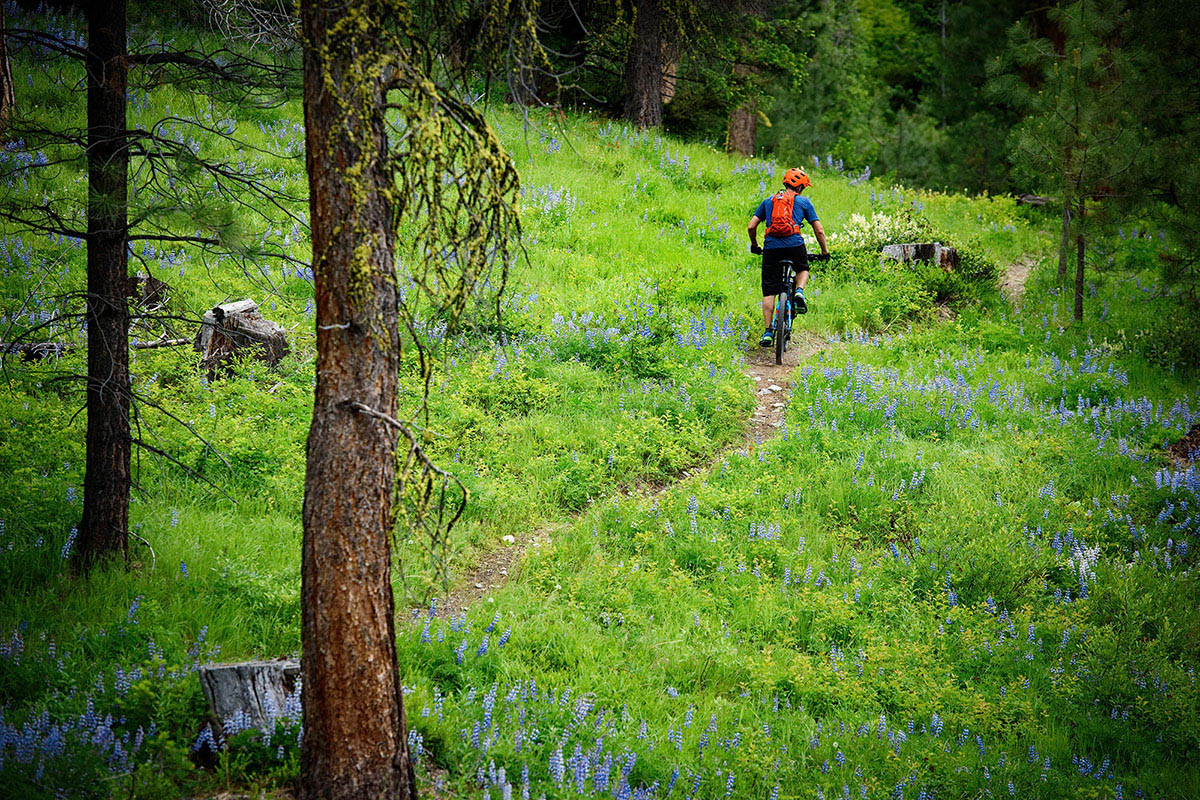
Jason Hummel Photography
We use affiliate links and may receive a small commission on purchases. Read more about us .
Not everyone needs a high-end mountain bike that breaks the bank. If you're new to the sport or ride infrequently, cheaper trail bikes offer plenty of performance and room to grow as a rider. The budget bikes below share a common formula: 27.5-inch or 29-inch wheels, adequate suspension for rough trails, and decent components. You can expect to make some sacrifices by saving, but there are plenty of solid options under $1,500 that leave room to upgrade as you progress. Keep in mind that hardtails will offer the best bang for your buck, but some full-suspension models are competitive enough to be included below. For more background information, see our comparison table and buying advice below the picks.
Editor’s note: We updated this guide on May 17, 2024, to amend the title, from "Best Mountain Bikes Under $1,000" to "Best Trail Mountain Bikes Under $1,500." This reflects the state of the current market: Prices have gone up, and innovation has trickled down from pricier bikes to more affordable models. As a result, many of the picks below are new, although most of the brands and collections are familiar.
Best Hardtail Under $1,500
1. cannondale habit ht 2 ($1,350).
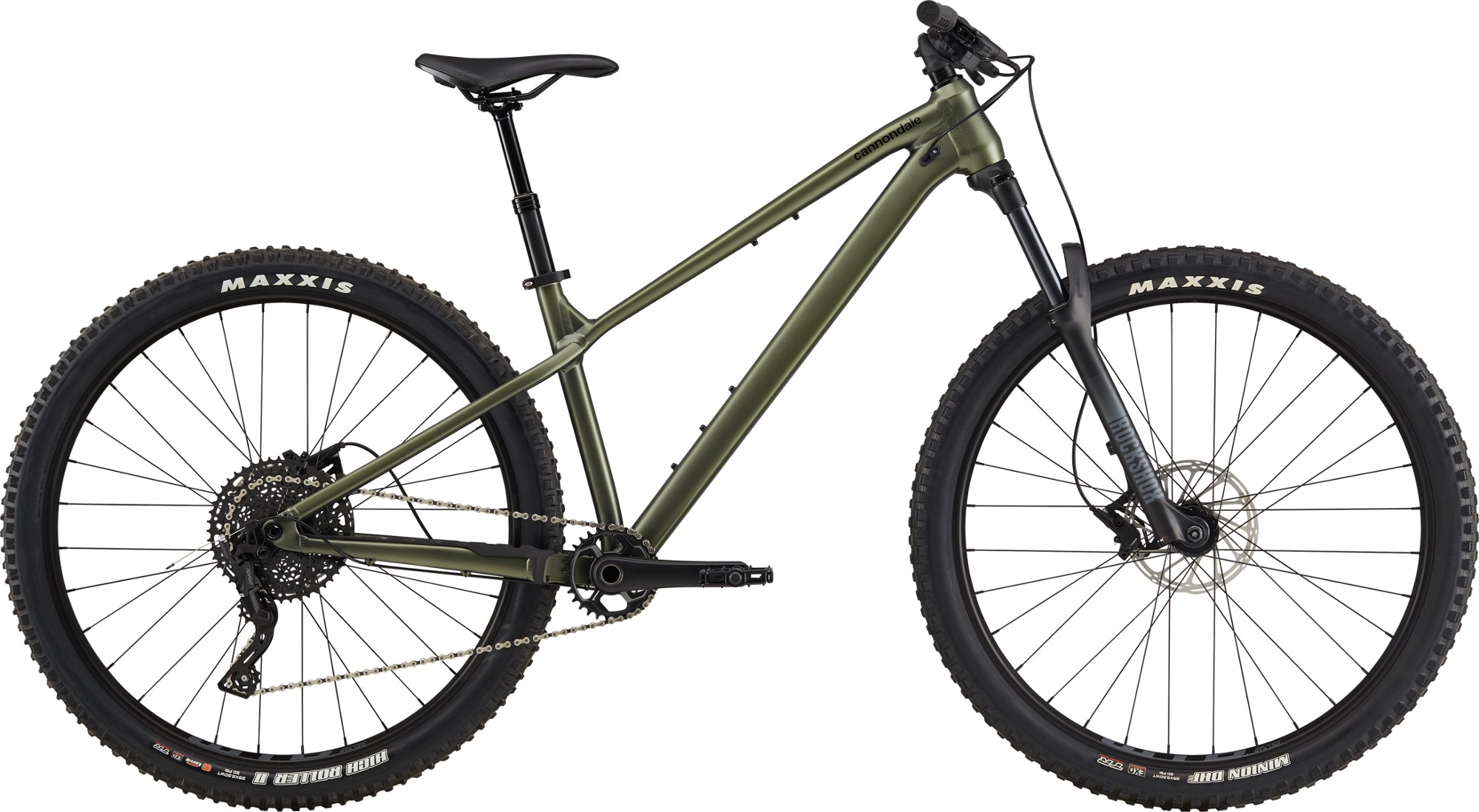
From high-end racing models to capable gravel grinders, Cannondale’s been pioneering bikes for more than five decades. And they’ve put together a stellar budget trail offering in their new Habit HT 2. For a very palatable $1,350, you get a dropper post, burly 29-inch tires, a healthy 130 millimeters of front suspension, and a well-engineered frame designed for aggressive riding—especially when the going gets steep. The drivetrain is 1 x 10, which offers fewer gears than many high-end builds, but it’s realistically enough for most riders. A final selling point is that the Habit is available at REI, which makes it easier to find the right fit and test the bike before you buy.
Like the rest of the bikes on our list, the budget-friendly Habit isn’t the best choice for fast-and-light races or double-black trails at your local bike park. However, it’s a capable all-rounder that will allow you to hone your skills without holding you back on most terrain. We do have one (relatively minor) design-related nitpick: At 130 millimeters on large and extra-large frames, the dropper post doesn’t get out of the way as much as we’d prefer, although it’s a very easy part to upgrade. All told, the Habit HT 2 checks all the boxes we look for in an affordable build, including good all-around capabilities and plenty of room for upgrades as you progress, earning it our top spot for 2024. See the Cannondale Habit HT 2
Best Full-Suspension Bike Under $1,500
2. polygon siskiu d6 se ($1,399).
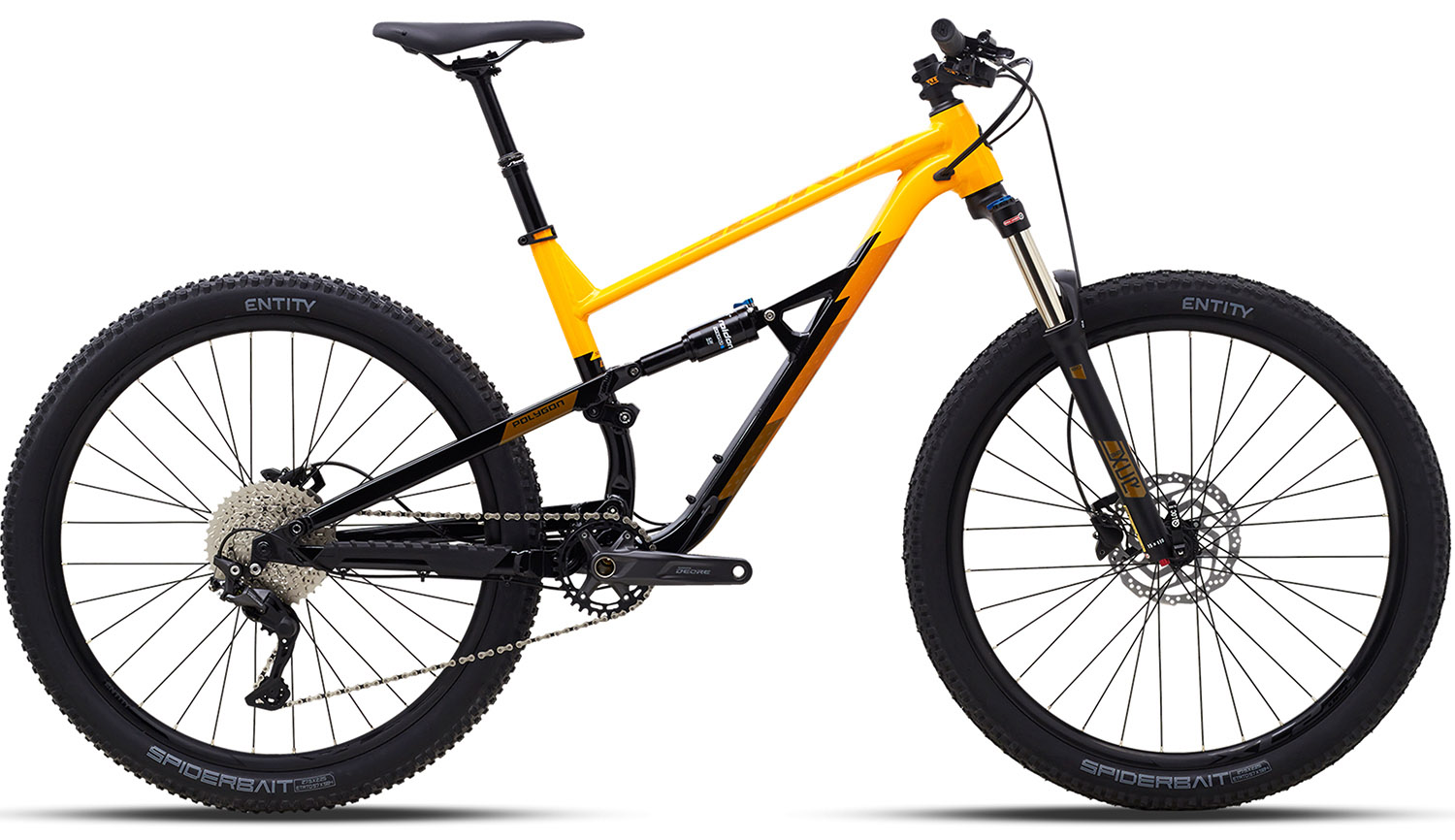
Finding a reliable full-suspension bike for less than $1,500 is a tall order, but consumer-direct powerhouse Polygon has put together a compelling build with their Siskiu D6 SE. First and foremost, it's important to note that any bike at this price point could use some upgrades to handle truly challenging terrain, but the Siskiu's frame is solid—it even comes stock with a dropper post. Compared to the standard D6, the SE also features a “boost” fork that allows for future upgrades without changing the front wheel (at this price point, upgrading the fork might be top of mind as you progress). Added up, the D6 SE will satisfy beginner and intermediate riders with ambitions of tackling tough and steep trails, though the stock build is best suited for moderate terrain.
Like the Habit HT2 above, the Siskiu D6 SE could use a couple more gears to keep on trucking up steep uphills. Slightly thicker tires wouldn't hurt, either. While purely subjective, we also aren't huge fans of the bike's "bumblebee"-esque colorway. Finally, Polygon's consumer-direct model is a bit of a double-edged sword: You save some serious cash by cutting out the middleman, but you won't get the luxury of trying the bike out before purchase. But the affordable $1,399 price point makes us feel better about ordering blind, and there's simply no denying the all-around value. If you're set on having both front and rear suspension, the Siskiu D6 SE handily gets our vote. See the Polygon Siskiu D6 SE
Best of the Rest
3. marin san quentin 2 ($1,399).
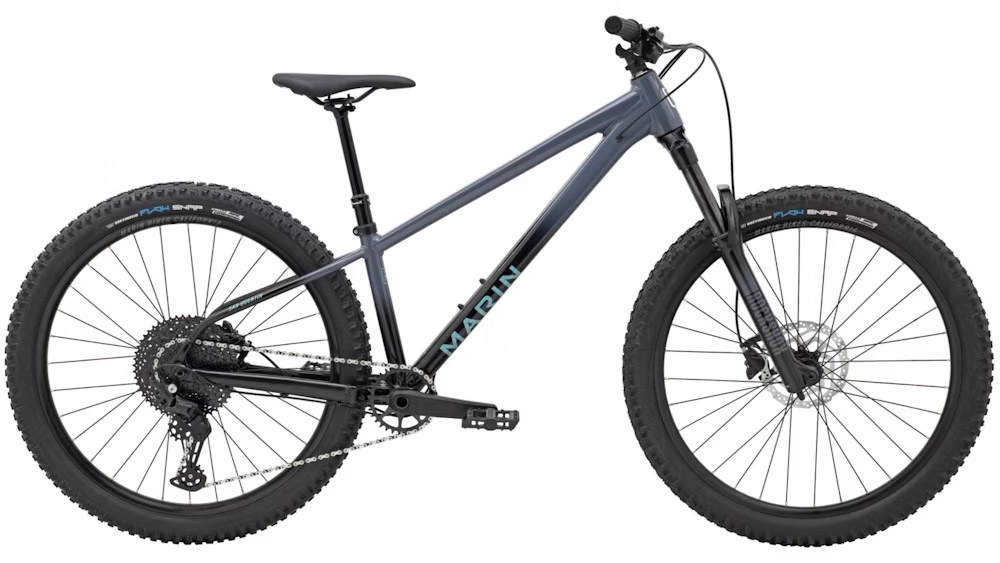
California-based Marin’s motto is “made for fun,” and their budget-friendly San Quentin 2 hardtail embodies that ethos. This bike features playful and maneuverable 27.5-inch tires and modern frame that’s well suited for aggressive riding—whether you’re shooting down a rocky descent or climbing back up (although the slack head tube angle translates to a slight preference for the former). You also get a respectable Shimano Deore 11-speed drivetrain, a rear thru-axle for added stiffness and security (it also makes for easier upgrades), and a dropper post with plenty of travel in most sizes (150mm for M-XL frames) to get out of the way when needed.
The San Quentin 2 goes head-to-head with the Habit HT 2 above, and it wasn’t an easy decision ranking the Cannondale higher. In parsing out the differences, the Marin has an additional 10 millimeters of travel for smoothing out bumps. On the flip side, the Habit boasts larger 29-inch tires, which we feel are a better match for beginner riders due to their added stability and more planted feel (although the Marin’s tires are a little wider). We also wish the San Quentin’s tires came tubeless-ready, as that’s one of the first upgrades that many riders make. Finally, the widespread availability of the Habit makes it easier to try out in person and fine-tune fit before buying. That said, if you prefer the playfulness of a 27.5-inch setup and don’t plan to go tubeless right away, the San Quentin is a competitive and similarly priced alternative. See the Marin San Quentin 2
4. Trek Roscoe 6 ($1,200)
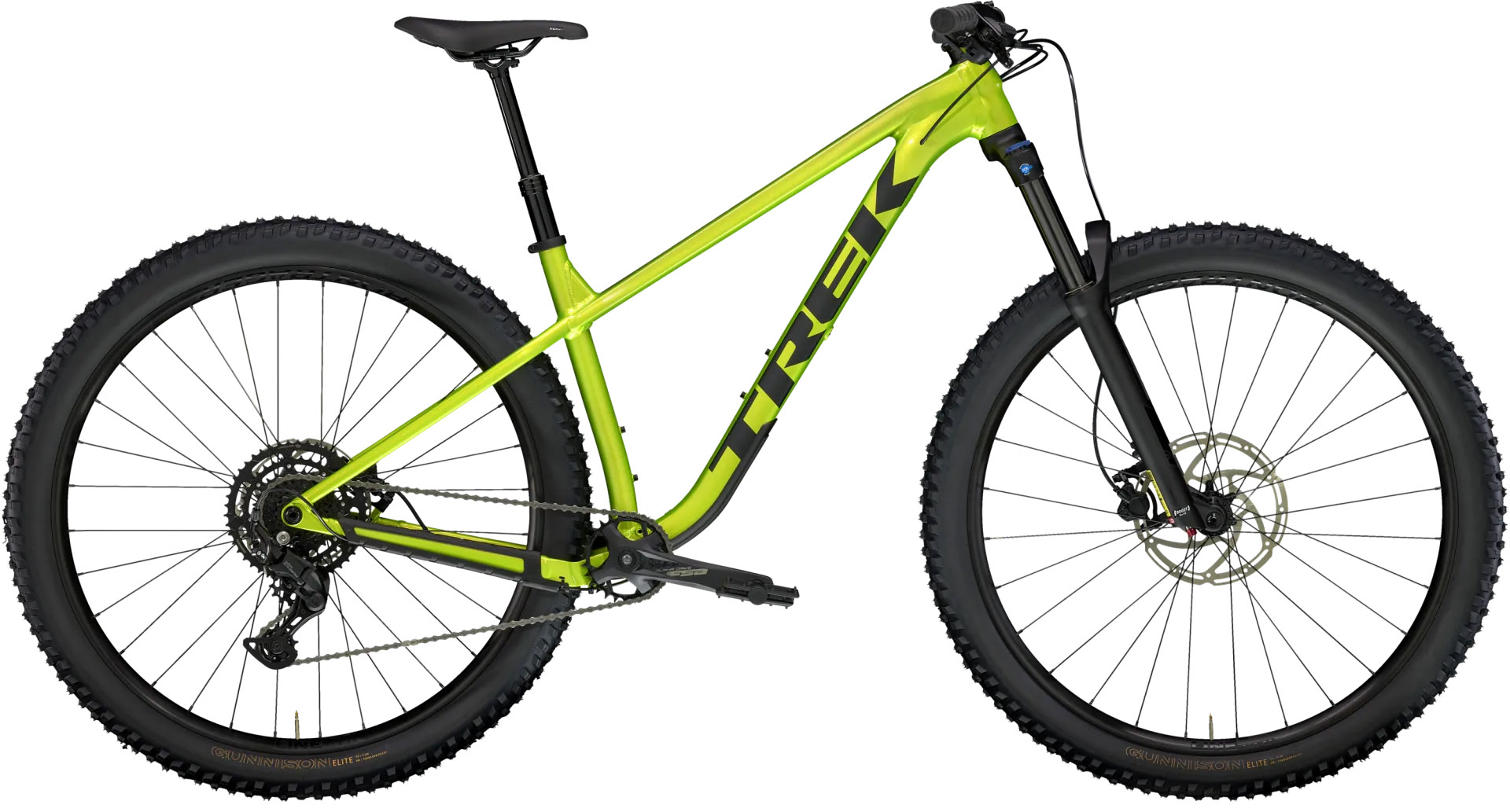
Trek’s Roscoe lineup is geared towards newer riders looking for flowy fun on singletrack, and the 6 strikes a solid balance for value-focused bikers looking for a dependable starter rig that can keep up as you progress. The bike features an extremely capable frame that’s rough trail-ready, a rear thru-axle, and tubeless-ready 29-inch tires that provide great stability and grip (the XS frame has 27.5-in. tires). You also get a generous, 140-millimeter suspension fork that has plenty of travel for soaking up bumps on rocky and rooty trails. Added up, the Roscoe 6 has solid bones for beginners and progressing intermediates, with easy-to-upgrade components as you climb the ranks.
That said, the Roscoe 6 does have some notable downsides. Similar to the Cannondale Habit above, the Trek’s dropper post boasts 130 millimeters of travel, which doesn’t get out of the way as much as we’d prefer on rowdy rides. The 9-speed drivetrain is also a bit limiting, especially as you start tackling more aggressive ascents and descents. With that in mind, we think the Habit above is worth the extra $150. But if price is your primary consideration and you don’t mind the slight drop in performance, the Roscoe isn’t far behind and will get you onto the trail for less than all the other bikes on our list. See the Trek Roscoe 6
5. Marin Pine Mountain 1 ($1,499)
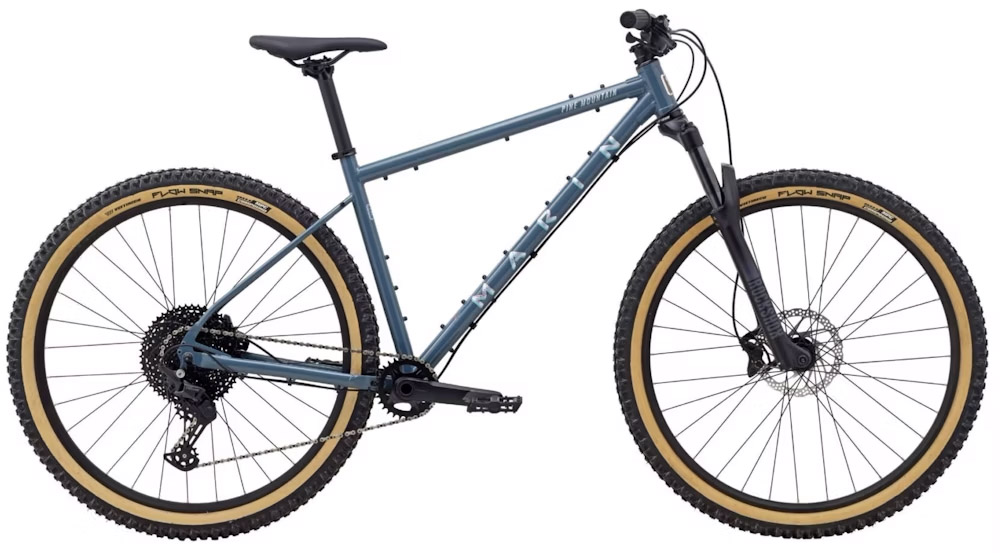
A lot of folks interested in a budget mountain bike are looking for a rig that can take them on long missions into the backcountry—from pavement to gravel to rugged singletrack. With a sturdy steel frame, sleek retro-meets-modern styling, and more bikepacking attachment points than most riders could ever need, Marin’s Pine Mountain 1 fits the bill to a T. The bike’s confidence-inspiring 29-inch wheels and meaty, 2.6-inch-wide tires keep you firmly connected to the ground, while the 66.5-degree head tube angle offers a nice balance between low-speed handling and high-speed stability. If you’re in the market for a bikepacking-ready design that can take you far off the beaten path across a wide variety of terrain, the Pine Mountain is our top choice.
What’s not to like with the Marin Pine Mountain 1? First, it lacks a dropper post, which we consider critical when moving fast over variable terrain. To be fair, several bikes here, including the Co-op Cycles DRT 1.3 and Specialized Fuse 27.5 below, feature droppers with so little travel that you’ll likely want to upgrade quickly, anyways. The Marin’s straight aluminum handlebars also do little to absorb impacts, and it’s noticeably less modern and aggressive than alternatives like the Cannondale Habit and Marin’s own San Quentin 2 above. In other words, if steep and rocky rides are what you’re after, we’d point you elsewhere. But for hauling the essentials on long and remote missions, the Pine Mountain is a very well-built and versatile option. See the Marin Pine Mountain 1
6. Co-op Cycles DRT 1.3 ($1,399)
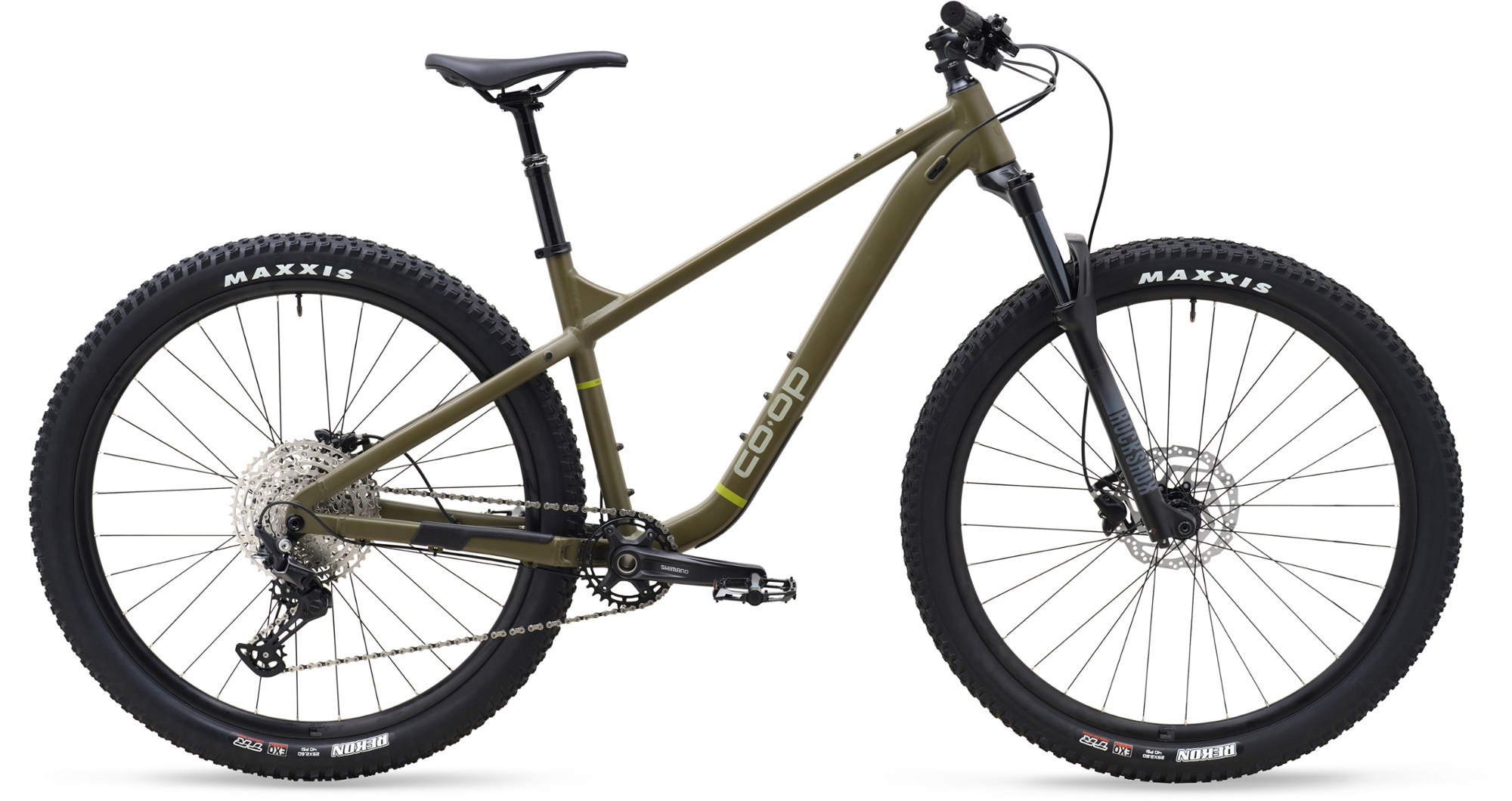
Not everybody needs the aggressive, modern geometry of hardtails like the Habit and San Quentin above. For those more interested in cruising mellow to moderate terrain than pushing their limits out of the gate, a basic frame will certainly get the job done—and that’s where Co-op Cycles’ DRT 1.3 shines. While relatively basic in terms of components and geometry, the 12-speed Shimano Deore drivetrain is capable of covering a wide range of terrain; you get helpful features like a dropper post, hydraulic disc brakes, and front and rear thru-axles; and the rims and tires come tubeless-ready for easy upgradeability. All told, it’s a smooth, easy-handling bike that’s much more performance-ready than Co-op Cycles’ cheaper DRT 1.1 ($599) and DRT 1.2 ($999) models.
In addition to being widely available at REI stores throughout the country, co-op members also get tons of benefits, including in-store bike assembly, a year of free adjustments, 20% off shop services, and more. A lifetime membership will run you $30, but a single bike purchase will easily offset that cost (if you purchase at full price, you'll get 10% back in annual dividends). Again, the DRT 1.3 isn’t as well suited for rough and steep terrain as the Habit or San Quentin 2 above, and many folks will opt to upgrade components like the tires, dropper post, and pedals, which will almost certainly push you over the $1,500 threshold. But if you’re just starting out and don’t plan to get too rowdy, the DRT 1.3 offers a solid amount of bang for your buck—especially if you take advantage of REI’s member benefits. See the Co-op Cycle DRT 1.3
7. Giant Stance ($1,400)
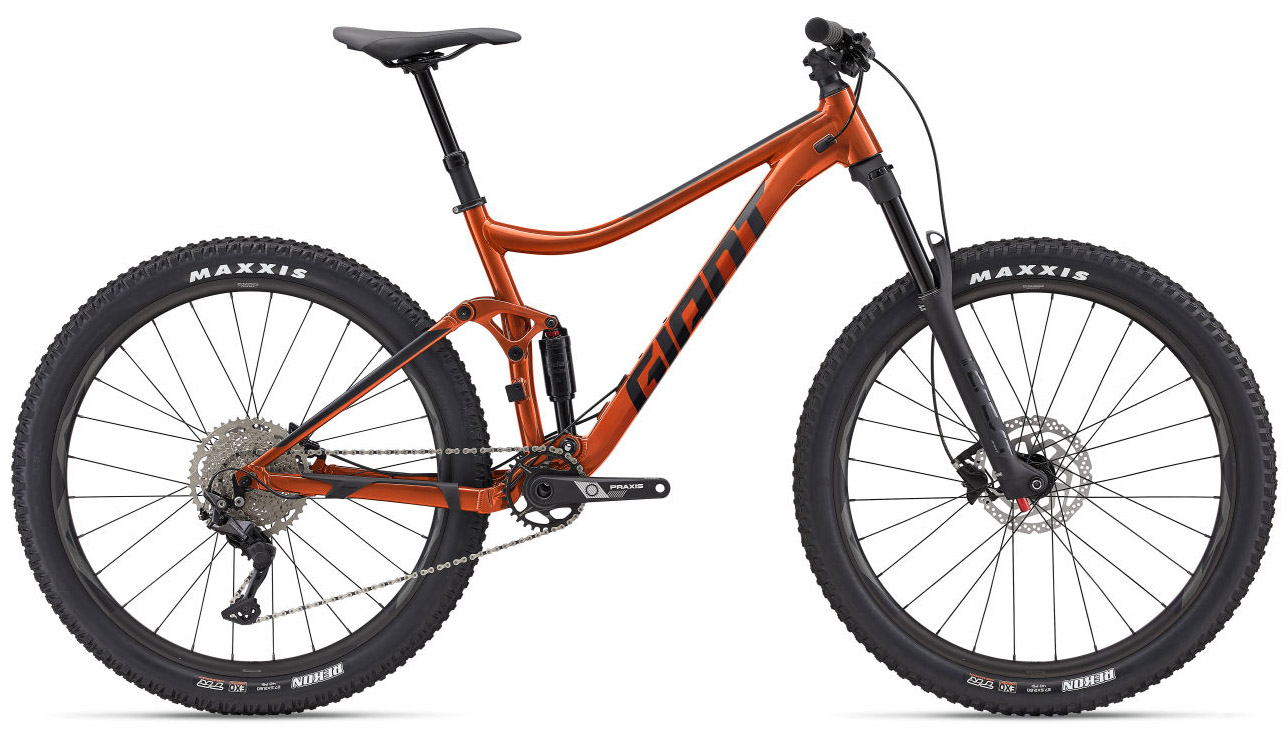
Giant is, well, a giant in the world of mountain biking, so it’s no surprise that they offer some hard-to-beat options for casual riders and those just starting out. Released in 2022, their entry-level Stance is technically a dated offering that’s since been overshadowed by newer, more expensive variations in the collection, but we still consider it a perfectly capable starter rig for those wanting full squish. Like the Polygon Siskiu D6 SE above, the Stance’s 120 millimeters of travel falls short for hardcore dropping and bashing, but it will do the trick for most recreational riders with a relatively forgiving, confidence-inspiring feel on rocky and rooty terrain. For those looking for a little more stability and traction, Giant also offers a 29er version for the same price.
Our biggest complaint about the Stance is its geometry: It’s noticeably less aggressive and what mountain bikers love to call “modern” than other bikes on this list. But riding style and fit are highly personalized and subjective, and if you’re after a flowy ride on moderate trails, the Stance is a great option to have on your radar. If you’re willing to forgo rear suspension, it’s also worth checking out Giant’s Fathom 2 hardtail , which retails for $1,500 but is currently on sale for $1,200. Hardtails are almost always the better value when compared to full-suspension rigs at the same price point, but in this case, we consider the Stance an entirely viable alternative for those set on a rear shock. See the Giant Stance
8. Specialized Fuse 27.5 ($1,500)
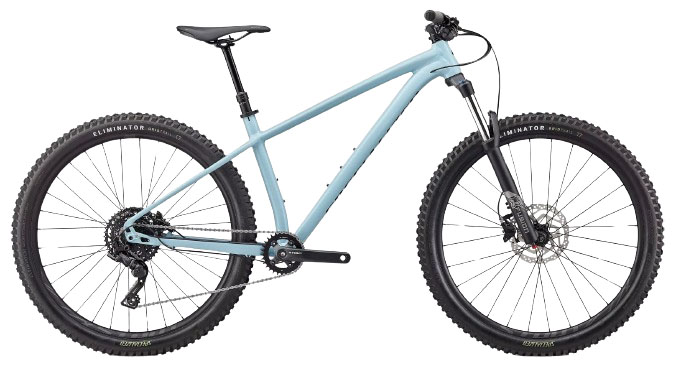
Specialized’s Fuse lineup has been a mainstay in the hardtail world since 2015, and this latest iteration got a thoroughly modern revamp. Following the latest trend in front-suspension bikes, it’s longer and lower than its predecessor, making for ample control and playfulness on steep singletrack. We also love its clean look and availability in two sleek colorways (we particularly like the Gloss Arctic Blue/Black frame shown to the right). Finally, while the Fuse 27.5’s $1,500 MSRP puts it at the top of our limit price-wise, it’s available for just $950 at the time of publishing, which in our opinion is a true steal.
However, the Specialized Fuse 27.5 starts to look a little less competitive when pitted against Marin’s San Quentin 2 above. Comparing the two, the Fuse has an inferior gearing setup with only 9 speeds. We also prefer the slightly beefier, 2.6-inch-wide tires that come stock on the San Quentin. Finally, the Fuse's X-Fusion coil fork isn’t very adjustable or refined in general. But every bike at this price point makes some sacrifices, and the front fork is often an early upgrade for progressing riders. At full price, we’d be inclined to go with the more capable and versatile San Quentin or the top-ranked Cannondale Habit, but the Fuse 27.5 is a great value at its current sale price. See the Specialized Fuse 27.5
9. Ari Wasatch Peak Comp 29 ($1,399)
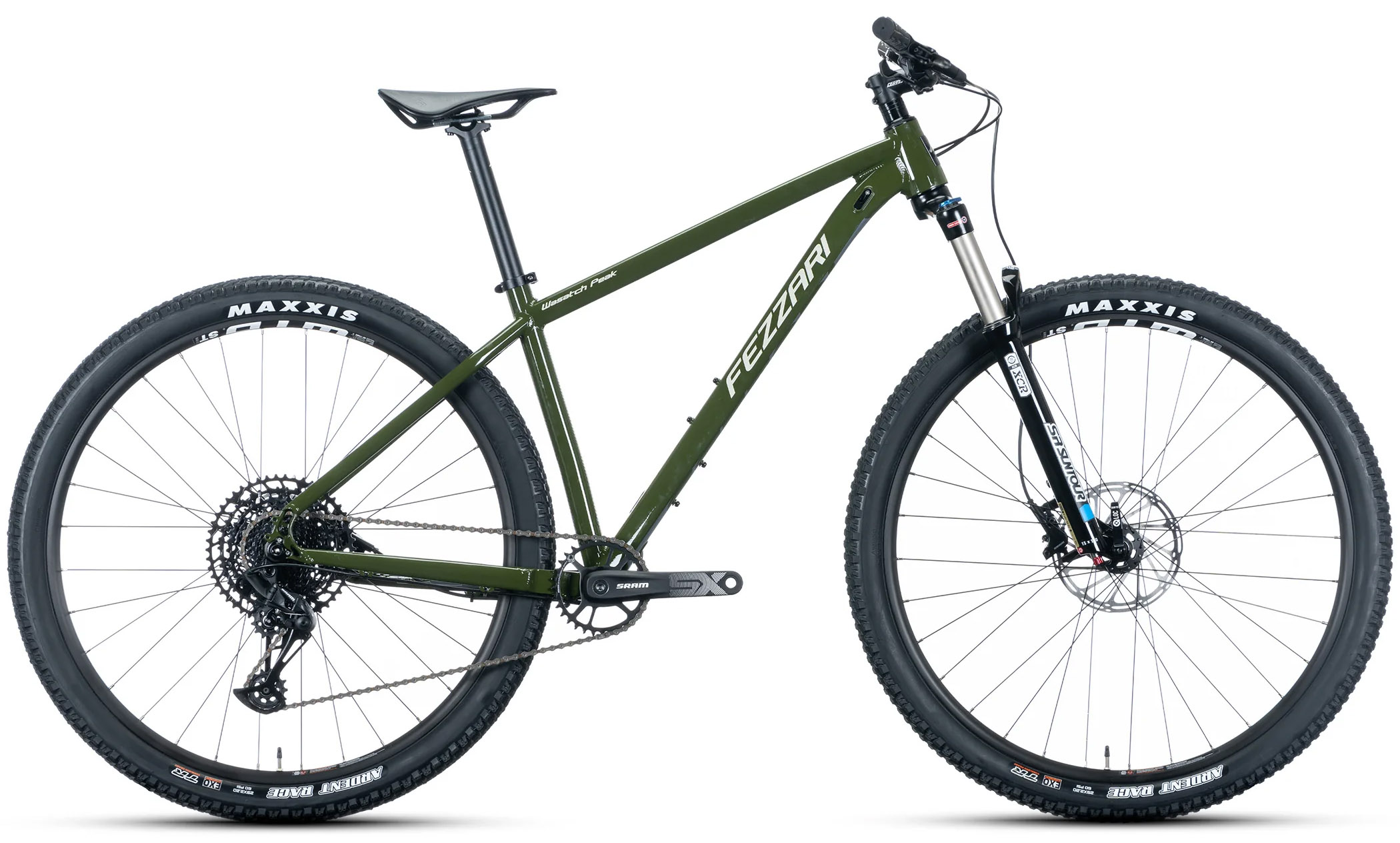
Consumer-direct pioneer Ari (formerly Fezzari) is known for providing top-notch bikes at unbeatable prices, and their Wasatch Peak is a case in point. Slotting in as the brand’s entry-level hardtail, this bike has a lot going for it. First off, the bike’s 12 gears make pedaling uphill and charging fast on flats and moderate downhills even more grin-inducing (though the SRAM SX Eagle drivetrain is a likely candidate for a future upgrade). Other highlights include large and confidence-inspiring 29-inch wheels, a quality aluminum frame, and a lifetime warranty to back it all up (in the event of a crash, you may be able to score discounted replacement parts by contacting customer service). And although they’re a consumer-direct brand, meaning you won’t be able to try the bike out before you buy, Ari’s online fit customization is very comprehensive—simply enter your measurements on the product page to ensure you’re getting the right size.
All that said, while the Wasatch Peak Comp 29 is a perfectly capable starter setup, it’s not the most exciting design. On hardtails, fatter tires generally help absorb impacts better than skinnier ones, and the Ari’s 2.2-inch-wide tires are the narrowest on our list. Tacking on a dropper post will also add a whopping $230 to the overall total, though many of the bikes above could benefit from an upgraded dropper. Finally, at the time of publishing, you can get the upgraded Wasatch Peak Elite—which features a better fork and brakes—for a very reasonable $1,399. We consider the Elite worth the price jump over the Comp 29 here, although we’ve opted to leave it off our list since it exceeds our $1,500 limit at its full $1,799 MSRP. See the Ari Wasatch Peak Comp 29
10. Salsa Rangefinder Deore 12-Speed 29 ($1,399)
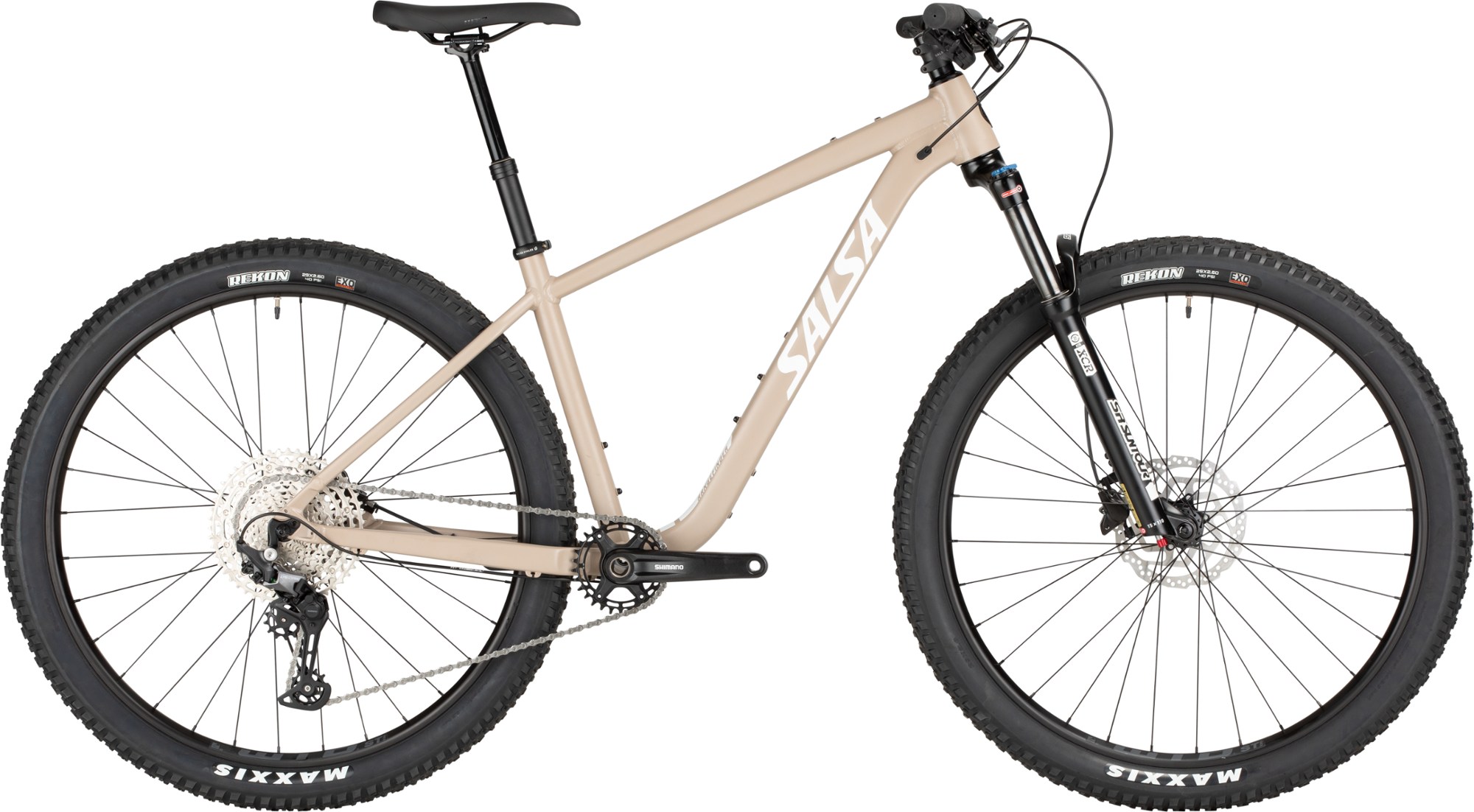
Salsa’s made a name for themselves for both budget and bikepacking options—and with the Rangefinder you get both. Like the Ari and Co-op Cycles offerings above, the bike features more or less the same entry-level front fork—Suntour’s basic XCR—as the Siskiu, Roscoe, and Wasatch Peak above. And one of the biggest benefits here is that the bike is available at REI, so riders can try it out and tailor the size, fit, and ride to their body—along with the other benefits of purchasing through the store mentioned above.
Why the last-place finish for the Salsa Rangefinder? One complaint is the frame, which is noticeably inferior to the options above for tackling steep and rough terrain. However, our biggest gripe is that the bike doesn’t feature tubeless-ready tires or a rear thru-axle, which makes it tougher to upgrade as you progress. This may not be a dealbreaker for casual riders who plan to run a stock setup out of the gate, but we consider the Marin Pine Mountain above to be the more capable and versatile all-around option at this price point (although you do get an extra gear with the Rangefinder). See the Salsa Rangefinder Deore 12-Speed 29
Mountain Bike Comparison Table
About our testing process.
From distant gravel adventures to rowdy singletrack, the Switchback Travel team loves getting out on two wheels. Former contributor Jamey Voss put together our initial selection of six sub-$1,000 mountain bikes in 2016, passing the torch to former editor-in-chief John Ellings in 2019. An avid mountain biker based in eastern Washington, John is a huge proponent of “lunch laps” and is on a bike any time his schedule—and the finnicky PNW weather—allows. Contributing editor Nick Mott took over the guide in 2024, overhauling the list to reflect rising bike prices (we upped the price threshold by $500) and massive improvements in technology, which have trickled down into the entry-level market.
The list of 10 budget-friendly bikes you see above is the result of our editors’ experiences on trails from mellow to technical, along with feedback from our gear-savvy freelancers and the online mountain biking community. In narrowing in on our top picks, we look at several factors. Along with a modern frame, the bikes that made our list all have decent drivetrains, capable front forks, and disc brakes out of the box—bonus points if they include a dropper post and rear thru-axle, too. Upgradeability is another key component, as many riders will opt to swap out tires, pedals, and other components as they progress. As the market continues to evolve, we’ll keep hitting the trails and amending the list above to reflect our favorites.

Mountain Bike Buying Advice
Mountain bike frame materials, mountain bike suspension, wheel size: 27.5 vs. 29er, drivetrain and gears, what do you get by spending more, buying a mountain bike online.
- Are Used Mountain Bikes Worth It?
In the sub-$1,500 price range, there isn’t a lot of variety in frame materials, which isn’t necessarily a bad thing. All of the bikes above—with the lone exception of the steel Marin Pine Mountain 1—use aluminum, and the reasons are pretty simple: From a performance standpoint, a well-made aluminum frame like the Alpha Gold that comes with Trek’s Roscoe 6 is stiff enough to withstand rough trails and plenty durable to avoid significant damage in an average crash. Compromises in aluminum include ride quality—that stiffness comes with a slightly harsher feel and less bump absorption—and longevity. The welds required to put together an aluminum frame can crack over time, and the material itself fatigues faster than alternatives like steel and carbon fiber (although many aluminum frames last a decade or more).
Steel is another reasonably affordable frame material that’s well known for its strength and toughness. Compared with aluminum, steel bikes are even longer-lasting and better-equipped to withstand years of rough use. But it comes with a weight penalty and less of a playful and nimble feel, which is why you rarely see it on a budget-oriented mountain bike (again, Marin's Pine Mountain 1 above is the only exception). Finally, carbon fiber is a common choice among premium bikes and comes with benefits like less weight—typically about a pound less than an equivalent aluminum frame—a cleaner look with no welds, and smoother ride quality. That said, it’s substantially more expensive to manufacture, so you won’t find any options at this low price point (expect to pay $4,000 or more for carbon).
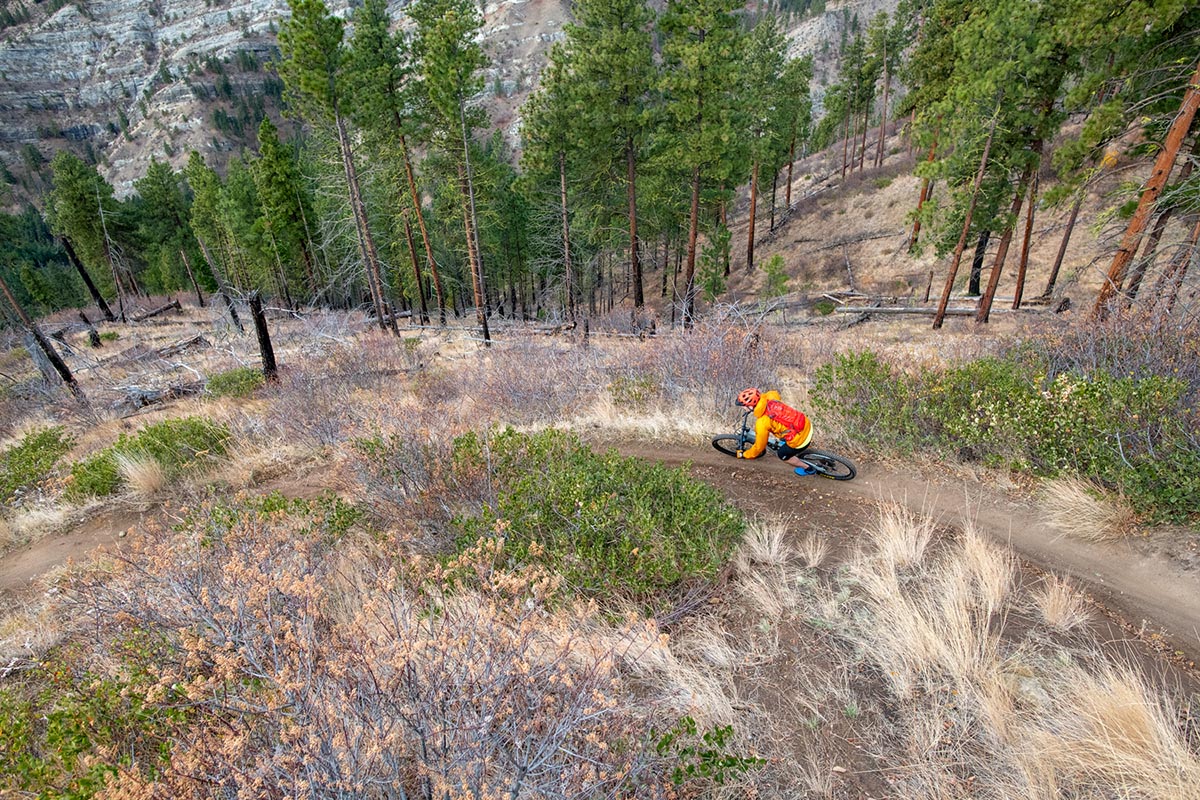
All of the bikes above can handle moderate terrain, which can include everything from smooth, rolling trails to rocks and roots galore. As a result, suspension range is relatively narrow, with front forks that offer between 120 and 140 millimeters of travel (a measurement of how much the shock absorbers can compress). At the low end are bikes like Co-op Cycles' DRT 1.3 and Salsa’s Rangefinder (both 120mm), which function a little better as cross-country workhorses than trail chargers. At the higher end is Trek's Roscoe 6, which boasts a generous 140 millimeters of travel. That added suspension (along with its aggressive frame style) means the Trek can handle rougher and bumpier terrain. It’s also worth pointing out that most options above are hardtails, which forgo spendy rear suspension and therefore generally offer better performance for the price. We’ve included a couple budget-friendly full-suspension rigs that are both capable and upgradeable, but if maximizing bang for your buck is a top priority, a hardtail is the way to go.
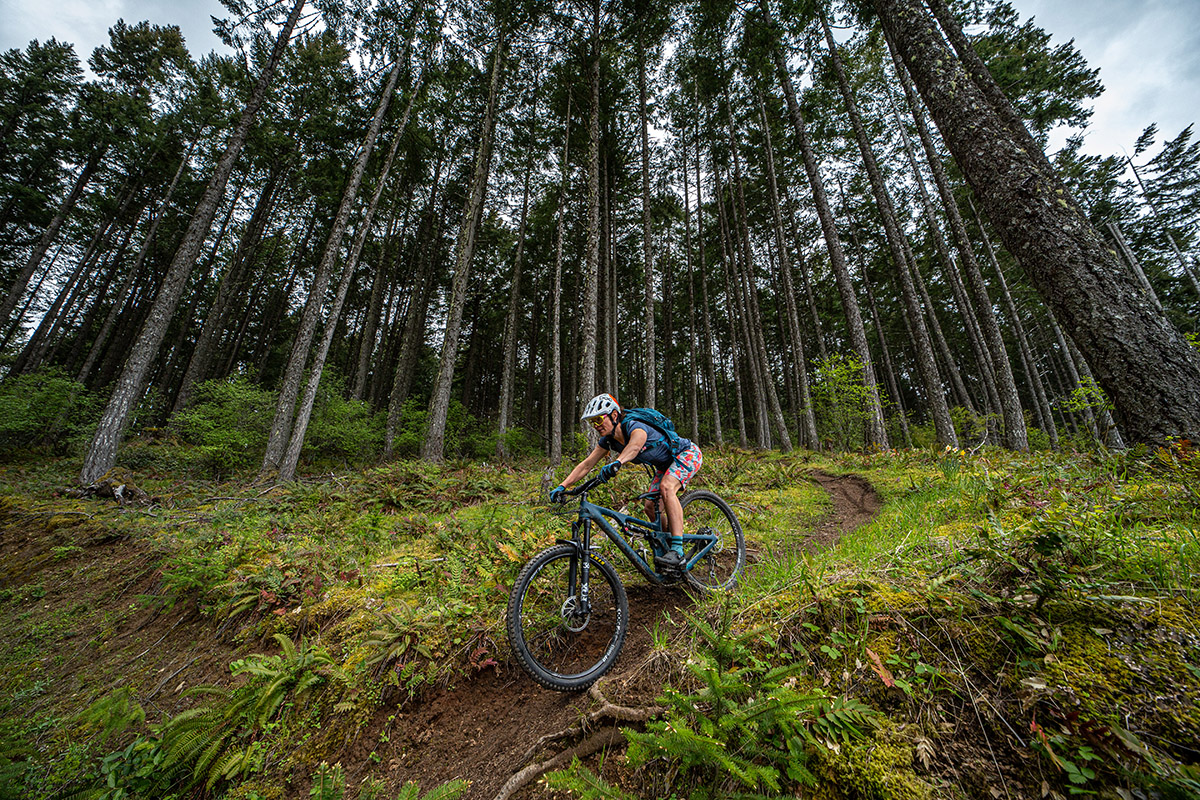
The old mountain bike standard, the 26-inch wheel and tire combo, has gone from being commonplace to a rarity. For budget bikes, the transition started with the large 29-inch wheels and has since moved to 27.5-inch. This wholesale shift in the industry can be traced to the improvement in rollover, traction, and stability that these larger tires provide (for more, see our article on 27.5 vs. 29er mountain bikes ). For 2024, we seem to have stabilized with a mix of 29 and 27.5 options. The 29er will offer slightly better performance, stability, and confidence, although you'll want to be sure to keep weight in check. And the same bike with 27.5-inch wheels will be a little easier to turn quickly without giving up too much in terms of rollover ability. Smaller riders may prefer the fit of the 27.5-inch design, and the opposite goes for tall folks on a 29er. As long as you get a proper size, we think both styles are a great match at this $1,500 price point.
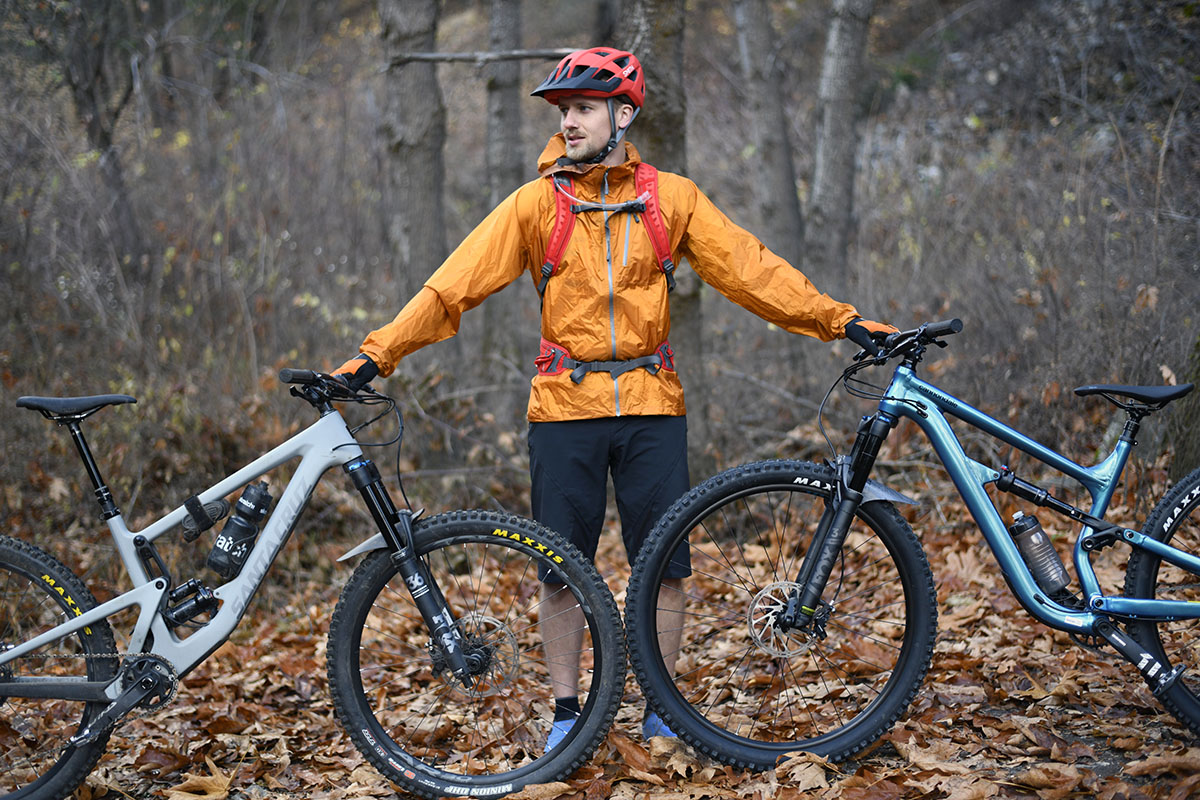
While on the topic, we’d be remiss not to touch on tubeless tires. Many of the options above come stock with tubeless-ready rims and tires, which are exactly as they sound: Going tubeless involves removing the inner tube and injecting sealant to plug any leaks and heal small punctures. In general, tubeless tires are more resilient to flats, allow you to run lower pressures for better traction, and have lower rolling resistance, which translates to more speed when compared with a standard setup. If you’ve never converted a bike to tubeless, we recommend getting it done by your local bike shop, as the process does take some finessing.
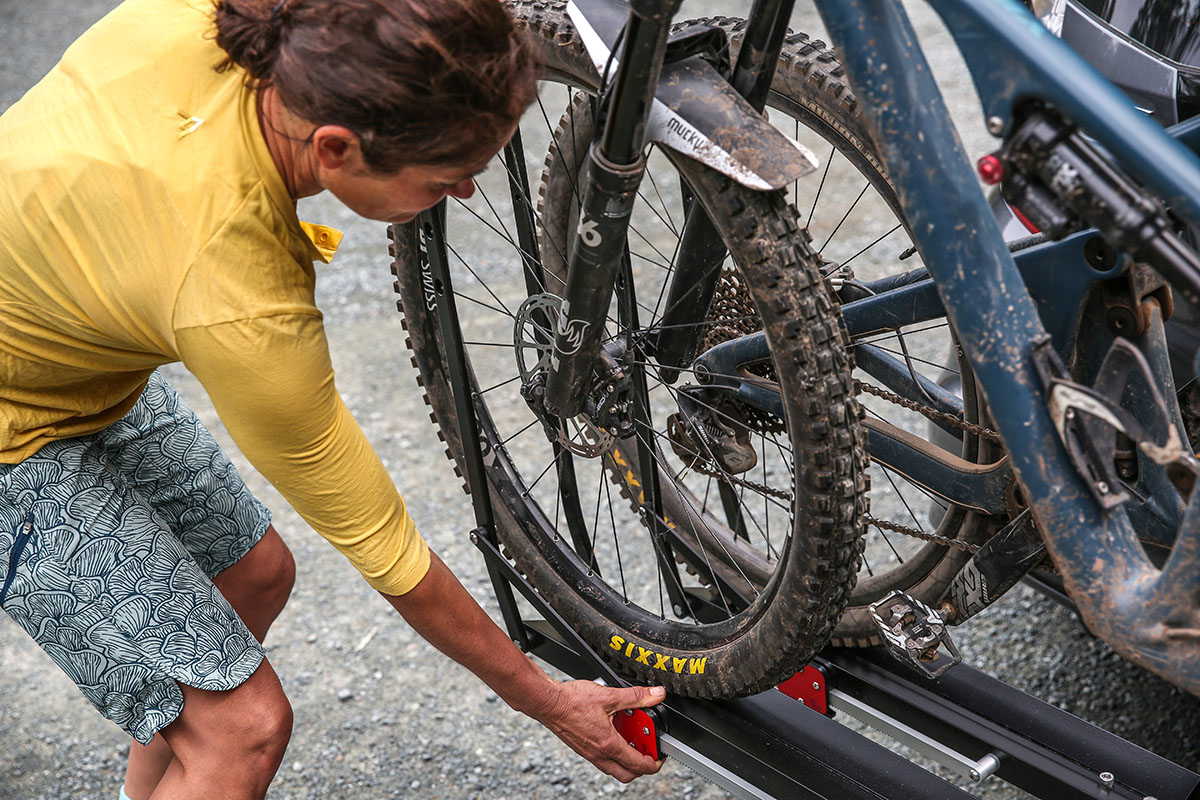
If you’re wanting a nimble and lightweight bike for under $1,500, we recommend keeping it simple: an aluminum frame, a front suspension fork, and 27.5-inch or 29-inch wheels. The closer you get to $1,500 with this setup, the lighter-weight and more responsive the bike will be. On average, these aluminum hardtails will hover around the 30-pound mark. As long as your expectations are reasonable (don’t expect a twitchy, feathery carbon race bike experience), you can have a whole lot of fun with a mid-range hardtail.
As the price goes down, the weight of the bike inevitably will go up. Everything from the crankset and drivetrain to handlebar and seat post gets heavier. And if you elect for a full-suspension bike like the Polygon Siskiu D6 SE at this price point, you can expect a pretty hefty bike. While it will undoubtedly be lighter than a bike made five to 10 years ago, the rear shock and linkage all add precious pounds to the bottom line. That said, it’s important to note that within a narrow price range like $1,000 to $1,500, bikes with similar frame designs, suspension, and components will not vary all that much, so don’t fret too much about going too heavy.
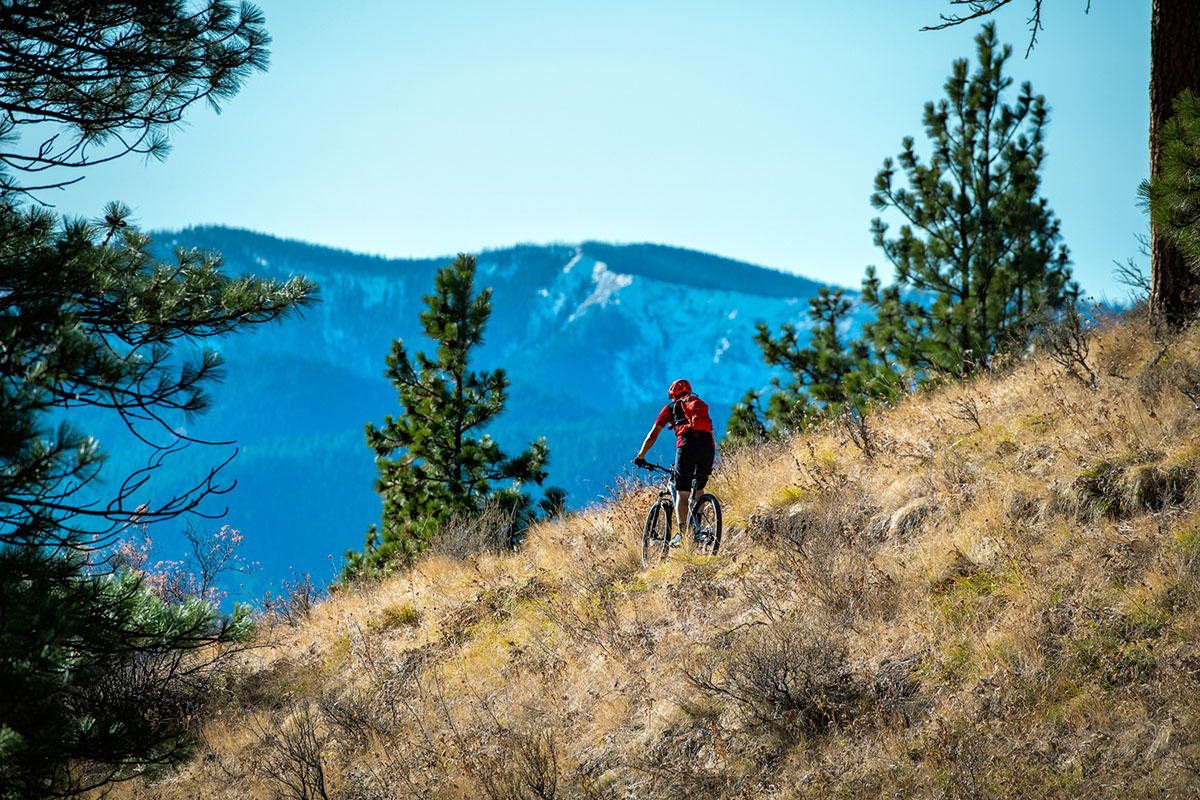
At first glance, it may appear that having more gears is a good thing—27 is better than 20, right? But that 27-gear (3 in the front, 9 in the rear) ride is actually far less intuitive to use. On the trail, you need crisp shifts to react to ascents and descents, and swapping from the big to small chain ring in the front is a real time killer—not to mention a lot of excess weight and complexity. The options above range from 9 to 12 gears, with bikes like the Trek Roscoe 6 at the low end of the spectrum and REI Co-op DRT 1.3 at the high. Most offerings above sit right in the middle. In general, we find 9 to be perfectly functional for many uses. But that few gears, even with a decently large spread, won't cut it for longer rides with reasonably steep climbs and descents. If you can find a bike with 10-12 gears for under $1,500, that’s generally a good fit for all-mountain riding.
One of the most notable improvements for bikes in the sub-$1,500 price range in recent years is the inclusion of disc brakes. As technology has trickled down from more high-level products and manufacturing processes have been simplified, mechanically operated rim brakes are becoming a thing of the past. Disc brakes offer considerably more stopping power, which is especially important when riding in muddy and wet conditions. There’s nothing worse than grabbing a handful of brake on technical singletrack only to find yourself squealing to a slow stop. But this isn’t just handy for those “oh crap” situations—in general, disc brakes require less effort to use, allowing riders to focus on the trail ahead instead of the brakes themselves. You’ll still find rim brakes on some cheap hardtails, but all the bikes here feature reasonably well-executed disc brakes.
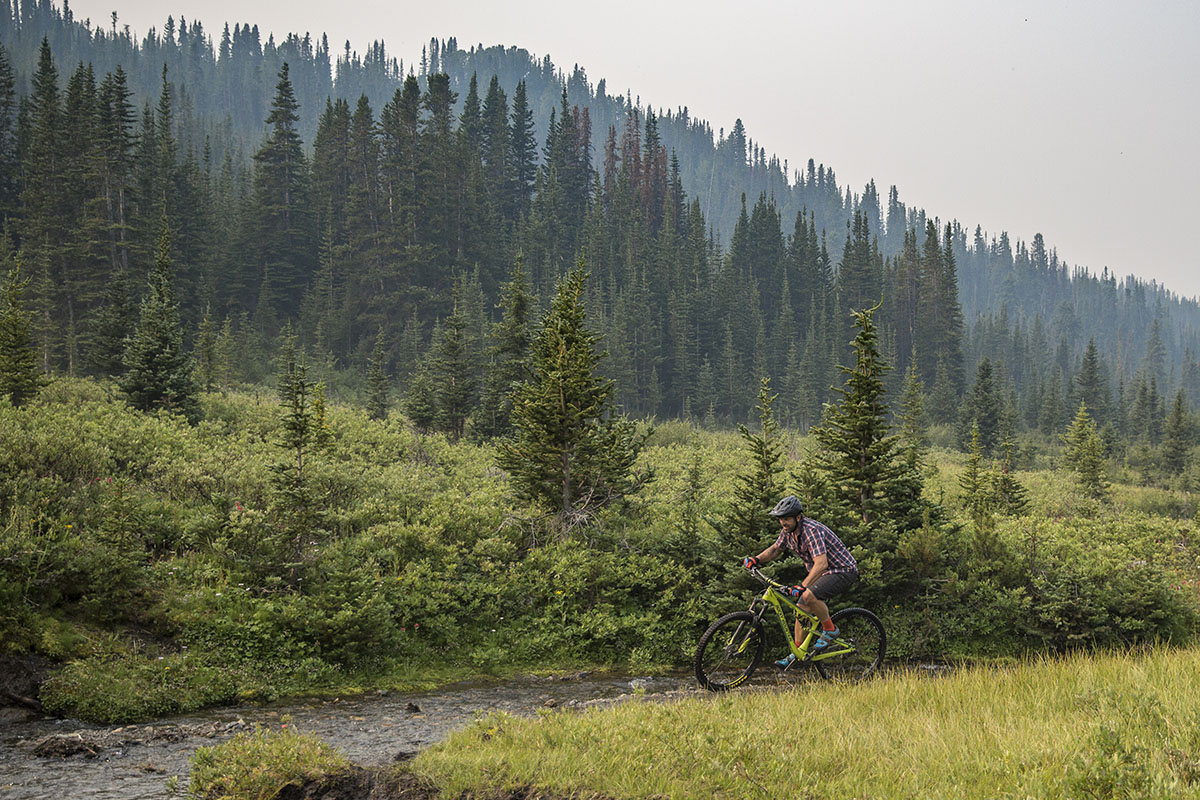
As a first bike or if you’re unsure about how committed you are to the sport, an option under $1,500 makes a whole lot of sense. But if you’re thinking about making a long-term purchase or live in an area that is low on smooth and easy trails—such as the rocky, muddy, and root-filled Pacific Northwest—it may be worth stretching the budget a little to get a more capable steed. As we cover in our round-up of the best ountain bikes under $2,500 , spending that extra $500 to $1,000 does bring a good bump in quality and performance. For one, you get a much wider selection of full-suspension bikes, which are great for tackling technical terrain at speed. Additionally, weight is less of an issue, although you still aren’t seeing anything made with lightweight carbon fiber just yet. And finally, all components are of a higher quality, which translates to not just increased trail performance but also durability and lifespan. For a wider look at the market, see our article: How Much Should You Spend on a Mountain Bike?
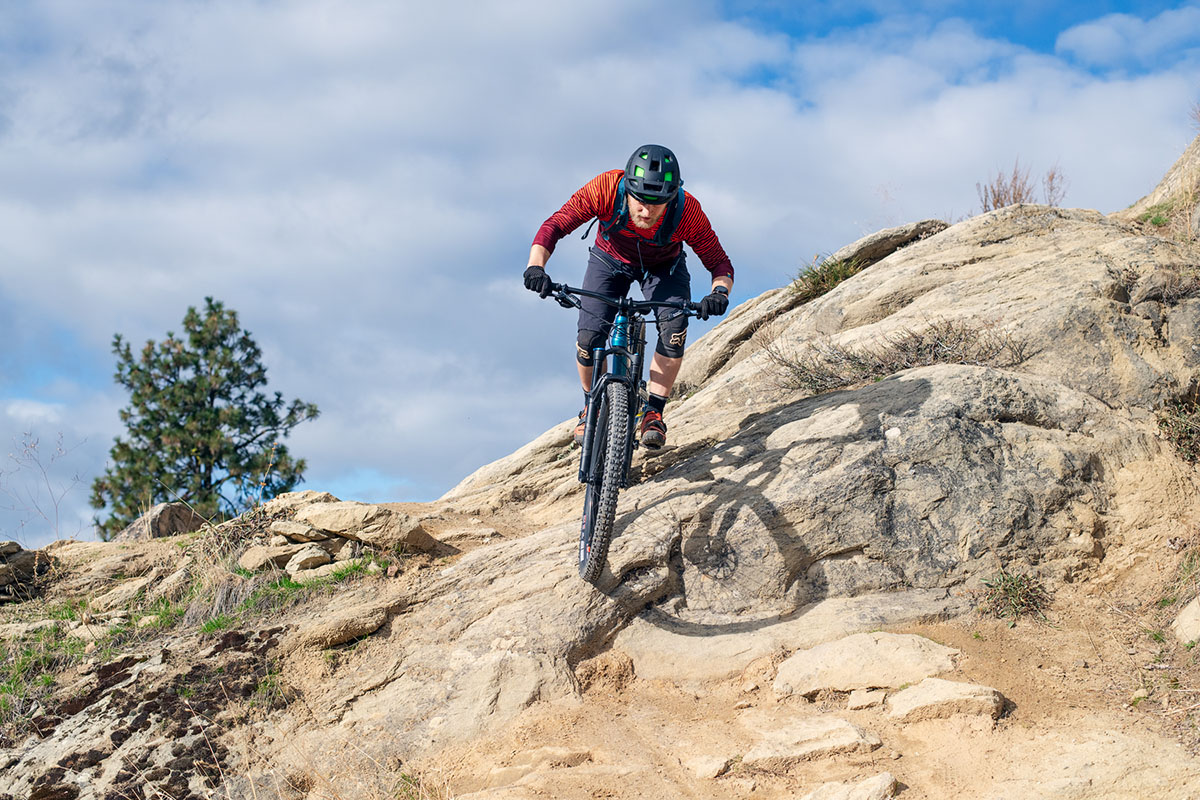
If you’ve been paying attention to the bike industry for the last few years, you’ll have noticed a shift in how bikes are being sold. Many big mountain bike brands like Diamondback, Trek, and Giant now offer online checkout options, and large retailers like REI and Backcountry provide similar services for myriad other brands. Consumer-direct companies like Polygon and Ari have also staked their claim by cutting out the middleman entirely, leading to excellent designs at hard-to-beat prices. . While we love the idea of buying a bike online for its low-pressure atmosphere and convenience, we think it’s important to consider a number of factors first. For example: Does the bike come assembled? Will you have to pay an oversize shipping fee? And most importantly: How can you ensure a good fit before ordering?
One of the first hurdles to buying online is getting the correct size. While nothing beats throwing a leg over a bike in person, companies almost always provide a size chart online that can be pretty reliable for nailing the right fit. Competitive Cyclist takes it one step further with their online fit calculator , which can be an invaluable resource. And if you currently own a bike, take note of how it fits and use that information for your next purchase. All told, the resources are there for you to get a well-sized bike without “trying it on.”
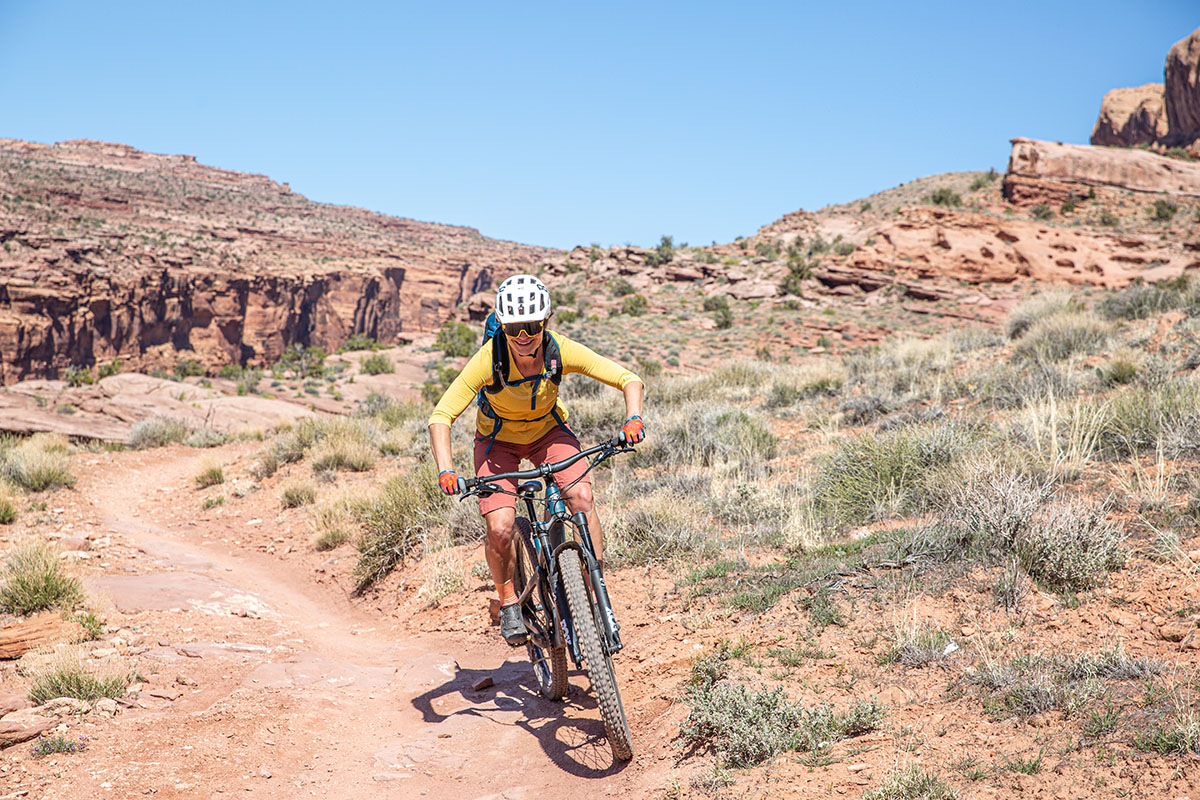
Once you receive the bike on your doorstep, it will require some assembly out of the box. The majority of companies include a few basic tools, but you still need a fair bit of skill and knowledge to safely put your new toy together. If DIY isn’t your forté, many bike shops offer build services, and online programs like Diamondback’s Ready Ride provide stellar customer service and tutorials. And at the other end of the spectrum are companies like REI, which allow you to purchase online and pick up in-store—this may be the best of both worlds as you can ensure a proper fit before taking the bike home. All in all, buying online is not as nerve-wracking as it might seem—just make sure you take the time to do the research, find the right fit, and finally, hedge your bets by purchasing from a reputable retailer with a good return policy.
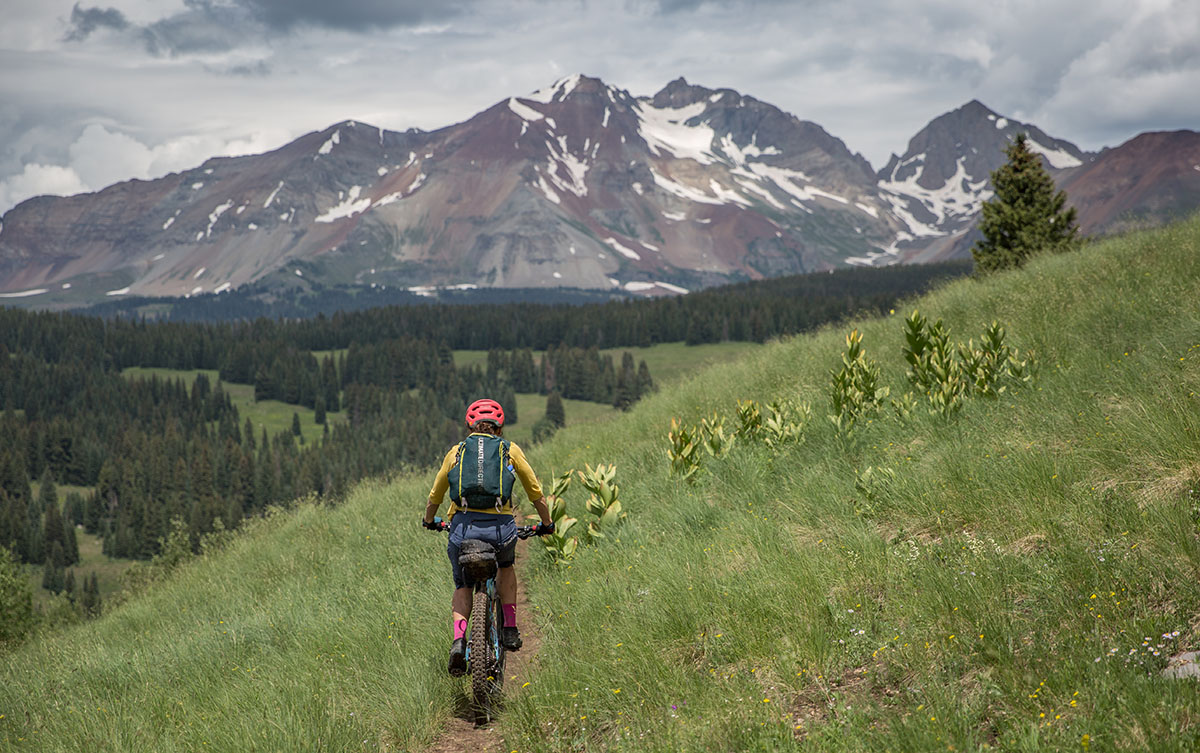
Are Used Mountain Bikes Worth It?
During the research process, there’s a very good chance you’ll consider and possibly start looking into purchasing a used bike. The benefits are fairly clear: Like a car, bikes start losing their value almost immediately, so you can save a good amount of money going this route (or get better components for the same price as new). In addition, shopping used cuts down on waste, and there are a number of ways to safeguard your purchase. The simplest is buying a former rental fleet model from a local shop. This gets you the assurance that the bike has been professionally maintained and serviced, and you’ll have a good idea of its history. It’s true rental bikes can be subjected to rough treatment, but you’ll often get a warranty with your purchase, as well as the comfort in knowing you can go back into the shop if questions or issues come up.
If you’re searching online marketplaces like Craigslist, Pinkbike’s BuySell, or Facebook Marketplace, there are some important things to consider. First, we advise choosing a relatively new bike to maximize lifespan (aluminum frames fatigue over time) and ensure you get modern components like disc brakes and updated geometry. In addition, it’s best to look at the bike in-person to avoid purchasing an unmaintained money pit. If you’re mechanically inclined and familiar with bikes, you can check the frame for cracks and verify the condition of components like the drivetrain, suspension, brakes, and tires. These are very important to inspect as a cracked frame will make the bike unrideable, and replacing items like a front suspension fork can cost hundreds of dollars. If you’re uncomfortable giving this final check, most repair shops will take a look for a nominal fee. In the end, buying used involves a number of extra considerations, but if you’re willing to put in the effort and take on some risk, it’s a nice way to save. Back to Our Top Mountain Bike Picks Back to Our Mountain Bike Comparison Table
Learn More About Outdoor Gear
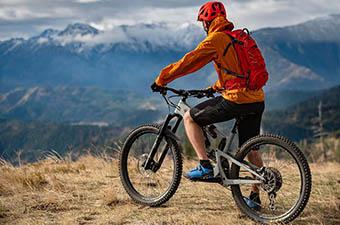
Mountain Biking Gear Reviews
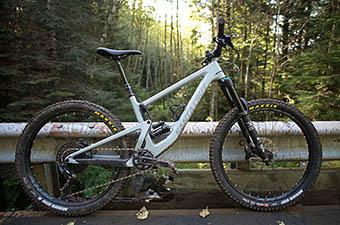
Best Mountain Bike Brands of 2023
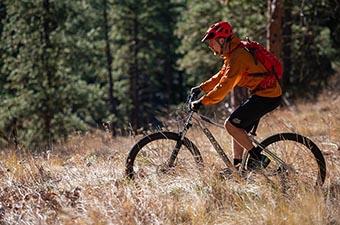
Cannondale Trail Mountain Bike Review
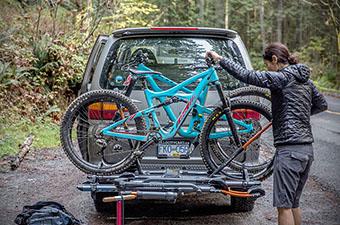
Best Hitch Bike Racks of 2024
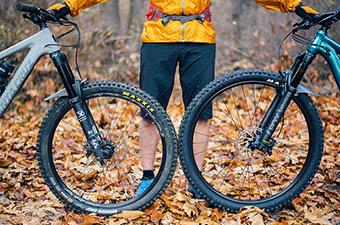
27.5 vs. 29er Mountain Bikes

Best Mountain Bike Helmets of 2024
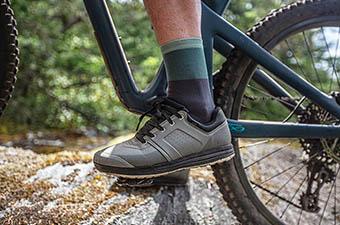
Best Mountain Bike Shoes of 2024
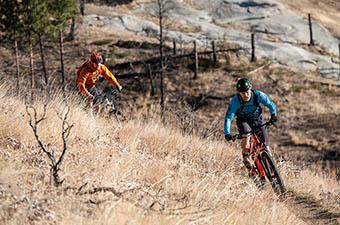
Best Trail Mountain Bikes Under $2,500
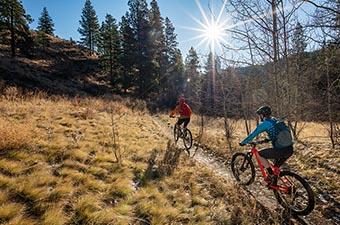
How Much Should You Spend on a Mountain Bike?

Mobile Menu
Megamenu - desktop hamburger menu.
- Hiking Gear
- Backpacking Gear
- Biking Gear
- Camping Gear
- Footwear Reviews
- Climbing Gear
- Skiing Gear
- Winter Gear Reviews
- In-Depth Gear Reviews
- Hiking Shoes
- Hiking Boots
- Trail Running Shoes
- Mountain Bike Shoes
- Approach Shoes
- Climbing Shoes
- Beginner Climbing Shoes
- Mountaineering Boots
- Winter Boots
- Rain Jackets
- Down Jackets
- Synthetic Jackets
- Fleece Jackets
- Hardshell Jackets
- Softshell Jackets
- Windbreaker Jackets
- Ski Jackets
- Winter Jackets
- Hiking Pants
- Hiking Socks
- Trekking Poles
- Baby Carriers
- Running Vests
- Backpacking Tents
- Backpacking Packs
- Backpacking Sleeping Bags
- Backpacking Sleeping Pads
- Backpacking Stoves
- Backpacking Food
- Water Filters
- Altimeter Watches
- Handheld GPS
- Mountain Bike Helmets
- Mountain Bikes
- Mountain Bikes Under $1,000
- Mountain Bikes Under $2,000
- Gravel Bikes
- Bike Brands
- Kids' Bikes
- Hitch Bike Racks
- Camping Tents
- Rooftop Tents
- Camping Sleeping Bags
- Camping Mattresses
- Camping Chairs
- Camping Stoves
- Duffel Bags
- Rock Climbing Shoes
- Climbing Helmets
- Climbing Harnesses
- Climbing Quickdraws
- Belay Devices
- Climbing Ropes
- Climbing Backpacks
- Winter Gloves
- 4-Season Tents
- Ski Helmets
- Ski Goggles
- Ski Backpacks
- All-Mountain Skis
- Ski Bindings
- Backcountry Skis
- Backcountry Ski Boots
- Skis for Beginners
- Hardpack Skis
- Mirrorless Cameras
- Full-Frame Cameras
- DSLR Cameras
- Point-and-Shoot Cameras
- Travel Cameras
- DSLR Lenses
- Mirrorless Lenses
- Lofoten Islands
- Lofoten Hiking
- Hardangervidda
- Jotunheimen
- 10 Great Norway Hikes
- Public Huts
- Torres del Paine
- Chalten and Glaciares
- Lake District
- Patagonia National Park
- Milford Sound
- Abel Tasman
- Marlborough
- Great Walks
- Adventure Towns
Add adventure to your inbox
- Privacy Policy
- Terms of Service
© 2024 Switchback Travel. All Rights Reserved. No part of this site may be reproduced without our written permission.
- Privacy & Policy
- Affiliate Disclosure

Gearbikesreview is audience-supported. When you buy through links on this site, we may earn an affiliate commission that we use for site maintenance. Learn more
Specialized vs Trek vs Giant Bikes: Who Wins the Race?
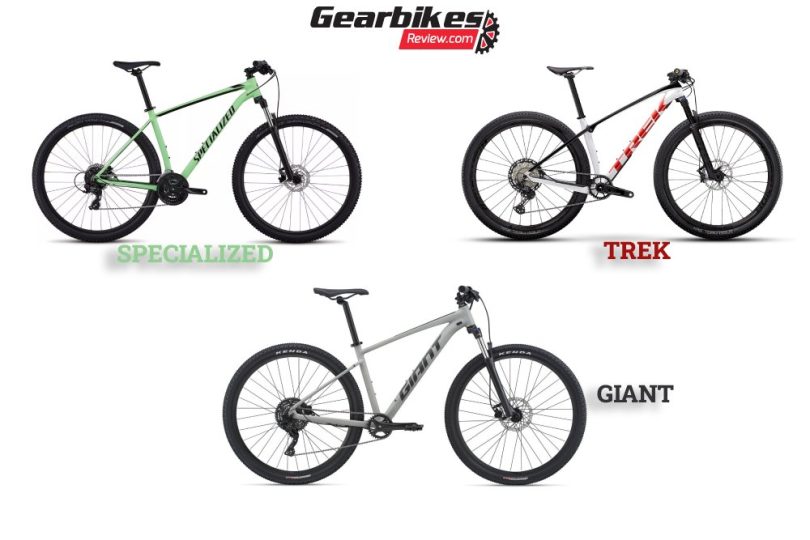
Bikes are a versatile concept. We can ride them to work in the morning or we can throw them around a dirt trail at 70mph. Either way, you need the right bike for the job. So which brand is best?
The trifecta of bike manufacturers: Specialized, Trek, and Giant. Each continues to innovate in the industry and produce very high-quality bikes, with Giant being the largest bike company in the world.
What you drop the cash on depends on what you want and what you expect of each brand.
Specialized
- High-end manufacturer
- Bikes for every rider
- High-quality aluminum manufacturing
- Broad product range
- Big drop in quality at lower price ranges
- Third-party components
- Both entry-level and high-end models
- First-and second-hand warranty
- High-quality build
- Broad range of bikes
- Low depreciation
- Higher chance of needing to upgrade certain components
- Certain models aren’t very customizable
- Largest bike manufacturer in the world
- Bikes made for every kind of ride
- Innovative company with expertly crafted bikes
- Large variety
- Cheaper than other brands
- Quality build
- A go-to for mountain biking
- Some E-bike models suffer unreliability
- Rapid depreciation on most models
Specialized vs Trek vs Giant – What’s the Best?
1. product range.
Specialized manufacture around 220 different bikes across 41 models, offering a bike for any situation whether it’s on-road, trail, electric, or fitness (among others).
Trek produces around 420 different bikes across 10 categories, with bikes for any road, mountain and trail , women and children, and so on.
Giant offers bikes across the subsets of:
- Cross and gravel
As the largest bike manufacturer globally, they have a large number of new and old bikes you can choose from.
It’s difficult to accurately say who offers the widest variety of bikes. Trek certainly produces many different bikes while Specialized clearly offers the broadest variety of models. Too difficult to decide in our opinion!
2. Brand Reputation
Specialized is known for their high-end bikes and focus on the wealthy consumer. They have a strong presence in the trail and racing side of biking sport but have been marred with negative press in the past after taking up several lawsuits over copyright and intellectual property infringements.
Trek are seasoned race winners, with often more than double the race wins than their next competitor, Giant. They’re known for expensive bikes that push the edges of bicycle technology and dominate the North American market.
Giant hasn’t gotten to their position as a leader in bicycle manufacturing unliked. They’re a well-respected and heavily established producer of a wide range of simple and advanced bikes. Given their lower price range, they certainly appeal to a larger number of buyers.
Trek and Giant have seen little bad press over their lifetimes. Between the two, there’s barely a comparison.
Specialized, perhaps suggested by the name, is a high-end manufacturer. They place a lot of emphasis on bike design and technology, often catering more towards those without a money problem.
Trek is very focused on their R&D. Each new bike is an innovation, and it shows in the price and design of the bike. They optimize for everything and continue to push the boundaries of biking tech.
Giant tries to produce for the masses. They have had breakthroughs and continue to make them, but it’s easy to see that getting the bike off the factory floor is more important than keeping it in the design phase.
The design winner depends on what you’re looking for. If you want something unassuming, try Giant’s catalog. If budget isn’t a problem and technology is your deciding factor, Trek or Specialized are bound to have the bike for you.
4. Frame materials engineering and technology
Specialized optimize their frames with SuperLight frame technology, making their alloy frames incredibly light and just as strong
Carbon fiber and aluminum technology is Trek’s focus. They use their proprietary OCLV carbon fiber manufacturing technique and alpha aluminum frames.
They use their innovative Aluxx aluminum in alloy frames and ACT (Advanced Composite Technology) in their carbon frames.
All three brands have impressive materials engineering employed in the manufacture of their bikes, though it seems Specialized lack a dedicated carbon fiber manufacturing process. Giant and Trek both win in their technology.
Specialized tend to use active braking (explained below), isolating the (often hydraulic) disc brakes from the suspension.
Trek solved the problem of interdependence between the brakes and the rear suspension where braking would lock the suspension with the Active Braking Pivot (ABP). ABP keeps the rear suspension working normally whenever the rider hits the brakes.
Trek will often use hydraulic disc brakes on most of their bikes.
Similar to Trek’s ABP, Giant uses their proprietary Maestro braking system that keeps suspension active while braking. They also tend to employ hydraulic disc brakes.
Each brand uses essentially the same technology, mostly spearheaded by Trek.
6. Suspension
Specialized make use of smart suspension technology with adaptive stiffness depending on the terrain. Also, when it comes to their mountain bikes, Specialized uses Future Shock Rear (FSR) technology to smooth out the bumps.
Full-floater and RE:Aktiv suspension technologies are both hallmarks of Trek bikes. Pedaling with a full-floater is much smoother while RE:Aktiv gives you more power uphill.
Another of Trek’s suspension innovations is Active Pivot Point, giving you more clearance over obstacles.
Giant’s patented Maestro system is a useful piece of technology when it comes to pedaling power uphill and during a race.
As usual, Trek bikes are a technology hotbed, featuring many more innovations than their rivals.
7. Drivetrain
- SRAM XX1 Eagle carbon crankset
- SRAM X01 Eagle 10-50t cassette
- Rear SRAM XX1 Eagle derailleur
- Fox Float 34 Factory FIT4 fork
- 130mm travel length
- 12 speed SRAM XO1 crankset
- Float 36 Grip 2 fork on an SRAM XG-1275 Eagle 10-50t cassette
- Rear SRAM Eagle Dub derailleur for incredibly smooth gear shifts
- 12-speed SRAM SX Eagle gear
- 11-50t cassette and SRAM SX Eagle Dub crankset
- Radon 34 Boost fork
- Tubeless-ready Giant XCT rims
- MaxxisForekaster 29” tires
You’ll notice there’s a lot of overlap in the components each brand uses in their bikes. All three opt for the SRAM Eagle gears and/or cassette and crankset. However, only Specialized use the XX1 carbon crankset, making their chainring more durable than their competitors’
8. Warranty
For in-house forks and bike frames, Specialized offers a lifetime warranty, but only a two-year warranty on the frame paint.
For the frame paint and the suspension, Trek has a one-year and five-year warranty respectively. For proprietary swing arms and frames, Trek has a lifetime warranty.
On all frames, Giant has a limited lifetime warranty. This means frames are protected by warranty for manufacturer defects and not wear and tear from ownership. Like the others, Giant offers a one-year warranty on frame paint but a 10-year warranty on forks.
Trek’s warranties cover a larger number of components.
9. Price range
Excluding children’s models (which go down to $190), Specialize produces bikes costing in the range of $500 to $16,000.
Trek will set you back between $600 and $17,200. They have some low-priced entry-level bikes that really fill out the product range.
Giant bikes range in price from around $1,800 to $10,000.
Given Giant’s…giant market share, they’re able to produce at lower costs as they bulk buy components and benefit from large manufacturing economies of scale.
Giant are generally less expensive; however, you can get a small bike suitable for an adult for under $1000 from Specialized. So, when it comes to which is cheaper between Giant and Specialized, it depends what you’re buying.
Key differences at a glance
Specialized, trek, and giant – which one should you buy.
It comes down to what you’re looking for as each brand excels in different areas.
Specialized is a high-quality, high-end manufacturer with a serious focus on a refined, expertly crafted riding experience. Quality drops off at lower price-tags as the passion in Specialized just isn’t there.
Trek explores the cutting-edge, packing as much new technology into each new bike as they can. This is very clearly reflected in the average price of a Trek bike. So, if you’re looking for the most innovative thing money can buy, Trek is the bike for you.
Finally, Giant is the layman’s bike in general. They pour a lot of time and energy into their MTBs, but overall, they make a bike for everyone and every budget.
Q. Is Trek owned by Specialized?
No, Specialized is owned by founder Mark Sinyard. Trek is a subsidiary of Roth Distributing Co.
Q. Where does Specialized produce their bikes?
Specialized produce almost entirely out of Taiwan.
Q. Where does Trek produce their bikes?
Trek manufacturing is across the Netherlands, Germany, Taiwan, and China.
Q. Where does Giant produce their bikes?
Giant is a Taiwanese bike manufacturer with manufacturing facilities in Taiwan, China, Hungary, and the Netherlands.
You may also like

The TST Defender – A Powerful and Plush Fat Tire...

How Long Does a Bike Chain Last? : Pro-backed Guide

How to Find a Stolen Bike? : Things to Do Before...

How to Prepare for a Long Bike Ride? : A Complete Guide

Electric Bike Adventures: Unveiling Scenic Outdoor...

Why is My Bike So Hard to Pedal? : 10 Reasons &...
About the author.
Joshua Fernand
I’m a 38-year-old father of two and an avid adventurer with a history of road bike racing in the mountains. I’m also a member of the Mountain Top Cycling Club, Colorado. I took part in several cross country rides across the states with my cruiser bike.
Tell you what, each tour was over a thousand miles long and it wouldn’t have been possible if I hadn’t studied bike mechanics. Most of the fixes required during my travel had to be fixed by myself. Cruiser became my favorite category since then.
Leave a Comment X
Save my name, email, and website in this browser for the next time I comment.

Giant Vs. Specialized Vs. Trek: Full Comparison
By Author Anna
Posted on Last updated: March 31, 2023
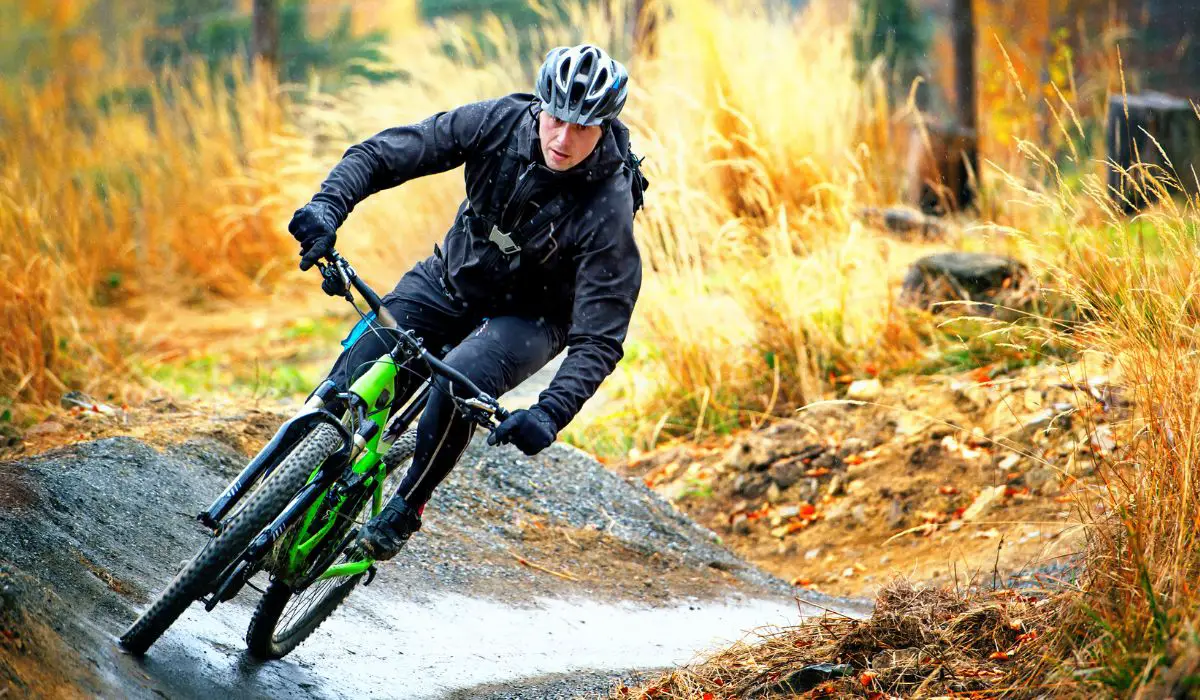
Giant, Specialized, and Trek are huge bicycle brands that are usually your first recommendations in talking with bike mechanics at your local bike shops or from basic Google searches. Although these companies have everything for most people, it’s still helpful to know how they compare.
Giant focuses on options with quality components, even if it’s one or two at every price point. While Trek, and more so Specialized, are more concerned with providing quality performance machines for their mid to high-end clients and often skimp on components on their more affordable builds.
All three of these brands are winners . Each has something to offer, and if you like cycling it’s helpful to note what each leading brand offers .
Giant Vs. Specialized Vs. Trek: History, Reputation, And Resale Value
Like it or not, history can play a vital role in a brand’s reliability . Knowing where a brand came from can help you see where it’s going .
History also spins closely to a company’s reputation . A company that continually strives to produce the best products will have a good reputation that rises above the criticism of being a brand in the public eye.
Giant History, Reputation, And Resale Value
Giant began its global stint by producing bikes for the American Schwinn Bicycle Company . The Taiwanese giant grew more aptly named as it matured to produce bikes and equipment for other recognizable brands such as Scott, Colnago, and even Trek .
After its 1972 birth, the Giant Bicycles brand we now know would come to be in 1981. The cycling market started seeing bikes branded with the Giant brand in the company’s home country . Then it spread to Europe , North America , and other nations .
The company would start foreshadowing its dominance with its involvement in carbon fiber bike production in the late 80s. Giant Bicycles would also start innovating with their Maestro Suspension Technology for offroad riding and all-around performance.
Over the decades, the brand continued ingenuity and bringing high-end performance to budget bikes . The world would grow to consider Giant as the go-to company for riders of all levels , and it’s perhaps this groundwork that would blossom into a reputation of a wide array of bikes at an equally broad price point .
Giant is praised for generally giving cyclist bikes decent components , even if it’s one or two quality components in a relatively benign build.
Although the company doesn’t have the exclusive prestige of specialist bike companies , Giant is a leading cycling corporation that produces long-lasting bikes , and it’s a noteworthy Original Equipment Manufacturer (OEM.)
This company produces mid to high-end bikes that can hold a fair percentage of their original price over the years.
Specialized History, Reputation, And Resale Value
Specialized hasn’t only focused on bike design and product innovation since its start in 1974. Specialized has been proud to promote its humanitarian efforts through programs like Outride to help kids focus on school through cycling .
The Morgan Hill, California company might not measure up in size compared to Giant and Trek. However, its respected brand recognition on the market still makes it a contender not to be overlooked.
The company is innovative , and just a few of its accomplishments undoubtedly prove that.
From the proverbial leftfield, the company satisfied the market with quality tires when there was an obvious need for them. At the behest of everyday riders, Specialized understood the assignment and went on to make some of the first production mountain bikes for offroad cruising .
Specialized would improve and add to the cycling world by also devoting themselves to carbon fiber bikes when the material hadn’t quite infiltrated the general public the way it has today. This may be one of the factors that aided this company to grow to eat at the heels of leading brands, Giant and Trek.
The brand was bought by Meridia Bikes in 2001 and has only expanded its production scope from that point on. Specialized has cultivated a name associated with high-quality builds focusing on light carbon frames and stupendous suspension technology .
Specialized is known for having seemingly exorbitant rates for its bikes, but true to its name, its offerings are specialized and often high-end . This “elitist” status dramatically contributes to their reputation of continually releasing bikes that hold their market value exceptionally well .
Trek History, Reputation, And Resale Value
Trek could probably trademark the spirit of adventure . The company is an accurate representation of family companies that are conceived and nurtured here at home. Trek wasn’t only a dream imagined in Wisconsin; it became the largest cycling company out of the Dairyland State.
Trek’s rise has been as cinematic as its start over a couple of pints and a solid handshake in a bar you’d probably recount your day’s riding. The cycling company would get an early leg-up on its contenders with their long-lived 904 touring bike frames , providing countless miles for avid adventurers and cyclists.
Trek’s devotion to innovation would become easy to follow with its investment in frame designs and emerging cycling technologies . The ever-expanding venture would continue making Hollywood Boulevard strides and go on to create other increasingly recognizable brands such as Bontrager, Electra, and Diamant.
Revolution, comfort, and accessibility are at Trek’s and its subsidiaries’ lead. Trek has invested a lot in its marketing . Combined with their exceptional designs , it has made them one of the most easily recognizable cycling brands .
The company is widely respected and trusted, and its above-average ability to retain its value over the years is one of its best qualities to look out for. Their mid and higher-tier bikes can hold around 50% of their original market value, which is not as typical as you’d think for continually depreciating products.
Giant Vs. Specialized Vs. Trek: Durability, Warranty, And Customer Service
Determining if a bike or product you plan to spend your hard-earned money on will stay with you for the long run is essential. Warranties for these performance machines are also vital to help alleviate the stressors and potential dangers that come with company oversight.

Giant Durability, Warranty, And Customer Service
Giant has proven itself deserving of the number one spot as the most extensive cycling brand in the world. Their bikes have been tested time and again without much faltering. Kids and adults have tested the durability of their bikes, and it has primarily held.
The company is so confident in its builds that they offer a lifetime warranty for its bikes . This warranty covers manufacturer defects on the frame for the original bike purchaser with proof of purchase.
There’s also a limited warranty for faults found on their original equipment and finishes on paint. Giant is humongous and sometimes receives some bad noise for seeming picky with honoring their lifetime warranties .
NOTE: Their online store has been known to dawdle in dealing with some issues. Still, the company primarily deals with problems quickly.
Specialized Durability, Warranty, And Customer Service
Specialized makes bikes that are rated with outstanding durability . The company has amassed respect for its attention to detail and robustness that lasts. The company’s policies are rider-centric, and its lifetime warranty stands as proof of just that. It covers their framesets and branded products .
Their Roval wheels also have a lifetime warranty , and their Specialized-branded products have a two-year warranty that covers faults like paint and visual defects . Their Turbo batteries also have a two-year or 300-charge-cycle warranty .
They also have a two-year warranty from the original date of purchase for subsequent, second-hand owners of Roval or Specialized products. Specialized has similar customer service reception on platforms like :
They are hardly ever based on the quality of their builds. Still, they sometimes receive a beating over their response times and lifetime warranty honoring .
Trek Durability, Warranty, And Customer Service
Trek can’t be much faulted regarding the durability of their frames and overall builds. The company is well-known for being capable of churning out high-quality builds that can last riders for many seasons . Sometimes the line does get slightly blurred between the quality of their handiwork and their knack for excellent marketing .
If nothing else, Trek takes incredible pride in its craftsmanship , as it has been one of its standalone characteristics over the decades. Their lifetime reflects just that.
The warranty applies to their original equipment and aftermarket products . It is non-transferable, meaning that the original buyer needs to be able to prove that it’s been in their care for the entirety of the product’s escapades outside Trek’s factory.
The lifetime warranty benefits their framesets and suspension , as you never know what a couple of hundred miles can unveil.
Trek also has a 2-year warranty on some of their other products, and second-hand owners can get a limited warranty for up to 3 years from the original purchase date of the first-hand owner.
Like all large corporations, Trek has customer satisfaction on either side of the spectrum. Customers do agree that when things go well, they go super smoothly. Still, there are times that hair-pulling can arise from lifetime warranty contests and just general timely replies.
Giant Vs. Specialized Vs. Trek: Accessibility And Servicing
Fortunately, all three of these brands are relatively easy to get your mitts on them. Their extensive inventory also plays well into catering to riders of all levels , and you can get servicing in many shops across the country.

Giant Accessibility And Servicing
Because Giant is a colossal cycling brand, they can ship their bicycles nationwide at a fraction of the cost of other brands like Trek. Even though they don’t have factories here in the States, they can quickly fulfill orders through bike shops nationwide without hindrance.
The brand is also so famous that finding a shop that can service your bike isn’t challenging. Plus, many of Giant’s builds still retain the original simplicity of bikes . You can do your servicing without being thwarted by complicated integrated cable components .
Specialized Accessibility And Servicing
Specialized can hold its head high as one of the largest bike companies in the world and doesn’t trail far behind Giant and Trek. The company’s size is one reason why Specialized bikes are available in many bike outlets worldwide and across the country.
Cyclists shouldn’t encounter much hassle getting their hands on a Specialized bike and servicing it. However, because their lineup has bikes with some advanced engineering , it is challenging to do self-servicing .
Good bike shops with experienced mechanics should have no issues servicing your Specialized bikes. Still, it might get expensive the higher you go up the Specialized hierarchy.
Trek Accessibility And Servicing
Trek does most of its production in-country, and you can walk into many bike shops and ride off with a Trek bike. Being the second largest cycling brand also affords them a far-reaching understanding of their products.
If stock isn’t an issue, you shouldn’t have any trouble getting your hands on one of Trek’s bikes and services. The builds are also straightforward enough that home tinkerers can do servicing themselves .
Giant Vs. Specialized Vs. Trek: Design, Components, And Technologies
These three leading companies can’t be much faulted for their:
- choice of components
- integrated technologies
Trek’s track record is that of a company that focuses on precision and perfected only technologies that have proven revolutionary in the game.
Specialized also seemingly focuses less on trying out every idea in the hopes of lowering the charge to the customers but works to improve what they are already assets to them.
On the other hand, Giant is so big that it can afford to play around with multiple ideas and works to create something for everyone . Giant’s list of tech and designs on their info page could fill a sizeable pamphlet.
Giant Design, Components, And Technologies
Giant seems to focus on making a wide range of bikes to make cycling accessible to as diverse a market as possible while focusing on comfort and quality components .
The company’s designs are a bit flashier than Specialized or Trek. That confident philosophy is reflected in their many technological ventures .
Advanced Composite Technology
Giant uses High-Performance Grade raw carbon to make their unique carbon material. Their focus is on pushing it on the stiffness-to-weight ratio . The company uses Modified Monocoque Construction for a seamless single-piece fabrication of the front triangle on some of their frames.
The company also expands on this technology with its:
- Advanced SL
- Forged Composite Technology
These two technologies are for Giant’s high-end bikes and offer benefits in terms of:
Aluxx Aluminum Technology
Giant reanimates 6061 aluminum alloy from its impending retirement. Using single-butted aluminum tubing, Giant can produce relatively lightweight framesets that are stronger than they ought to be.
Giant again expands this line of material to use on their more esteemed bikes under:
- Aluxx SLR Aluminum Technology
These are performance-grade upgrades to the humble, tried-and-true aluminum material . Giant does it so well that it looks pristine and performs as such .
Comax Composite Technology
Giant’s propriety mix of quality fiber-reinforced polymer and pure carbon makes for a versatile carbon fiber composite. Their engineering of this material allows for the best rider comfort with as little weight as possible while not compromising performance efficiency.
Maestro Suspension Technology
This simulated single floating suspension creates a suspension system on offroad bikes that is one of Giant’s most:
- independent
- fully active
- pedal-efficient
Crest 34 Suspension Fork
Giant effortlessly flaunts decades’ worth of research and work for response and control that is:
- comfortable
Giant touts this suspension fork as one that asserts its unmatched control and stiffness effortlessly against other suspension forks at similar price points.
Specialized Design, Components, And Technologies
Specialized is known for its simple but technologically loaded designs . Everything from their material to the internals of their frames is optimized and dialed in . The cycling company is constantly working to make their bikes:
- appear more straightforward
Brain Technology
The Brain technology that Specialized uses on some prominent bikes adds intelligence to shock absorption . This suspension technology provided by Specialized responds faster to terrain demands and responds intelligently not to seep out the gas under your wheels.
Over two decades of tweaking and working on this tech helped Specialized fine-tune it to think independently from the rider and adjust from the firm to act in response for optimal control and efficiency .
FACT Carbon Fiber
The Specialized Functional Advanced Composite Technology (FACT) carbon process doesn’t only start and end with the carbon composite material. Still, it is a holistic procedure of using only the best material with industry-leading manufacturing processes.
The FACT carbon fiber is perhaps one of the technologies that have grown to cement it as a formidable producer of carbon frames .
Öhlins Shock Technology
Öhlins Shocks offer seemingly limitless adjustability , and the brand produces an incredibly smooth-feeling and high-performing suspension system .
Specialized managed to capitalize on Öhlins’ innovation by having an exclusive partnership with them which is a big plus for both brands.
Rider-First Engineered
The Specialized trademarked Rider-First Engineered focuses on a data-driven frame design inspired by the company’s relationship with McLaren. The company’s engineering labs look at all the potential pain points of the rider and work to rectify any lack of reliable data.
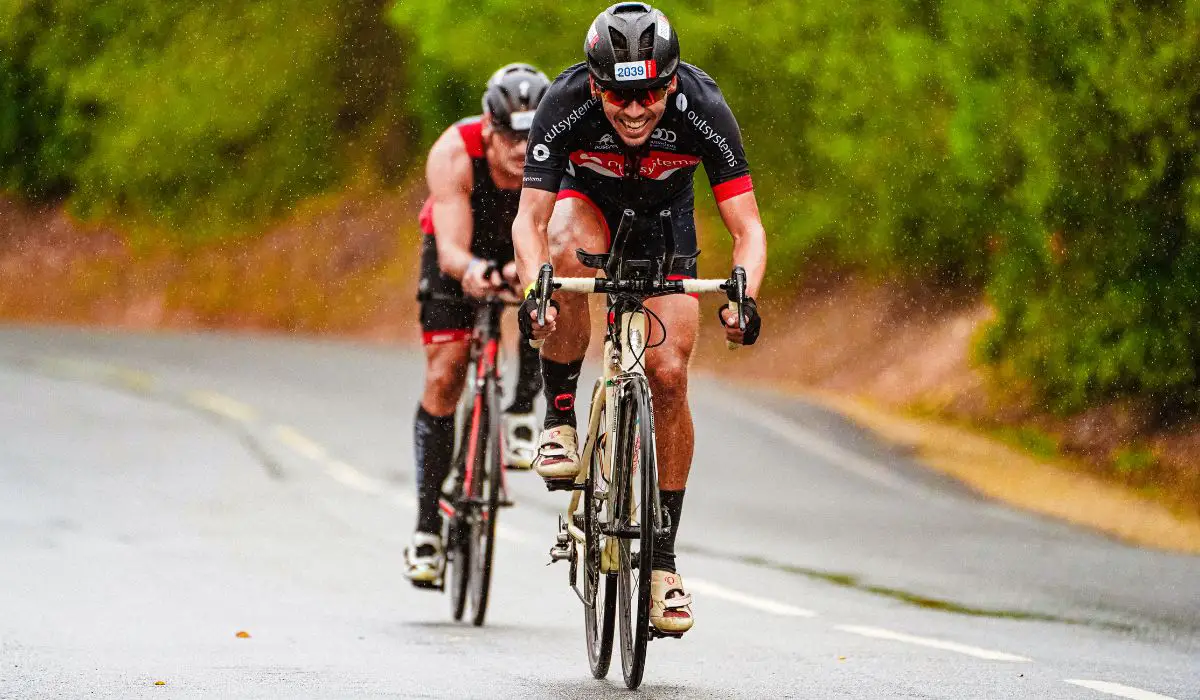
Trek Design, Components, And Technologies
Trek has quality frame designs and takes pride in providing clean and simple lines for its bike silhouette. Their components and mechanics are based on processes they’ve been building on for years.
Alpha Aluminum
Trek says their Alpha Aluminum is their most advanced aluminum concoction . The company has invested innumerable hours into its metallurgical science to produce frames that are robust and light enough to compete against carbon frames.
Trek has squeezed every ounce of performance out of their aluminum for a decreased weight and maximum stiffness on only the places that call for it.
Active Braking Pivot
This simple yet masterful execution of Trek’s suspension system allows riders to brake efficiently without locking out the rear suspension on the mountain bike equipped with this design.
With a simple realignment of the rear suspension pivot , riders can go ham on braking without losing momentum on dicey trails.
RE: Aktiv With Thru Shaft
This setup allows riders to forget that momentary lag of engagement on the shock system , whatever the terrain. Trek is constantly working and reworking its suspension systems to only be there from their input into the ride .
Re: Aktiv has such close tracking of the trail that it almost feels like it’s reading the future .
Trek’s IsoSpeed allows the company’s engineering department to retain the classic diamond-shaped frameset where it should be while adding a beautiful level of:
- predictable stiffness
- frame compliance
Giant Vs. Specialized Vs. Trek: Bike Range And Prices
Giant has one of the largest , if not the largest, spread of bike types at every price . Companies like Giant put mass-produced, discount store bikes in the area they belong in.
Specialized and Trek are more bourgeois brands . Although they offer entry-level bikes, they often all seem like afterthought capitalization compared to their mid-tier and higher-end offerings .
Giant Range And Prices
Giant has pretty much every type of modern bike you can think of. Without much effort, you can find a bike that can be a good companion for several thousand miles specially designed for:
Their electric bike range has been building up steam over the years, continually decreasing prices while improving . The company has road bikes ranging from as low as around $500 to around $12,500 .
Specialized Range And Prices
Specialized also carries a wide array of bikes at all price points . The company provides everything seasoned cyclists and newbies could ever want. Their pure-bred road bikes start at around $1,000 and can dance around the $15,000 mark .
Fortunately, the company knew to not only focus on mid-tier and up ranges . They also offer other hybrid and mountain bikes for around $600 , even though some of these bikes seem to constantly remind you that they are entry-level with the use of questionable components for the price point and the age.
Trek Range And Prices
Trek has a respected lineup of touring and mountain bikes with stellar suspension . Their focus is commendable on these bikes:
- women-centric
Although there’s always a harmonious chorus of getting what you pay for , Trek does get some flak for not fully catering to people with newly emerging cycling interests. Their cheapest road bikes sit around the $1,000 mark and gallop past $14,000 .
The company does properly dip its toe into the entry market with its hybrid bikes with price tags as low as around $600 . However, these bikes often flounder from their lackluster component assembly .
Giant Vs. Specialized Vs. Trek: Pros And Cons
Each of these three companies has something to offer the discerning customer , and you shouldn’t be in much want with any purchase of the brands. It’s more important to know what you want for:
- your budget
- what you can’t afford to include in that assembly

Giant Pros And Cons
It’s widely agreed upon that Giant produces comfortable rides . The entirety of their range is appealing to even the most starved pockets. The vast store of bike types at all price points makes the company a one-stop shop for beginner and more experienced riders .
The company is also respected for selling dead-set products to be bang on the buck . One of the few issues is their propensity to slap one or two name-brand components on lacking builds instead of making the bike more well-rounded.
However, the lifetime warranty on their frames is always comforting because it gives riders a sense of security in their bikes across the board.
Specialized Pros And Cons
Specialized continually cranks out some interstellar builds loved worldwide , especially regarding their S-Works line . Perhaps their high esteem is even more glaring when the company “phones it in” regarding the assembly of components on their entry-level bikes .
Fortunately, mid-tier Specialized bikes usually have a fantastic assortment of components. Another fault with Specialized is that they don’t always have products that match their high price , especially with their mid-tier bikes .
Specialized also has a body geometry design that’s in tune with their riders and can fit like a glove if you take the time to do a proper fitting.
Trek Pros And Cons
Trek has invested a lot of dollars and hours into advertising its brand and saturating the market for recognizability. Their marketing efforts have duly paid off as Trek is now one of the most recognizable cycling brands anywhere in the world .
Unfortunately, many now feel like they are paying more for brand recognizability than the quality craftsmanship from the Trek they grew up with. The lifetime warranty of Trek bikes serves as a small testament to their unwavering dedication to reliable builds and innovative designs .
The company isn’t as affordable as Giant, but it is an American-made brand that stands proud of the fact.
To reiterate, Giant, Trek, and Specialized are leading bike brands for a reason . They are such close matches that an affordable purchase from any of the brands shouldn’t be a disappointment.
For cyclists who have been on the game for some time, it usually comes down to taste and knowing what each company skimps or spurges on .
You might also be interested in:
Giant Vs. Trek Vs. Schwinn
Share me if you found me helpful!


Trek vs Giant vs Specialized vs Cannondale – Which is the Ideal Bike?
Riding a bike is extremely liberating and refreshing to the mind, body, and soul. Which between the Trek, Giant, Specialized, or Cannondale is the ideal bike for you?
Take a minute and think of your ideal cycling routine and picture yourself riding off into the horizon with the wind against your cheeks and flowing through your hair. Hold that image and think of the bike type you are riding.
Live in that moment for a while and hold onto that image. That is exactly how I envisioned my first bike ride and now I’m here to pick out one between these four great choices. Having some years of cycling experience, it shouldn’t be much of a hassle.
Table of Contents
What is the difference between Trek vs Giant vs Specialized vs Cannondale Bikes?
Trek vs giant vs specialized vs cannondale bike: how do they compare, frame and design.
Trek offers longer-travel at 120mm front and 130mm rear which is a bit large. There is a 140mm RockShox or FOX 34 or FOX 35 fork which is stiffer with the frame measuring anywhere between 10 to 20mm.
Giant’s bike model has a SuntourRaidon rear suspension and it works on the Maestro designed four-pivot point system that is a trademark of Giant premium bikes. Relying on the geometrical positioning of the aluminum Giant Connect seat stays and chainstays, this is essentially a single-pivot shock-absorbing component. It has 120mm travel.
Designed in carbon fiber material, the Specialized bike features a Syntace MegaForce2 stem and a specialized command seat post and a comfortable Phenom Expert type saddle. It also features threaded SRAM bottom bracket shells.
Cannondale’s head angle measures 66 degrees and is combined with 51mm offset forks for 29 inch and 44mm for the 27.5 inch wheel. The trail is 112mm in length, chainstay is 435mm and the arms-reach is 430mm. The boost rear axle measures 12x148mm is a standard Cannondale measurement.
Trek bike stand out as the exception by offering 130mm rear travel as compared to the Giant, Specialized and Cannondale brands which have a shorter rear travel at 120mm.
Trek bikes have a travel length of 130mm. They offer 12 speeds on an SRAM XO1 Eagle crankset with a Float 36 Grip 2 fork running on the SRAM XG-1275 Eagle 10-50t cassette and a rear SRAM Eagle Dub derailleur for easy gear shifting.
Giant’s aluminum bike frame is fitted with a 12-speed SRAM SX Eagle gear system that operates on an 11-50t cassette and SRAM SX Eagle Dub crankset supported by a Radon 34 Boost fork. Featuring tubeless-ready Giant XCT rims over MaxxisForekaster 29-inch tires, you are protected from pinch flats.
Specialized bikes are available in carbon fiber and their frame is supportive of the SRAM XX1 Eagle cranks and chain fitted into the SRAM X01 Eagle 10-50t cassette and a rear SRAM XX1 Eagle derailleur resting on a Fox Float 34 Factory FIT4 fork.
Cannondale bikes have a 120mm travel. The drivetrain system is the SRAM GX Eagle 12-speed and is fitted with Shimano 1×10 groupset, RockShox Recon fork , and a fixed seat post. A full carbon frame has Shimano’s XTR 1×12 group, Fox Transfer Dropper post, and a FOX 34 fork.
With all four bike brands settling for the SRAM Eagle gears in varied models, the Specialized bikes are better placed because they have the more durable Eagle XX1 carbon-built chainring system.
Extra Features
A trap-door is built into the Trek’s downtube which allows you to have secret storage space using an organizer roll designed with pockets to fit a tube, inflator head, cartridge, and tire lever. For your water bottle, a sideload cage is also built into the frame.
Giant bikes feature the trademark Maestro designed four-point fork. Giant Connect is the type of saddle used that provides a stable platform for the Giant Contact saddle that is comfortable to ride on for hours
Specialized bikes have specialized SIP grips for maximum security while riding and the Command Post seat post is raised 160mm to support the Phenom Expert saddle.
Cannondale frames use a boost rear axle, fit a water bottle, feature internal cable routing and the carbon frames are fitted with full-length tubes to minimize rattling and assist with routing.
Trek’s secret storage and Cannondale’s Ai offset function give them a leg up over the Giant and Specialized brands which focus more on providing a comfortable saddle.
Trek vs Giant vs Specialized vs Cannondale Bike: A comparison Overview
Trek bike review.
With the FOX 36 GRIP 2 damper, the Trek mountain bike is quite sturdy which keeps you on the desired track making the experience exciting yet controlled.
It lacks a decent dropper making the Bontrager post sticky and sluggish in performance.The bike weighs 30 pounds which is considerably light.
- Expanded range available
- 140mm forks and 2.6 inch tires
- Rear suspension
- FOX 36 fork
- Sticky Bontrager stock post
Giant Bike Review
This bike model has a Suntour rear suspension and it works on the Maestro designed four-pivot point system that is a trademark of Giant premium. Relying on the geometrical positioning of the aluminum seat stays and chainstays, this is essentially a single-pivot shock-absorbing component. It has 120mm travel.
It comes with a single chainring at the front and a rear-mounted derailleur. With 12-speeds on an 11-50t cassette and running on MaxxisForekaster tubeless tires.
- Great roll-over on rocky terrain
- Wide gear range
- No dropper post
Specialized Bike Review
Designed in carbon fiber material, it minimizes proprietary extras for a simple build that repairs easily and is low maintenance. It also features threaded bottom bracket shells.
Specialized Horst link FSR provides deep suspension with fine-tuning capabilities and an SRAM XXI drivetrain with rubber padded bumper which quietens the bike’s operations and keeps the chainstay well covered from effects of external elements.
- Reactive to corners FSR Deep Suspension
- Rubber padded bumper
- Repeated stutter-bumps and holes
- Gripton tires feel sketchy
Cannondale Bike Review
This bike is designed into a dual-link, four-bar suspension that is very responsive and capable of handling all types of terrain. It is a very sensitive bike that offers riders lots of traction for greater acceleration and braking power.
This four-bar system is perfect for mountain bikes because when braking, it minimizes the anti-rise effects which increase the responsiveness of the suspension making for great traction and control. However, this also increases the forward weight transfer created when braking so be cautious.
- Minimized drag
- Seat Post and Stays are designed to comply
- Integrated front wheel sensors
- Doesn’t work with derailleur
Conclusion
Trek bikes are perfect for hard terrain, Giant bikes have amazing roll-over in varied terrains, Specialized bikes are ideal for maneuvering sharp corners and the Cannondale bike is dominated by aerodynamics.
Verdict: Which is better – Trek vs Giant vs Specialized vs Cannondale Bike
Trek bikes are the better option for added features and benefits. If you love a bike with great extras and value for money, this is it!
What does the shock mount on the Trek bike do?
It minimizes the frame’s rigidity. Which guarantees smoother mobility by absorbing road vibration.
Why is a four-point fork better than a single fork?
Because they minimize bobbing that then hampers your cadence.
What is better Cannondale or Giant?
Both Cannondale and Giant are reputable and respected bike brands that produce high-quality bikes. It is difficult to say which brand is better as it depends on individual preferences and needs.
Cannondale is known for its innovative designs and use of cutting-edge technology, such as the HollowGram crankset and the Lefty suspension fork. Cannondale bikes are often praised for their stiffness, responsiveness, and comfort, and are popular among professional cyclists.
Giant, on the other hand, offers a wide range of bikes at all price points, from entry-level to high-end models. Giant bikes are known for their durability, reliability, and value for money, and are often praised for their smooth ride quality.
Is A Trek Better Than Specialised?
The choice on which one you prefer depends on you. Both brands offer a wide range of bikes at all price points, from entry-level to high-end models, and each brand is known for its own unique features, designs, and technologies.
Trek is known for its innovative designs and use of cutting-edge technology, such as the IsoSpeed decoupler and the OCLV carbon fiber frame. Trek bikes are often praised for their stiffness, responsiveness, and comfort, and are popular among professional cyclists.
Specialized, on the other hand, is known for its Body Geometry Fit system, which aims to provide a comfortable and efficient riding position. Specialized bikes are often praised for their lightweight, aerodynamic designs, and are popular among triathletes and road racers.
Is Giant and Cannondale The Same?
No, Giant and Cannondale are not the same company. They are two separate and independent bike brands that compete with each other in the market.
Giant Manufacturing Co. Ltd. is a Taiwanese company that was founded in 1972 and is one of the largest bicycle manufacturers in the world. Giant produces a wide range of bikes, including road bikes, mountain bikes, hybrid bikes, and electric bikes, and offers models at different price points.
Cannondale Bicycle Corporation is an American company that was founded in 1971 and is known for its innovative designs and use of cutting-edge technology. Cannondale produces a wide range of bikes, including road bikes, mountain bikes, and electric bikes, and is popular among professional cyclists.
Is Giant Better Than Trek?
Both bikes have their perks. Giant is known for offering a wide selection of top-end bikes at friendlier prices than Trek . They are also known for having slightly better components on their bikes, as they are the biggest manufacturer and can purchase parts less expensively. Giant is also known as one of the best budget bike brands.
In contrast, Trek is known for its innovative designs and use of cutting-edge technology, such as the IsoSpeed decoupler and the OCLV carbon fiber frame. Trek bikes are often praised for their stiffness, responsiveness, and comfort, and are popular among professional cyclists.


IMAGES
VIDEO
COMMENTS
Frame Strength. Trek prioritizes in better strength-to-weight ratio, enabling its lightweight bikes to hold up to 300 pounds. While some Giant bikes can hold that much, a majority hold less. Verdict - Due to having a higher strength-to-weight ratio, Trek has stronger frames than Giant. 4.
Trek vs. Giant Brand and History Overview Trek Bikes Brief History. Founded: 1975 Founded by: Dick Burke and Bevil Hogg Headquarters: Waterloo, Wisconsin, USA US Market share: 22.5% (2023) Instagram following: 2 Million Followers In 1975, Dick Burke and Bevil Hogg created what is now one of the world's most iconic brands—Trek Bikes.Within four years starting with its hand-brazed steel ...
The Main Differences Between Trek vs Giant are: Trek prices are according to the types of integrated features they come with, whereas Giant bikes are a lot more affordable. Trek uses Giant frames to manufacture some of their mountain bike models, whereas Giant is the primary producer of mountain bike frames. Trek bikes are considered to be more ...
Trek's lineup is built for comfort and longevity and their midrange to high-end bikes model that sentiment. Their more expensive lines hold at least 50% of their value, which is higher than average. Customer service is important to both Giant and Trek brands. Durability, Warranty, and Customer Service of Giant Vs.
Trek, on the other hand, offers versatile bikes adept at tackling varied terrains. Giant's reputation hinges on crafting bikes that are both robust and dependable. In the racing circuit, GT and Trek seem to be the crowd favorites. GT leans towards a more assertive riding approach, whereas Trek strikes a balanced chord.
Giant VS Trek Mountain Bikes. Both are major mountain bike brands and leaders in the industry, for the right price you get an awesome bike. Some Trek MTB frames are in fact from Giant! Both make great bikes and crappy bikes depending on the price range, anything over $800 is often far superior to a $600-$700 bike.
For the same priced bike from giant and trek, Giant's bike might have better quality parts. Since they get their components in bulk, they can put the same high-quality elements in cheaper bikes too. In the meantime, Trek will have to settle for lower quality parts to reduce its cost and set a low price for the bike.
Credit: Trek. The Trek Madone is a legendary line of bicycles, first released during the Armstrong era and named for one of Armstrong's favorite climbs, the Col de la Madone.. The newest model, the Madone SLR 9, is Trek's flagship aero road bike. Utilizing the latest version of Trek's proprietary OCLV carbon fiber, it remains very light, at 7.3 kg, though still 400 g more than the Propel ...
Overall both the trek and Giant bikes have comparatively similar depreciation and resale value, but I had personally found it easy to buy or sell used Trek Mountain Bikes than from the Giant brand. About the brand: Giant vs Trek Bikes. Giant and Trek are both well-renowned brands in the mountain bike industry.
View price on Amazon Conclusion The Trek Domane SL 5 is designed for riders who have speed and comfort at the top of their list of priorities. In this Trek vs. Giant Mountain bikes comparison, Trek’s product emerges as the winner. It is ideal for the comfort conscious rider. Its lightweight carbon frame makes it durable and hardy while remaining light enough to take on high speeds.
Technology. Trek was founded by Dick Burke in order to address the lack of high-performance and racing bikes manufactured in the United States. He then began to design and build bikes that brought numerous innovations into the industry Trusted Source Trek Bicycle Corporation - Wikipedia Trek bicycles are marketed through 1,700 independently owned bicycle shops across North America ...
Trek Vs Giant Mountain Bikes [The Ultimate Comparison Guide] By MirZa ZeeShan June 3, 2023 June 3, 2023. Are you in the market for a new mountain bike but can't decide between Trek and Giant? The competition between these two major brands has been ongoing for decades, with each company claiming to have the best bikes on the market. But which ...
Trek is well known as a source for high-end, quality mountain bikes. They have mountain bikes priced all over the spectrum—some great, some bad, and some absolutely incredible. Giant: Giant Bicycles was started in 1972 by a group of Tour de France racers. This company is far more focused on mountain bikes alone.
Giant Vs. Trek - Frames. Trek led the way in the move from steel frames to aluminum and carbon fiber with two market-leading innovations:. OCLV Carbon. OCLV stands for Optimum Compaction Low Void.The technology was developed in 1991 and gave Trek the lead in lightweight but stiff, strong frames for their mountain bikes.. Alpha Aluminum
The Differences Between Giant Mountain Bikes and Trek. Both are major mountain bike brands and leaders in the industry, for the right price you get an awesome bike. Some Trek frames are in fact from Giant! Both make great bikes and crappy bikes depending on the price range, anything over $800 is often far superior to a $600-$700 bike.
Yes, as the world's largest manufacturer of bicycles, Giant bikes are good. Whether they are better than Trek, depends on your budget, riding style and personal preference. Giant Bicycles, as the biggest bike brand in the world, is also known as one of the best budget bike brands. It consistently gets high ratings in its mountain and hybrid ...
Trek also offers a lifetime warranty for its frames. However, the full suspension bikes have a warranty of just 5 years. The aluminum frames have a warranty of three years and the carbon frames, have a maximum 2 years warranty. For the paint finish, you will get only a year's warranty, just like Giant.
Pricing and Affordability. Giant offers the most affordable entry-level road and mountain bikes, like the Escape 3 hybrid for under $500.. Specialized bike pricing starts around $1,000 for basic road models up to $10,000 for high-end builds.. Trek also has a few models around $600 but most range from $1,200 to $12,000 for carbon fiber performance bikes.
Sneaking just under our $1,000 cap is the brand's versatile DRT 1.2. This bike is a great option for beginner- and intermediate-level riders with stable and grippy 2.4-inch-wide tires, thru-axles for added stiffness, and a solid 120 millimeters of front suspension (20mm more than most options on this list).
Trek will often use hydraulic disc brakes on most of their bikes. Giant. Similar to Trek's ABP, Giant uses their proprietary Maestro braking system that keeps suspension active while braking. They also tend to employ hydraulic disc brakes. Winner. Each brand uses essentially the same technology, mostly spearheaded by Trek. 6. Suspension ...
Giant seems to focus on making a wide range of bikes to make cycling accessible to as diverse a market as possible while focusing on comfort and quality components. The company's designs are a bit flashier than Specialized or Trek. That confident philosophy is reflected in their many technological ventures.
Trek vs Giant vs Specialized vs Cannondale Bike: How do they compare Frame and Design. Trek offers longer-travel at 120mm front and 130mm rear which is a bit large. ... Giant produces a wide range of bikes, including road bikes, mountain bikes, hybrid bikes, and electric bikes, and offers models at different price points. ...